June 14, 2007
Conor McGarrigle's

Joyce Walks
Joyce Walks a new project by Conor McGarrigle: Because somewhere, sometimes it's always Bloomsday. Every June 16th in Dublin Joyce enthusiasts celebrate Bloomsday with re-enactments of events from Ulysses. Unfortunately not everyone can be in Dublin for that day but why should that stop you celebrating Bloomsday where you want when you want. So as Bloomsday approaches we announce Joyce Walks a web 2.0 service which will let you map routes from Ulysses to any city in the world so that Bloomsday can be celebrated in any place at any time.
Joyce Walks is a psychogeographical tool which generates walking maps based on routes from James Joyce's Ulysses in any city in the world using Google Maps. The system prints maps to be used as the basis of walks exploring the city of your choice and generates mashups using your pictures and videos documenting these walks to share with other users.
Inspired by the Situationist idea of the Derive Joyce Walks seeks to provide the walker a means of exploring the urban environment which is unique, truly random but removed from a reliance on chance. Although based on a fixed route each map generated is unique as it is based on an individual selection by the user of the center point of their chosen city thus every map provides the walker a means of exploring the urban environment which although based on routes which are predetermined according to a strict adherence to a text is individual to them. Of course removing these routes from Dublin removes specific spatial relevance but they still retain an aura of association which creates a link between the locations and Joycean Dublin.
Joyce Walks saves every map generated to a database. These walks, in addition to being specific to their creator, form part of a continuum where each specific walk performed by any user of the system is added to an searchable archive of unique performative walks from around the world. This archive over time will become a tool to explore and view many unique walks in many cities around the world creating a veritable web 2.0 psychogeographical rough guide.
Requirements: Firefox or Safari browser , in this beta version Internet Explorer is not supported, support for IE will be added shortly. Due to copyright issues between Google and the British Ordnance Survey cities in the UK and Northern Ireland are not searchable, we are working to find a solution for this.
Posted by jo at 06:03 PM | Comments (0)
April 21, 2007
LOCATING OURSELVES
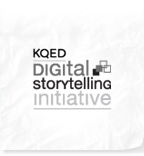
A KQED Digital Storytelling Summit
LOCATING OURSELVES: A KQED Digital Storytelling Summit :: May 26, 2007; 10-4 pm (Bonus: Friday evening, May 25, 6-8 pm party and showcase celebrating the Coming to California contest) :: KQED, 2601 Mariposa Street, SF :: All are welcome ::Lunch provided, so please RSVP: lrule[at]kqed.org
Come participate in an exploration of the current Digital Storytelling Landsacpe, with special attention given to place-based storytelling, locative media, and mobile technologies. So much is happening, and it's been a long while since we've come together to discuss where we might be going.
Many of us are practitioners, so please let us know what themes you'd like to see explored. Email Leslie Rule at lrule[at]kqed.org. We also invite you to join us Friday evening as we celebrate our high school digital storytellers who participated in the 5th Annual Coming to California Digital Storytelling Contest.
Posted by jo at 08:21 AM | Comments (0)
April 20, 2007
Prototypes of Moving Pictures
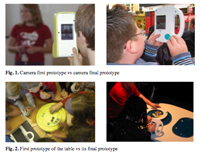
A Spontaneous + Collaborative Approach to Video Creation
The full paper written for Interact 2007 with http://web.media.mit.edu/~ishii/ is accepted! It shows how Textable Movie designed for facilitating video production has informed Moving Pictures. It presents a mechanism to seamlessly interface the various parts in video production and present our observations. The conference topic is socially-responsible interaction. So see you in Rio de Janeiro in September!
Abstract: The paper presents a novel approach to collecting, editing and performing visual and sound clips in real time. The cumbersome process of capturing and editing becomes fluid in the improvisation of a story, and accessible as a way to create a final movie. It is shown how a graphical interface created for video production informs the design of a tangible environment that provides a spontaneous and collaborative approach to video creation, selection and sequencing. Iterative design process, participatory design sessions and workshop observations with 10-12 year old users from Sweden and Ireland are discussed. The limitations of interfacing video capture, editing and publication in a self-contained platform are addressed. Download the 14 pages paper. [blogged by Cati Vaucelle on Architectradure]
Posted by jo at 05:19 PM | Comments (0)
April 18, 2007
(re)collector

"A memorable event is a dramatic one."
(re)collector by James Coupe – produced in partnership with The Junction for Enter_Unknown Territories, Cambridge, UK, April 2007 :: (re)collector is a public art installation that approaches Cambridge as a 'museum of the mind', using cameras to acquire memorable images that can then be reorganised into ideas. The Greek concept of ut pictura poesis claims that poetry is more ‘imageful’ than prose. In this project, the cameras do not document Cambridge using a simple, straightforward archive of events, but rather seek to record a collection of dramatic moments. The city becomes a tableau for pictura poesis, with events amplified through combinations of framing, movement, and silence becoming more memorable and cohesive as a result.
ENTER_UNKNOWN TERRITORIES is a five-day international festival and two-day conference of new technology arts, taking place throughout Cambridge from Wednesday 25TH to Sunday 29th April 2007. Its three main activities of public art events, workshops and conference, will address, explore, and question the possibilities of making and experiencing new technology arts. Following an international call for submissions three major commissions were chosen to highlight the festivals’ programme. [via]
Posted by jo at 09:31 AM | Comments (0)
April 02, 2007
Turbulence Commission:

Urban Attractors, Private Distractors
Turbulence Commission: Urban Attractors, Private Distractors by Angie Eng in collaboration with Rich Streitmatter-Tran and a collective of student interns in New York and Ho Chi Minh City.
"Urban Attractors and Private Distractors" is a vlog project about privacy in public space in Eastern culture. It compares the results of dérives (French for "drift," dérive was defined by the Situationists as the "technique of locomotion without a goal") in Ho Chi Minh and New York City. The collective will address questions such as: How is a city constructed in a culture where the inhabitants have little experience of a private physical space? Do they adapt more readily to cyberspace which is both private / public simultaneously? How do Westerners reclaim their 'public space'? Organized dérives in both cities will commence at the most public of spaces--the town square. Participants will submit videos as urban indicators of private and/or public to the vlog until the workshop meetings in June 2007. Angie Eng, the project director, will continue vlogging until the commencement of the physical installation in Fall 2007.
"Urban Attractors, Private Distractors" is a 2007 commission of New Radio and Performing Arts, Inc., (aka Ether-Ore) for its Turbulence web site. It was made possible with funding from the Jerome Foundation.
BIOGRAPHY
Angie Eng is a media artist who works in video, installation, web-based and video performance. In 1993 she moved to New York City to pursue her career in media arts. She co-founded The Poool (1996-1999), a live video performance group, with Nancy Meli Walker and Benton Bainbridge. Her work has been performed and exhibited at the Whitney Museum of American Art at Philip Morris, Lincoln Center Video Festival, The Kitchen, New Museum of Contemporary Art, Rensselaer Polytechnic Institute, Experimental Intermedia, and Roulette Mixology Festivals. Eng’s videos have been included in digital art festivals in local and international venues in Cuba, Greece, Japan, Germany, Former Yugoslavia, Switzerland and Canada. She has received numerous grants and commissions: New Radio and Performing Arts, Inc., Harvestworks Residency, Art In General, Lower Manhattan Cultural Council, New York State Council on the Arts, mediaThe Foundation, the Jerome Foundation and the Experimental TV Center. She was recently awarded an Eyebeam residency to develop the installation component of "Urban Attractors, Private Distractors."
Posted by jo at 09:35 AM | Comments (0)
March 23, 2007
pay attention to the dance

Storytelling on the Web
Sean Stewart and Elan Lee, creators of two of the most successful alternate reality games to date, gave the keynote speech at this year's Arg-Fest-O-Con, a conference of the alternate reality gaming community. The whole video is over an hour, but well worth a look; the theme of the speech is 'trust'.
When I wrote a little while ago about ARGs as an emergent genre of storytelling entirely native to the Web, I identified some ways in which an ARG differs from the conventions of fiction in print form. In particular, part of the pleasure of an ARG is that it blurs the line between fact and fiction. There is a strange thrill to not knowing whether the latest link in the trail is fact (out of game) or fiction (in-game). It is also participatory and collaborative: the story does not unfold unless readers (players) collaborate to follow the trail of puzzles, hidden clues and hints. And though the story itself is 'authored' – the sites are prepared ahead of play, the story is worked out, and the whole operation is meticulously planned – it is always in a sense improvisatory. If the players pick up on a mistake, the 'puppetmasters' (game creators and operators) will work as fast as they can to incorporate it into the story if possible, so as not to destroy the fabric of the game.
Stewart and Lee describe the process of unfolding an ARG as a dance between players and puppetmasters, in which players are invited to suspend their disbelief for the duration of the story. Within the invitation, they explain, is a promise that you won't be made to feel stupid for playing along. And behind all this is trust on both sides.
This is important, he says, because no-one really knows how this genre works. Printed books bring with them a whole host of familiar protocols around how you read. People are familiar with the physical conventions of a book and the formal conventions of particular genres of book, and hence the experience is codified in a way that allows for a degree of detachment between producer and consumer. In contrast, ARGs as a genre are (in their current form, at least) less than ten years old and have very few established generic or formal codes. So in lieu of a tradition, the genre needs trust between participants.
It's also important because in an ARG suspension of disbelief works very differently. Whereas I know my novel stops being 'real' when I put my book down, an ARG inserts itself into my life in a much less clear-cut way. The game might phone you up, email you, post things to your house; all these events would be part of the story. Unlike a novel, it does not have edges. This lack of edges is typical of the Web. A blog is never finished, there is always a new link, and so on. But for fiction, this poses problems: if I'm suspending disbelief so I can enjoy the story, I want to know that I'm not going to be made to feel stupid for going along with it. I also need to know at what point to snap out of it and start taking things literally again. So it is no surprise that two prominent exponents of a kind of storytelling with no formal boundary-markers (no proscenium arch, if you will) emphasise the importance of trust between creators and participants in such a story.

The late Susan Sontag's recent piece in the Guardian is a passionate plea for the cultural and moral importance of novels. Narratives, she says, are of vital importance in helping humans make sense of their reality. I am one hundred per cent with her on this. However, she confines this faith in the improving power of stories specifically to the novel, while managing to sidestep both the cultural specificity of novels as a form, and role of oral storytellers, court poets, bards, folk tales and the countless other narrative traditions throughout history.
In the course of her rallying-cry for the novel (also, incidentally, a phillippic against those claiming the book to be dead), she inveighs against television (which rant I rather liked), and also proposes 'the hypernovel' as her main example of why fiction on the Net will never work. This 'hypernovel' as she describes it, is characteristically multiple-choice, notionally endless, possibly multi-authored and directionless narrative with none of the salutary benefits of stories that have a beginning, a middle and an end. And this, she implies, will simply not do. Readers like stories.
Given the ahistoricity of her approach to stories in general, it seems likely to me that Sontag takes for granted the established model of print authorship. This by necessity assumes a writer radically severed from its readership - which, as it is a paper book, cannot join the conversation - by a complex and time-consuming book-production process. The way she discusses debates around 'the hypernovel' clearly assume an equivalent level of detachment between the this notional hypernovel's creator and its consumers. But the model of separation between author and readers simply does not work on the Web, a medium characterised by minimal publication lead time and a conversational dynamic. However, this does not mean that, on the Web, storytelling is impossible. Nor does it mean that that nothing is ever authored. It just means it works differently.
The Web is a young medium. And ARGs are - by its enthusiasts' own admission - a very new genre. I would be very surprised if it did not evolve much further. But I'd be interested to know what Sontag might have made of a genre of storytelling that used not print but the Web; and yet, was not directionless or multiple-choice but collaboratively played out; that was authored, but with room for improvisation; and that took as its founding principle a delicate consensual suspension of disbelief rooted not in clear boundaries between 'fact' (the world outside the book) and 'fiction' (the world inside it) but in trust between all participants in the story. [posted by Mary Sebastian on if:book]
Posted by jo at 05:20 PM | Comments (0)
March 20, 2007
Turbulence Commission:

DISCO-NNECT
Turbulence Commission: DISCO-NNECT: An Experimental Video Podcast by Abe Linkoln, with guest remixers Jimpunk and Subculture [Needs Quicktime plugin] :: "DISCO-NNECT" is an experimental video podcast that will broadcast weekly from March 20 to September 23.
"DISCO-NNECT" is a 2007 commission of New Radio and Performing Arts, Inc., (aka Ether-Ore) for its Turbulence web site. It was made possible with funding from the National Endowment of the Arts.
BIOGRAPHIES: Abe Linkoln (2001): Born on the Internet. Lives and works on the Internet. screenfull.net universalacid.net :: Jimpunk (bio) :: Subculture is artist Antonio Mendoza. He lives in Los Angeles with his wife, two children and five working computers. He is younger than Mouchette, sexier than Olia Lialina and more hermetic than jodi.org.
Posted by jo at 11:47 AM | Comments (0)
March 14, 2007
Universe by Jonathan Harris

New Constellations
Universe, by Jonathan Harris, presents an interactive night sky, composed of thousands of twinkling stars, which then connect to form constellations. Each of these constellations has a specific counterpart in the physical world -- a story, a person, a quote, an image, a company, a nation, a mythic theme. Any constellation can be clicked, making it the center of the universe, and causing all other stars to enter its orbit. Universe is infinitely large, and each person's path through it will be different. For an explanation of how it works, read "Stages". For a longer discussion of the ideas behind the piece, read "Statement".
Universe was inspired by questions like: if we could draw new constellations in our night sky today, what would those be? What are our great stories? What are our great journeys? Who are our heroes and heroines? Who are our Gods and Goddesses? What is our modern mythology? Universe tries to answer these questions through analysis of global media coverage, as construed by Daylife.
Start exploring, get lost, find something amazing, and make your own mythology.
Posted by jo at 04:01 PM | Comments (0)
February 28, 2007
Erik Nelson + Doo Yul Park

Sonorous + Sonanos
Abstract: Sonorous is an experiment in game design which aims to explore the possibilities of using music and sound as an alternative to traditional story-like narrative as the primary means of creating context for gameplay, and facilitating player engagement. Sonorous takes the form of a shortened Real Time Strategy game, where each unit the player controls takes on the properties of a musical instrument in the player's own temporary musical ensemble group. Through player choices and actions, the units will dynamically create and alter the musical score. The primary experiential goal of the piece is to evoke a grooving, or joyful dancing reaction in the player. The primary research goal of the project is to identify several tenets of Interactive Sound Design as they relate to games, in the hope of unveiling new game mechanics and systems which could be applied to arcade style and casual video games.
Keywords: Sonorous, Interactive Music, Musical RTS, Game Audio Synchronization, Game Event Synchronization, Music/Narrative, Interactive Sound Design, Grooving RTS
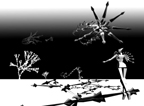
SONANOS: A Musically Structured World
Abstract: SONANOS is an application for interactive visual music. In this PC software, the user simultaneously composes music and constructs objects in a 3D environment. Combining objects generates rhythms, melodies, and phrases, which are determined by the visual properties of the procedurally generated objects. In the virtual environment, users can manipulate both the visual and musical structures. As a result, the user character evolves. The user character transforms, which represents the development of the composition. SONANOS adheres to the aesthetic conventions of the visual music genre, in which abstract graphics correspond to the rhythm. In this project, interactivity amplifies the synesthetic experience by enabling self-expression and deepening the connection between graphics and music.
KEYWORDS: SONANOS, synesthesia, interactive visual music, music video game, art game, procedural/generative/algorithmic graphics/ music/animation, music creation/composition game, musically structured world.
Posted by jo at 04:00 PM | Comments (0)
February 23, 2007
This Just In…
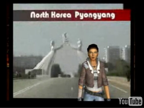
AI-Based Mashup at Seven
The work of AI-oriented Northwestern University grad students has been interesting for quite some time (1 2 3) — and here’s a new project to add to the list. Nate Nichols and Sara Owsley, in Kristian Hammond’s InfoLab, have created a system called News at Seven, that intelligently and autonomously combines news text, images and video from the Web, related commentary from the blogosphere, avatars from Half Life 2, speech synthesis, and broadcasting via YouTube, to create a daily short newscast. It’s an AI-based mashup.
Exploring the archives, I think they only recently tuned the system to create a tighter shot on the news anchor, which is a good thing. I kind of like the remote camera for their “blogosphere reporter”, a guy standing against throngs of bland voices in a snowy dystopian wasteland. (A somewhat harsh characterization of the blogosphere perhaps, and more a product of the limited number of avatars available in the Half Life 2 engine, but amusing nonetheless.)
Lots of interesting papers by this group to be found on their site. [blogged by Andrew on Grand Text Auto]
Posted by jo at 06:17 PM | Comments (0)
February 16, 2007
Proboscis
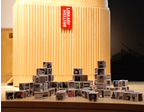
London As We May See It
On Wednesday February 14th 2007 Proboscis presented a new 'map' of London as part of "Uncharted Territories: the Brave New World of Mapping" at the British Library, London.
London As We May See It is the city re-imagined through a landscape of 105 StoryCubes. Each one has 5 pictures taken in a particular street or place (as well as an image of the street sign). The StoryCubes can be assembled together – connected – in any way in three dimensions to describe the route of a walk, or the places one has lived or worked in. They can describe experiences one has had across the city or the places in which one has made friends, had trysts with lovers or where we seek solace and rest from the manic energy of the city. These cubes could also be used to create a shared map between a community or group of friends - ever evolving and changing with each person's contribution.
The pictures used in the map were all contributed to the group photoblog The Way We See It. Thus the map is organic and can grow alongside the photoblog, adding new StoryCubes as new streets are photographed and 'mapped'.
"London As We May See It" is the beginning of a new series of collaborative mappings of places and communities in the UK and abroad by Proboscis. As such we hope it could be the basis of or model for a tool of engagement within a community, or across different communities, combining the ease of new digital technologies, for capturing and sharing images, with familiar technologies (print / paper based) that result in tactile and tangible spaces of their own for telling stories and sharing knowledge and experiences. More pictures and details are available here. Buy your own Blank StoryCubes here.
Posted by jo at 08:51 AM | Comments (0)
February 12, 2007
Marginalia in the Library of Babel
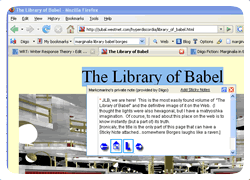
Diigo Fiction
Marginalia in the Library of Babel [in progress — alpha release]: "It starts with Borges. It always starts with Borges, the god of our hyperlinked souls. I fight the solitude of the vertigo he has imagined for me, and yet I may have finally found a way out of the labyrinth.
At night, I search for Borges, alone, hunched in the solitary chamber of an internet browser. If I was not seeking him, I’d be seeking myself. And I already know where I am and the speck size of my shadow on the Web."
Diigo Fiction: Marginalia in the Library of Babel: [This post offers context for a work-in-progress entitled Marginalia in the Library of Babel. alpha release.] Let us write stories in the margins of the Web: The web is becoming ours to write with. Whether supplying, ranking, or reviewing its contents or reordering the web with our folksonomic tagclouds, we are becoming the owners of more than just our Craig’s list and Ebay possessions. We are orchestrating this web and making of it what we will. Jeremy and Matt Kirschenbaum have reported on the moments when the tagclouds become art (see inset image made via TagCrowd.com). And now the web pages themselves have become our surfaces, our building blocks. Here’s how… More >> [blogged by Mark Marino on WRT]
Posted by jo at 06:08 PM | Comments (0)
February 06, 2007
The Oracle of Elsewhere
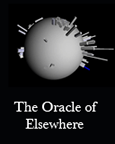
World Cities Browser
The Oracle of Elsewhere, by Ian Wojtowicz, explores current events happening in major urban centers around the world. It functions as both an information visualization and as a collage generator. The work's first screen shows a rotating 3D model of the earth displaying cities as extruded blocks. The height of each block indicates city density, and width represents land use. Color is also used to convey information: varying shades of blue show where news is currently increasing. Because this map is connected to live data from Google, it changes with the fluctuation of world events. At the time of this writing, for example, a ferry disaster in Indonesia insured that Surabaya was most noticeable city on the map.
The Oracle also has a sculptural element that enables people to interact with the 3D model manually. A reconfigured standalone globe allows the computer model to be rotated by physical interaction. It brings the work out of the confines of the computer screen and into a real collaborative conversational space. [via Rhizome]
Posted by jo at 10:41 AM | Comments (0)
February 05, 2007
A Million Penguins: A Wiki Novel

Collectively Creating a "believable fictional voice"
"...The novel, A Million Penguins, went live on Thursday and its first lines are already being written, edited and rewritten by enthusiasts on http://www.amillionpenguins.com. Penguin, which embarked on the project with a group of creative writing and new media students, says it is using the novel as a test of whether a group of disparate and diverse people can create a "believable fictional voice".
"This is an experiment. It may end up like reading a bowl of alphabet spaghetti," Jeremy Ettinghausen, head of digital publishing at Penguin UK said, adding there were no plans as yet to publish the completed work. "We are not making any predictions. It would be utterly fantastic if we could at the end create a print remix."" More >>
Also see Ethical guidelines page for wikinovel: http://www.amillionpenguins.com/wiki/index.php/Ethical_guidelines
Blog-- Penguin editors' notes on the novel in progress, thinking about
the project as it goes along: http://www.amillionpenguins.com/blog/ [via]
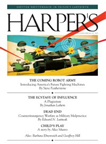
Collective Authorship
The February 2007 issue of Harper’s has a great series of essays on the theme of collective authorship that make it well worth picking up if you see it on the newsstand.
First is a complaint from Ian Jack about the trend among American writers toward thanking (in print) ever wider circles of friends and acquaintances. While acknowledging the mythical status of the popular image of the writer in solitude, and admitting that writing is often a cooperative act, he worries that this indicates a deeper trend toward the “industrialization” of the production of literature.
Such industrialization is the central vision of a manifesto by Sergei Tret’iakov, a Russian avant-garde writer who died in Stalin’s purges, calling for the “deindividualization and deprofessionalization of the writer.” Tret’iakov argues that small cliques of professional writers are no longer adequate “to keep up with the tempo of the present” and envisions a kind of literary assembly line, on the model of the newspaper, where specialized teams focus on first collecting, then processing, then testing the literary object being produced. I was struck by how this three-tier system echoed some other triads I’ve heard lately: Collect, Curate, Consume, or Create, Synthesize, Consume. “Testing” may at first seem to be quite different from “consuming,” but when you consider that contemporary digital media companies often use their consumers as testers, you see that they are just two sides of the same coin, as are “collecting” and “creating.”
Collecting as creating is illuminated beautifully by “The Ecstasy of Influence,” a remarkable collage text by Jonathan Lethem. As someone who has read a lot of writings on “free culture,” and not knowing the nature of what Lethem had created, I found myself wondering why Lethem was repeating so much tired rhetoric. Yet it flowed beautifully, and I enjoyed reading it. I was truly surprised when I reached the “key” to the piece at the end and realized what a virtuoso performance I had been experiencing. [blogged by Ryan Shaw on sindikkaeshin]
Ben Vershbow on "A Million Peguins":
The problem with A Million Penguins in a nutshell is that the concept of a "wiki-novel" is an oxymoron. A novel is probably as un-collaborative a literary form as you can get, while a wiki is inherently collaborative. Wikipedia works because encyclopedias were always in a sense collective works -- distillations of collective knowledge -- so the wiki was the right tool for reinventing that form. Here that tool is misapplied. Or maybe it's the scale of participation that is the problem here. Too many penguins. I can see a wiki possibly working for a smaller narrative community.
All of this is not to imply that collaborative fiction is a pipe dream or that no viable new forms have yet been devised. Just read Sebastian Mary's fascinating survey, published here a couple of weeks back, of emergent net-native literary forms and you'll see that there's plenty going on in other channels. In addition to some interesting reflections on YouTube, Mary talks about ARGs, or alternative reality games, a new participatory form in which communities of readers write the story as they go, blending fact and fiction, pulling in multiple media, and employing a range of collaborative tools. Perhaps most pertinent to Penguin's novel experiment, Mary points out that the ARG typically is not a form in which stories are created out of whole cloth, rather they are patchworks, woven from the rich fragmentary litter of popular culture and the Web:
Participants know that someone is orchestrating a storyline, but that it will not unfold without the active contribution of the decoders, web-surfers, inveterate Googlers and avid readers tracking leads, clues, possible hints and unfolding events through the chaos of the Web. Rather than striving for that uber-modernist concept, 'originality', an ARG is predicated on the pre-existence of the rest of the Net, and works like a DJ with the content already present. In this, it has more in common with the magpie techniques of Montaigne (1533-92), or the copious 'authoritative' quotations of Chaucer than contemporary notions of the author-as-originator.
Penguin too had the whole wide Web to work with, not to mention the immense body of literature in its own publishing vault, which seems ripe for a remix or a collaborative cut-up session. But instead they chose the form that is probably most resistant to these new social forms of creativity. The result is a well intentioned but confused attempt at innovation. A novelty, yes. But a novel, not quite.
Posted by jo at 05:11 PM | Comments (0)
February 02, 2007
Turbulence Commission:
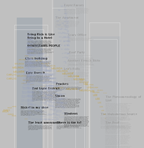
Gothamberg
Turbulence Commission: Gothamberg by Martin Wattenberg and Marek Walczak, with Chuck Crow, Johanna Kindvall, Warren Lehrer, Christiane Paul and Vivian Selbo.
Everyone who has lived in an apartment has a story to tell. "Gothamberg" is a place to read, interact and exchange stories of lives in apartment buildings. Together, these tales of unwanted sounds and smells, lobbies and bathrooms, laundry room gossip and unexpected favors form a single collective building, "Gothamberg". Their experiences form the elliptical threads of inhabitation, a mnemonic quality expressing something of the shared nature of dwelling.
"Gothamberg" is a 2006 commission of New Radio and Performing Arts, Inc., (aka Ether-Ore) for its Turbulence web site. It was made possible with funding from the Andy Warhol Foundation for the Visual Arts.
BIOGRAPHIES
MARTIN WATTENBERG'S work centers on the theme of making the invisible visible. Past projects include "The Shape of Song," "Thinking Machine," "history flow", the Whitney Artport's "Idea Line," and "Apartment." Wattenberg is a researcher at IBM's Visual Communication Lab where he creates new forms of data visualization. He is also known for the SmartMoney.com "Map of the Market." Wattenberg holds a Ph.D. in mathematics from U.C. Berkeley.
MAREK WALCZAK is an artist and architect who is interested in how people participate in physical and virtual spaces. This has led to digital tools and interactive projects such as "Apartment" which was shown at the Whitney Museum and many venues worldwide. "Dialog Table" has recently been completed for the Walker Art Center, it is a shared interface that replaces a keyboard and mouse with gesture recognition technology. Current projects bridge physical installations with user interaction, including a one block long facade at "7 World Trade Center" that reacts to pedestrians walking beneath it (for James Carpenter Design) and video installations that activate physical space based on user engagement such as Third Person, recently shown at the ICA, London.
CHUCK CROW is a financial engineer who specializes in the theory and implementation of autonomous trading systems. He obtained a B.S. in Computer Science with minors in Mathematics and Business Management from Johns Hopkins University and an M.S. in Operations Research from Columbia University. Chuck uses digitally rendered sound and raw field recordings to create engaging soundscapes intended for controlled listening environments. From lush layering to stark microsound, his compositional techniques include the use of static noise, stochastic processes, and real-time web data. He acquired a private pilot's license during the summer of 2000.
JOHANNA KINDVALL is an architect with a background in social work. She grew up in South Sweden and is now living in New York. After her degree in social studies she worked for seven years mostly with drug addicts and the mentally ill. At the same time she also worked with sculpture and art installations. For her architecture is a way to combine art with social issues. Johanna's work is often about the relationship between spaces and people, movement and behavior. In May 2003 Johanna got a grant from the Arts Grants Committee in Sweden to work with Marek Walczak in New York City on spaces and digital interaction. Currently Johanna is working for James Carpenter Design in New York. In her spare time she is also working on the Hudson Park Project.
WARREN LEHRER is a multi-disciplinary artist, writer, designer, performer, and educator. Over the past 25 years, he has been writing and designing books and theatrical works that explore the music of thought and speech, the complexity of character, the pathos and absurdity of life, and the relationship between social structures and the individual. The form and structure of his books attempt to capture the shape of thought and reunite the oral and pictorial traditions of storytelling with the printed page. Warren has published ten books including "Crossing the BLVD": strangers, neighbors, aliens in a new America (written with Judith Sloan). With Dennis Bernstein, he wrote the play Social Security: the basic training of Eugene Solomon, and with Harvey Goldman, he co-wrote and co-composed a contemporary opera, The Search for It and Other Pronouns. He has also produced two audio CDs, and six radio documentaries for Public Radio. His plays and performance pieces have been performed at La MaMa Experimental Theatre, the Public Theatre, the Theatre Workshop (Scotland), the Knitting Factory, the Jewish Museum, Independent Art at Here, the Painted Bride, etc.
CHRISTIANE PAUL is the Adjunct Curator of New Media Arts at the Whitney Museum of American Art and the director of "Intelligent Agent", a service organization dedicated to digital art. She has written extensively on new media arts and her book "Digital Art" (part of the World of Art Series by Thames & Hudson, UK) was published in July 2003. She teaches in the MFA computer arts department at the School of Visual Arts in New York and has lectured internationally on art and technology. At the Whitney Museum, she curated the show "Data Dynamics" (2001), the net art selection for the 2002 Whitney Biennial, as well as the online exhibition "CODeDOC" (2002) for artport, the Whitney Museum’s online portal to Internet art for which she is responsible. Other curatorial work includes "The Passam3eege of Mirage" (Chelsea Art Museum, New York, 2004); "Evident Traces" (Ciberarts Festival Bilbao, 2004); and "eVolution -- the art of living systems" (Art Interactive, Boston, 2004).
VIVIAN SELBO has conceptualized and designed web projects for "PBS/P.O.V.", the San Francisco Museum of Modern Art (SFMOMA), the Brooklyn Academy of Music, the Walker Art Center, Minneapolis, and the Museum of Modern Art, NY, among others. From 1995 to 1998, Selbo was the interface director of adaweb.com, now part of the Walker Art Center's Digital Arts Study Collection. Selbo is also an adjunct professor at the School of the Visual Arts, and New York University.
Posted by jo at 08:28 AM | Comments (0)
January 30, 2007
Night Haunts
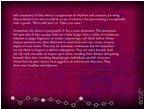
The Nature of the Urban Night
Night Haunts is a collaboration between writer Sukhdev Sandhu, website designer Ian Budden and sound artist and musician Scanner. Night Haunts unfolds in monthly episodes through 2006 on this specially designed site.
In this contemporary nocturnal journal, Sandhu prospects in the London night with the people who drive its pulse from night cleaners to praying nuns, security guards to the Samaritans. In each episode, Sandhu reflects on the nature of the urban night. Has night life been corroded by light and entertainment? What are the invisible forces that pulse through the sleeping city? Is real darkness possible any more?
Sandhu's first piece, Whatever Happened to the London Night? introduces his endeavours against the backdrop of past investigations of the nocturnal metropolis, particularly HV Morton's The Nights of London, published in 1926.
In his February episode, Avian Police, Sandhu recounts the experience of flying above the city in a police helicopter 'equipped with night-vision cameras that can pick out shirt labels from over 2000 feet'. In March, he tracks the solitary working lives of night cleaners traversing the city's empty streets and offices. In future episodes he will be wading through the eternal darkness of London's Victorian sewers, dodging officialdom with pirate radio DJs, and praying for the soul of London with the Nuns of Tyburn.
The Night Haunts website is described by designer Ian Budden as "a virtual landscape that reflects the physicality of Sandhu's experiences. The site involves a method of programming which we call 'techtonic animation', using a greatly enlarged version of the pixel, the fundamental building block of internet technology." The visual and sonic textures are in constant flux, randomly triggered so that each experience of the site is unique. You will never see or hear it the same way twice.
Posted by jo at 03:09 PM | Comments (0)
January 28, 2007
[Re: magAzine] | #004 Curating Ambiguity
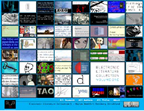
Interview with Scott Rettberg
One of the main common characteristics of all Web-based literary products is that they often can be read (or viewed, listened, played with, used) in multifaceted ways. Accordingly the curation of Electronic Literature is challenged by ambiguity and heterogeneity on different levels. As broadly termed by the Electronic Literature Organization itself, „Electronic Literature“ describes a form of cultural and artistic production on the Internet with important literary aspects that takes advantage of the contexts provided by the stand-alone or networked computer. Similar to what is not yet consistently defined as Digital Art, Netart, net.art, Internet Art, New Media Art, etc. the production of literary works on the Internet or by other digital means ranges from terms like Computer Literature, New Media Poetry to Codework and Hyperfiction, mixing up genres with subgenres and single descriptions. In this context the methods of classical literature studies are frequently transferred to a networked and online surrounding without creating innovative categories.
Florian Cramer (3), a Germany based literature scientist and co-founder of the curatorial platform runme.org - say it with software art!, outlines in a very general way that the Internet is based upon a code which acts on the logic of the alphabet and therefore is finally based upon text. The Internet, for the author, is literature in its original meaning, a system of letters whose poetry can only be found by the reader.
Despite this very general point of view Cramer also describes various levels of production and dissemination of literary texts: on the one hand the Internet can purely work as a medium of distribution for literature, on the other hand it operates as a platform for collaborative writing or as a literary database. Not until text needs a software interface, is generated automatically or randomly programmed by rules, it is genuine Computer-Literature. Furthermore he locates literature on the Web to be understood on various levels: poems, written in programming languages like for example Perl are readable in three ways. At first as a poem in a natural language, then as a sequence of machine commands and finally -- once executed -- as a poem in natural language again." Continue reading Curating Ambiguity [PDF] [Other interviews]
Posted by jo at 06:54 PM | Comments (0)
January 24, 2007
TAGS NETWORKS NARRATIVE
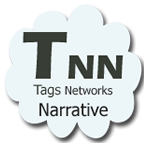
Request for Information
TAGS NETWORKS NARRATIVE :: Exploring the use of tagging and folksonomy in digital narrative research :: * Tagging as a form of communication * Folksonomy as an emergent knowledge network * Narrative as a common ground.
THE PROJECT: Tags Networks Narrative is a unique speculative project exploring the potential for collaborative keyword tagging (folksonomy) in narrative research. We want to know: (1) What kinds of collaborative social network tools are available for the gathering and classification of information? (2) Which researchers are making online narratives the focus of study, and how are those projects categorised by discipline? (3) How can these researchers make effective use of social network tools to share knowledge and develop interdisciplinary collaborations?
We are interested in the ways in which academic researchers studying narratives might develop people-to-people models of knowledge-sharing across disciplines. To that end, we are seeking researchers working in any type of narrative in any discipline to include in our database of projects and individuals. We would also welcome your suggestions for other researchers who might like to hear from us.
REQUEST FOR PARTICIPATION: We are especially interested in researchers who are willing to participate in our tagging experiments, due to take place Spring 2007. For more information please contact Bruce Mason as soon as possible at bmason01[at]dmu.ac.uk.
The project is based in the Institute of Creative Technologies (IOCT) at De Montfort University and funded by the Arts and Humanities Research Board from October 2006-September 2007. The Project Team comprises Professor Sue Thomas, Simon Mills and Bruce Mason. Website.
Posted by jo at 10:52 AM | Comments (0)
January 23, 2007
net-native stories are already here:
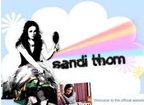
so are the vultures
A split is under way in the culture industry at present, between ever more high-budget centrally-created and released products designed to net the 'live experience' ticket or product-buying punter, and new forms of distributed, Net-mediated creativity. This is evidenced throughout the culture industry; but while ARGs (alternate reality games) are a strong candidate for being understood as the 'literary' output of this new culture, there is little discussion of increasing attempts to transform this emerging genre straight into a vehicle for advertising. In the light of my own rather old-fashioned literary idealism, I want first to situate ARGs in the context of this split between culture-as-industry and culture-as-community, to argue the case for ARGs as participatory literature, and finally to ponder the appropriateness of leaving them to the mercies of the PR industry.
the culture industry and the new collaboration
Anti-pirating adverts have been common since video came into wide use. But the other day I saw one at the cinema that got me thinking. Rather than taking the line that copying media is a crime, it showed scenes from Apocalypto, while pointing out that such a spectacular film is much better enjoyed on a huge cinema screen. It struck me as a shrewd take: rather than making ominous noises about crime, the advert aimed to drive cinema attendance by foregrounding the format-specific benefits (darkened room, audience, popcorn, huge screen) of the cinema experience .
It reminded me of a conversation I had with musician-turned-intellectual Pat Kane. Since the advent of iTunes and the like, he said, gigging is often a musician's main source of income. I had a look at live performance prices, and discovered that whereas in 2001 high-end tickets cost $60, in 2006 Paul McCartney (amongst others) charged $250 per ticket. The premium is for the format-specific features of the experience: the atmosphere, the 'authenticity', the transient moment. Everything else is downloadable.
But the catch is that you have to sell material that suits the 'live' immersive experience. That means all-singing, all-dancing extravaganza gigs (Madonna crucified on a mirrored cross in Rome, anyone?) and super-colossal epic 'excitement' films, full of special effects, chases, explosions and the like. Consider the top ten grossing films 2000-06: three Harry Potters, three Lord of the Ringses, three X-Men films, three Star Warses, three Matrix films, Spider-man, two Batmans, The Chronicles of Narnia, Day After Tomorrow, Jurassic Park 3, Terminator 3 and War of the Worlds. Alongside that there were typically at least two high-budget CGI films in the top ten each year Exciting fantasy epics are on the up, because if you produce anything else the punters are more likely to skip the cinema experience and just download it.
So the networked replicability of content drives a trend for high-budget, high-concept cultural content for which you can justifiably charge at the door. But other forms are on the up. The NYT just ran a story about M dot Strange, who brought a huge YouTube audience to his Sundance premiere. And December's Wired called the LonelyGirl15 phenomenon on YouTube 'The future of TV'. It's not as if general cinema release is the only way to make your name. Sandi Thom's rise to fame through a series of webcasts tells the same story.
Here, we see artists who reverse the paradigm: rather than seeking to thrill a passive audience, they intrigue an active one. Rather than seeking to retain control, they farm parts of the story out. As Lonelygirl15's story grows, each characer will get a vlog: rather than produce the whole thing themselves, the originators will work out a basic storyline and then pair writers and directors with actors and let them loose.
I don't wish to argue here that this second paradigm of community-based participative creation is necessarily 'better', or that it will supplant existing cultural forms. But it is emerging rapidly as a major cultural force, and merits examination both in its own right and for clues to the operation of Net-native forms of literature.
fact or fiction? who cares?
A frequent characteristic of these kinds of networked co-creation is debate about the 'reality' of its products. LonelyGirl15 whipped up a storm on ARG Network while people tried to work out if she was an ARG trailhead, an advertising campaign, or a real teenager. Similarly, many have suspected Sandi Thom's webcast story of including a layer of fiction. But this has not hurt Sandi's career any more than it killed interest in LonelyGirl15. Built into these discussions is a sense that this (like much ambiguity) is not a bug but a feature, and is actually intrinsic to the operation of the net. After all, the promise underpinning Second Life, MUDs, messageboards and much of the Net's traffic is radical self-reinvention beyond the bounds of one's life and physical body. Fiction is part of Net reality.
Literary theorists have held fiction in special regard for thousands of years; if fiction is intrinsic to the 'reality' of the Net, what happens to storytellers? Is there a kind of literature native to the Net?
ARGs: net-native literature
Though it's a relatively young phenomenon, and I have no doubt that other forms will emerge, the strongest candidates at present for consideration as such are ARGs (alternate reality games). Unlike PVP online games, they are at least partially written (textual), and rely heavily on participants' collaboration through messageboards. If you're trying to catch up, you essentially read the 'story' as it is 'written' by its participants in fora dedicated to solving them. They have a clear story, but are dependent for their unfolding on community participation - and may be changed by this participation: in 2001, Lockjaw ended prematurely when participants brought a class-action lawsuit against the fictional genetic engineering company at the heart of the story. Or perhaps it didnt - I've seen one reference to this event, but other attempts simply lead me deeper into a story that may or may not still be active.
Thus, like LonelyGirl15 and her ilk, ARGs also bridge fact and fiction. This is part of their pleasure, and it is pervasive: I had a Skype conversation yesterday with Ansuman Biswas, an artist who has been sucked into the now-unfolding MEIGEIST game when its creators referenced his work in the course of casting story clues. Ansuman delightedly sent me the link to the initial thread on the game at unfiction, where participants have been debating whether Ansuman exists or not. Even though I was talking to him at the time I almost found myself wondering, too.
Where ARGs as a creative form diverge from print literature (at least, from modern print literature) is in their use of pastiche, patchwork and mash-up. One of the delights of storytelling is the sense of an organising intelligence at work in a chaos of otherwise random events. ARGs provide this, but in a way appropriate to the Babel of content available on the Net. Participants know that someone is orchestrating a storyline, but that it will not unfold without the active contribution of the decoders, web-surfers, inveterate Googlers and avid readers tracking leads, clues, possible hints and unfolding events through the chaos of the Web. Rather than striving for that uber-modernist concept, 'originality', an ARG is predicated on the pre-existence of the rest of the Net, and works like a DJ with the content already present. In this, it has more in common with the magpie techniques of Montaigne (1533-92), or the copious 'authoritative' quotations of Chaucer than contemporary notions of the author-as-originator.
the PR money-shot
The downside of some ARG activity is the rapid incursions of the marketing machine into the format, and a corresponding tendency towards high-budget games with a PR money-shot. For example, I Love Bees turned out to be a trailer for Halo 2. This spills over into offline publication: Cathy's Book, itself an interactive multimedia concept co-written by Sean Stewart, one of the puppetmasters of the 2001 ARG 'The Beast, made headlines last year when it included product placements from Clinique. So where YouTube, myspace, webcasts and the like appear to be working in some ways to open up and democratise creative activity as a community activity, it is as yet unclear whether the same is true of ARGs. Is it acceptable for immersive fiction to be so seamlessly integrated with the needs of the advertising world? Is the idealism of Aristotle and Sidney still worth keeping? Or is such purism obsolete?
where are the artists?
Either way, this new genre represents, I believe, the first stirrings of a Net-native form of storytelling. ARGs have all the characteristics of networked cultural production: they unfold through the collaboration of a networked problem-solving community; they use multiple media, mixtures of fact and fiction, and a distributed reader/participant base. Their operation, and their susceptibility to co-opting by the marketing industry poses many questions; but the very nature of the form suggests that the way to address these is through engagement, not criticism. So, ultimately, this is a call for writers and artists interested in what the form is and could become: to situate Net writing in the context of why writers have always written, to explore its potential, and to ensure that it remains a form that belongs to us, rather than being sold back to us in darkened theatres with a bagful of memorabilia. [posted by sebastian mary on if:book]
Posted by jo at 05:04 PM | Comments (0)
Electronic Literature Collection
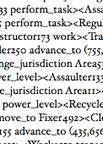
Volume One
N. Katherine Hayles, Nick Montfort, Scott Rettberg, Stephanie Strickland - Electronic Literature Collection, Volume One: cd-rom - Electronic Literature Organization - ISSN 19322011 :: Even if (unfortunately) mostly celebrated in the native English, electronic literature is a huge, and often underestimated field of research in terms of computer art aesthetic. It's a field where the brain processes as usual the language, while the works show up an added 'machinic' calculation causing a constant shift in the understanding, from the 'natural' to the apparently 'artificial'. The many facets of the text / software relationship (code similarities, conceptual approach, concrete / visual patterns, hypertext as a changing agent, amongst the others) are explored even if 'interaction' is not mandatory at all. The recombinatory possibilities of the software code are extending also the spacial dimension of text, not anymore locked in the printed bi-dimensional borders, but generated by calculation of positions, colors and pixels' forms. The signs are then completely liberated from their own fixed nature and can finally copulate with codes, levels and other languages, without losing their leading role. In the 'old' format of a cd-rom (and freely downloadable from the net), all the works are protected under another strategic text: the Creative Common license. Neural.
Posted by jo at 02:21 PM | Comments (0)
January 22, 2007
Dear Internet v1.
![]()
Networked Technologies and the Paradoxes of Social Relations
In preparation for an upcoming exhibition at Maryland Art Place (MAP) Dear Internet --a project by Mark Cooley and Edgar Endress--will be accepting letters via Dear Internet. Dear Internet v1. investigates how networked technologies become platforms for the paradoxes of social relations in digital culture. Connection, fear, communication, alienation, interactivity, dislocation, intimacy, disembodiment, are all possible and often simultaneously present in our attempts to interact with others online and off.
The installation: A live screening of Dear Internet develops, with the help of participant input, over the course of the exhibition and serves as a partial expression of networked consciousness. Content for Dear Internet v1. is collected from 2 primary sources:
- A participatory blog that forms a collective memory of "users" experience in networked living. Dear Internet (the blog) is an unmoderated site for the publishing and archiving of letters written by Internet users concerning their relationships with the Internet. Through http://dearinternetuser.blogspot.com, users may address the internet directly and indulge in their deepest thoughts, feelings and fantasies with the abandonment, comfort and protection that only online anonymity can provide. Texts gathered from http://dearinternetuser.blogspot.com are remixed and projected in the gallery while they are read with text to speech software.
- Live IP surveillance cameras are accessed using a variety of well-known advanced google search techniques and projected in the gallery space. While these surveillance cameras are accessible to any internet user, they remain largely unknown to casual internet users. However, the cameras have attained significant attention from hackers, technophiles, security professionals, bored surfers and others. The interest no doubt comes from the common presumption that these surveillance cameras are left unsecure unintentionally by camera owners who have neglected to set-up camera security features. Internet users are often able to access full control of an accessed camera's, zoom, pan, snapshot and other features. Camera controls are removed from the interface for the Dear Internet installation and the cameras are set to refresh every 30 seconds.
Posted by jo at 02:24 PM | Comments (0)
January 18, 2007
Timescope
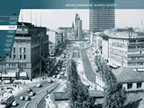
A Virtual Journey in Time
Timescope is another project developed by ART+COM. The basic idea of Timescope is to provide the viewer with a virtual journey in time using a telescope. The Timescope device contains controls that enable viewers to view a place in the past or future through its eyepiece.
Timescope can be used for a wide range of purposes: it can be set up for use at tourist attractions, giving visitors the chance to get a closer view of how these locations looked in the past. And Timescope can be used for large-scale building projects as it can be used, not only to show how a building project has progressed, but also to show how a building will look in the future. Additionally, it can be used at geological interesting sites, enabling viewers to perceive natural history visually. [by Lene Mailund on Digital Experience]
Posted by jo at 05:23 PM | Comments (0)
January 17, 2007
Iraq Study Group Report
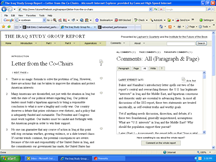
bush's iraq speech: a critical edition
Last month we published an online edition of the Iraq Study Group Report in a new format we're developing (in-house name is "Comment Press") that allows readers to enter into conversation with a text and with one another. This was a first step in a creative partnership with Lewis Lapham and Lapham's Quarterly, a new journal that will look at contemporary issues through the lens of history. Launching only a few days before Christmas, the timing was certainly against us. Only a handful of commenters showed up in those first few days, slowing down almost to a halt as the holiday hibernation period set in. Since New Year's, however, the site has been picking up momentum and has now amassed a sizable batch of commentary on the Report from a diverse group of respondents including Howard Zinn, Frances FitzGerald and Gary Hart.
While that discussion continues to develop in the Report's margins, we are following it up with a companion text: the transcript and video of President Bush's address to the nation last night where he outlined his new strategy for Iraq, presented in a similarly Talmudic fashion with commentary accreting around the central text. To these two documents invited readers and other interested members of the public can continue to append their comments, criticisms and clarifications, "at liberty to find," in Lapham's words, "'the way forward' in or out of Iraq, back to the future or across the Potomac and into the trees."
An added feature this time around is that we're opening the door to general commenters, although with a fairly high barrier to entry. This is an experiment with a more rigorously moderated kind of web discussion and a chance for Lapham and his staff to begin to explore what it means to be editors in the network environment. Anyone is welcome to apply for entry into the discussion by providing a little background on themselves and a sample first comment. If approved by the Lapham's Quarterly editors (this will all happen within the same day), they will be given a login, at which point they can fire at will on both the speech and the report.
Together these two publications comprise Operation Iraqi Quagmire, a journalistic experiment and a gesture toward a new way of handling public documents in a networked democracy.
***Note: we strongly recommend viewing this on Firefox*** [posted by ben vershbow on if:book]
Posted by jo at 03:34 PM | Comments (0)
January 12, 2007
True Secrets
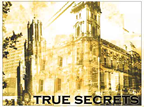
Audio Theatre on your Mobile Phone
A heads up from Diablogue informs me of a great sticker narrative project in Melbourne: True Secrets. Possibly inspired by the highly popular sticker art of Yellow Arrow, the stickers are placed in the street with a call-to-action to call a phone number. But, like the novel that is distributed via stickers around the world, Implementation, this piece provides a story.
“There are secrets in this city. True Secrets’ detectives have uncovered a treasure chest of urban tales, rumors and lost news stories. Zoom into the story and be swept back in time with these high-quality, site-specific, immersive audio dramas.”
Love to see this stuff happening more and more. For those in Sydney, and elsewhere, there are lots more Yellow Arrows locally too. But for now, check out True Secrets. [blogged by Christy Dena on Cross-Media Entertainment]
Posted by jo at 05:55 PM | Comments (0)
December 29, 2006
back to the future

The Walter Ong Collection
John Walter, a graduate student at St. Louis University wrote to the TechRet list the other day to announce the launch of the Walter Ong Collection, a digital archive based at the SLU. I went to the site and downloaded a PDF of an early version of one of Ong's more famous essays, "The Writer's Audience Is Always a Fiction." In this particular essay, Ong who made his name analyzing the difference between oral and written communication, explores how this shift changed the role of the reader. Ong makes the case that the role of the reader is quite different than the role of the "listener" in oral communication.
"The orator has before him an audience which is a true audience, a collectivity. 'Audience" is a collective noun. There is no such collective noun for readers, nor so far as I am able to puzzle out, can there be. "Readers" is a plural. For readers do not form a collectivity acting here and now on one another, and on the one speaking to them, as members of an audience do."
What's so interesting here, is that it seems that the age of networked reading and writing promises to get us much closer to one of the crucial aspects of oral culture — the sense that the story teller/author and the audience/reader are joined together in a collective enterprise where the actions of each will have a direct and noticeable impact on the other. [posted by bob stein on Future of the Book]
Posted by jo at 11:34 AM | Comments (0)
December 26, 2006
LivesConnected
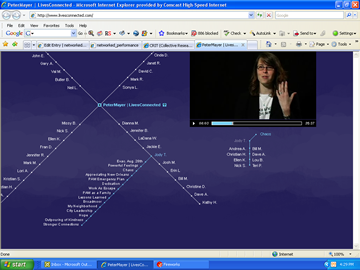
Hurricane Katrina and its Aftermath
LivesConnected, an interactive data visualization by Peter Mayer, was recently launched to coincide with the end of hurricane season (Nov. 30). It is an oral history repository documenting the experiences of Hurricane Katrina and its aftermath. The interface allows access to video narratives of 44 different people, and connects them by thematic associations.
Posted by jo at 04:35 PM | Comments (0)
December 14, 2006
Wikinovela
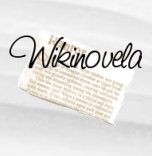
A Tale of Multiple Tongues
Wikinovela — A Tale of Multiple Tongues :: From the 3rd Congress of the Cybersociety comes: Wikinovela.
If the wiki is a definitive collaborative technology, what happens when a group tries to write a multilingual novel using the form?
[What follows is a commentary on the project involving a bit of translating and paraphrasing of the conference essay “Wikinovela: a project of hypertextual, collaborative, and multilingual creation on the Internet” by Patricia Fernandez Carrelo and Santiago Perez Isasi.]
Produced by the Faculty of Philosophy and Arts of University of Deusto (Bilbao, Spain) under a Creative Commons license, Wikinovela began April 24, 2006 and eneded July 24, 2006. Over the course of the three-months, the collaborators produced a work that stretches across languages: Castilian, euskara (Basque), and English. That is not to say that the work has been translated, but that distinct parts of Wikinovela appear in each language.
Participants could modify the text of others, continue any of the on-going storylines, create new plots (or “hypertextual ramifications” of a plot), or add metanarrative commentaries. More >> [blogged by Mark Marino on WRT]
Posted by jo at 05:24 PM | Comments (0)
December 11, 2006
Second Life
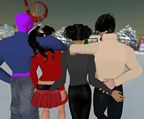
First Annual SL Literary Festival
First Annual SL Literary Festival :: Verum's Place, Yanguella :: December 16, 2006; 2:00 pm SLT :: Contact Carla Herrera, carla[at]contemporaryguide.com for more information.
Schedule of Events (Tentative/subject to change) :: Throughout the day there will be poetry readings, streaming music, discussions, art display, interactive literature projects, classes and workshops.
TBA: Patrick Lichty / Man Michinaga - Discussion: Digital Narrative and Online Spaces.
2:00 Opening ceremony Greetings & guest speaker on front lawn ::
3:00 Schedule of Workshops and Classes begin Signs and teleporters provided :: Workshops and classes run throughout the day and will conclude at 6:30 for fireworks And storytelling :: 4:00 Tours of the Gothsburg castle begin Tours last 30-45 minutes. :: 3:30 Open mic at Verum's place Essays & poetry welcome :: 4:00 Poetry Challenge $L100. to the winner :: 5:00 Tramp's Theatre Troupe Surprise performance :: 6:30 Fireworks By Spider :: 7:00 Storytelling circle on front lawn :: 8:00 Event close/Open chat/discussion.
Posted by jo at 04:25 PM | Comments (0)
Turbulence Artists' Studios
![]()
Alan Bigelow
Turbulence Artists' Studios: Alan Bigelow :: Using text, photographs, audio, video, and other elements, Alan Bigelow's fictions go beyond simple hypertext; they create visual and audio environments in which stories can unfold. His work is based on three basic premises: 1) the fictions should be multimedia events; 2) they should be easy to navigate; and 3) they should be interactive. In addition to navigating through the stories--and triggering certain Flash events --users can also write into some of these narratives, giving them the opportunity to contribute to the creation and continued growth of the stories.
BIOGRAPHY: Originally a fiction writer in traditional text genres, Alan Bigelow started working in Flash in 2000. With hard copy fiction increasingly difficult to publish, and many writers moving to vanity presses and desktop publishing, it appeared that the Web offered a free market of new genres and, within digital fiction, a relatively undiscovered area of exploration. Bigelow's work, and his conversations concerning interactive fiction, have appeared in Hallwalls Contemporary Arts Center, DreamingMethods.com, BlazeVox.org, and elsewhere. Recently, he was a visiting online lecturer in Creative Writing and New Media at De Montfort University, UK. He has a Ph.D. from SUNY at Buffalo (USA), and teaches at Medaille College.
Posted by jo at 10:13 AM | Comments (0)
November 17, 2006
Priceless
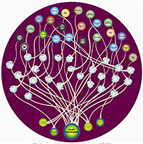
Underground Station Social Network Art
"We have created priceless, a multi-layered artwork in which the voices of individuals and institutions merge in surprising and unexpected ways. Objects of great value have been chosen by each institution to inspire an imaginative journey. People's unique stories and memories are showcased through audiovisual portraits, mobile exhibitions, installations and large-scale projections."
At London’s Huntington Station, a series of portraits and maps along the floor and walls reveal the Underground’s staff networks. The project is called Priceless. A sample of the images by motiroti is shown above.
London Underground staff have worked at the station for 138 years at the hub of a unique community of traders, museum workers, loiterers and licensed buskers who create the background atmosphere of this rich and complex environment.
motiroti has worked with LU staff to explore their personal connections and social networks. The participants were recorded in sound, video and writing by motiroti artists, who translated this information into an extraordinary series of graphic portraits and maps.
Along the length of the tunnel, 17 wall graphics and 26 individual floor constellations reveal the staff’s “hidden maps” of connections, and their personal worlds. Staff at South Kensington are connected with 66 national cities, 41 international cities, and with their friends speaking a total of 33 languages. Via Information Aesthetics [blogged by Judy Breck on Smart Mobs]
Posted by jo at 05:09 PM | Comments (0)
IF Comp 2006 Winners

Emily Short’s Floatpoint
The results are in, and Emily Short’s Floatpoint takes top honors at the 2006 Interactive Fiction Competition. The Primrose Path by Nolan Bonvouloir and The Elysium Enigma by Eric Eve placed second and third. Congratulations to these authors and to the others who finished games, entered them, and placed in the Comp. Another person who deserves thanks and congratulations is Stephen Granade, who has been running the Comp since 1999. All the games are still available for download, of course.
Reviews of games will be flowing freely soon, and I’ll try to add links to these in comments below. I certainly encourage you, if you are posting reviews yourself and are reading this, to add a comment with a link. [blogged by Nick on Grand Text Auto]
Posted by jo at 02:51 PM | Comments (0)
September 29, 2006
The Brooklyn Apartment
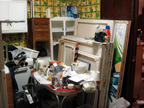
A Virtual Gallery in Brooklyn
We have a different approach to selling art. We don't make it easy and we don't want to make it straightforward. Instead, we want shopping for our art to be a unique experience in during which the viewer can experience the allure and reality (sometimes grimy reality) of North Brooklyn living.
The Brooklyn Apartment is a virtual tour of my apartment and my friend's apartment. We have art hanging up on the walls of our bedrooms, bathrooms, and kitchens. Sometimes the art is hidden and it requires curiosity to be found. We also include of our environment to make the viewer feel immersed in our environment.
We hope you stop by the Poland-Korea Relations site. The link above will take you to the art page which opens the gallery window. Enjoy. Hope you like what you see.
Posted by jo at 12:35 PM | Comments (0)
September 26, 2006
Networked Digital Storytelling:
![]()
Call for Participation
Networked Digital Storytelling: Call for Course Participation :: Time: November 6, 2006 – January 18, 2007 - 15 ECTS points :: Place: K3 School of Arts & Communication, Malmo University, Sweden.
Networked Digital Storytelling is a course that critically explores the artistic possibilities of new networked media such as videoblogs, social media, mashups and locative media. Participants in the course use these technologies in a series of workshops built around the theme of mediating and telling stories about the city.
During the workshops there will be guest lectures by artists, social media workers, bloggers, and theorists. Regular teachers are Kristoffer Gansing, PhD student specialising in alternative media, and Tina Giannopoulos, cultural producer and architect. The course ends in a common presentation in the form of an exhibition, installation or urban intervention.
How to apply: If you read Swedish fill out the following form:
The course code is: 00334
More info can be found at: http://www.mah.se/efteranmalan (in Swedish only). If you don’t read Swedish, send an e-mail with a statement of interest to: kristoffer.gansing[at]k3.mah.se (and you will receive the necessary papers for applying)
Workshops & Curriculum
1: Networked Stories/Spatial Stories: Untold stories and places of Malmö. Google map mashups + video. With Bitlab Malmö, Surreal Scania. http://www.bitlabmalmo.net http://www.surrealscania.se.
2: Hybrid Spaces/Hybrid Media: In collaboration with tv-tv and the t-vlog project. Ends in a transmission at Copenhagen based tv-station tv-tv. http://www.t-vlog.net http://www.tv-tv.dk.
3: Social media: Going deeper into technologies of videoblogging, participatory culture and culture jamming. In between workshops there will be a regular theory class, with close analysis of texts and films. We read everything from 60’s expanded cinema gurus like Gene Youngblood to recent online theorists like Adrian Miles and Jill Walker. Full course syllabus is available at http://www.edu.mah.se/KK3219/syllabus (literature list is subject to change / update!)
Relevant links and References
http://www.networkedstorytelling.org
Blog by Kristoffer Gansing, with info about earlier workshops.
http://www.mah.se/K3
Malmo University, School of Arts & Communication site.
http://www.edu.mah.se/KK3219/syllabus
The full course syllabus.
http://webzone.k3.mah.se/projects/nds
The internal course page.
Posted by jo at 04:21 PM | Comments (0)
September 18, 2006
OneWebDay

The Web is worth celebrating
OneWebDay is one day a year when we all - everyone around the physical globe - can celebrate the Web and what it means to us as individuals, organizations, and communities.
As with Earth Day - an inspiration and model for OneWebDay - it’s up to the celebrants to decide how to celebrate. We encourage all celebrations! Collaboration, connection, creativity, freedom. By the end of the day, the Web should be just a little bit better than it was before, and we’ll be able to see our connection to it more clearly. OneWebDay is September 22 every year, starting in 2006. If you write about OneWebDay or take a picture related to OneWebDay, tag it onewebday and it will show up on this site.
If you’re interested in being part of a project to celebrate the net on OneWebday, go to the ProjectWiki. If you’d like to coordinate a project, let us know and we’ll help find people for you to work with. If you’d like to sponsor a project, by providing computing resources or money, go here and let us know. This site is serving as a clearinghouse for projects, helping to match people to ideas (and ideas to people). [via Random]
Posted by jo at 09:25 AM | Comments (0)
Ports

Real and Virtual Ports as Hubs of Globalisation
The project Ports by Armin Medosch is an investigation into real and virtual ports as hubs of globalisation. Ports is looking into traffic of goods, information and people, trying to map out their relations and transitions. Over the last two decades the traditional image of the city has given way to an understanding of cities as spaces of flow. Ports is an attempt to map this new reality with a variety of methods.
There is obviously an analogy or some sort of overlap between maritime traffic and the connections that the sea facilitates and the virtual world of networks. Sea trade and the global projection of force through navies was the basis of the first 500 years of 'globalisation'. Now the control of information flows in networks is seen as the defining component of a new phase of globalisation in the so called information age. But how to bring those two layers together, how to map one onto the other?
During his 9Pin residency commissioned by Scan and supported by ACE, Armin Medosch conducted a writing and research project that took him to Southampton, Portsmouth and Poole. Combining field work, research in libraries and on the internet he studied the history and present condition of the three port cities, focussing thereby on their role as communication interfaces. Using traditional writerly research methods such as walks, observations of the everyday and conversations with a wide range of people, he at the same time developed ideas for digital and networked tools which would serve the same overall research interest.
The research has lead to the development of five project proposals two of which have been developed further and are presented as working prototypes. The prototypes, the proposals and an extensive research journal are documented on the Ports Wiki, a multi-user open source publishing environment.
Posted by jo at 08:52 AM | Comments (0)
September 15, 2006
Mark Wallace

LonelyGeeks, LifeLogs and Four Eyed Monsters
A few of us from the Brooklyn metaverse crowd went to see Four-Eyed Monsters last night, a very interesting feature film about a young New York couple who end up documenting their every move via videotape and handwritten notes, only because they’ve decided not to actually speak to each other. While the film is not a documentary, it was made by the couple who it’s about, and their real lives and dramatized lives do begin to converge toward the end of the film. While it’s a movie about relationships (you know, the kind where two people “slowly start to meld into one beast that has 2 mouths, 4 eyes and 8 limbs and takes up 2 seats on the subway!!!”), it’s in greater measure a movie about the act of recording itself, and what it means at a moment in history when you can store, play back and share as much of your life as you like, with as many people as are willing to pay attention. In this case, Susan and Arin have created a virtual version of their real life together, and it’s interesting to ask what the differences between the two may be, if any — especially in light of similar trends in things like lifelogging, and in the fictionalization of a life like lonelygirl15’s. And if you stay with this long-winded post all the way to the end, you get to think about how this kind of logging of our lives might help enhance them in some future 3pointD world.
“How long can their relationship survive as an art project???” asks the Four Eyed Monsters Web site. But that doesn’t describe everything that’s going on here. There’s an art project unfolding, but there’s a relationship too. Are they the same thing? Does the art project follow the course of the relationship, or is the relationship subservient to the art project? The truth is probably somewhere in between: you can’t separate the relationship from the art project; at some level, the relationship is the act of documenting itself. A more interesting question might be, “How long could their relationship survive if it stopped being an art project?”
The documented life got some attention recently with the stellar rise of lonelygirl15, who appeared to be recording her days via a video diary on YouTube. Except that lonelygirl15, who’d garnered millions of fans in the four months she’d been videoblogging herself, turns out to be the construct of a couple of young California filmmakers. “Bree” was a totally fictional character, but it’s interesting to ask how the fictional Bree differs from the fictionalized Susan and Arin. Four Eyed Monsters is composed for the most part not of documentary footage but of re-enactments. (And in any case, what does it mean to re-enact what was in part acted out in the first place?) Are the characters of “Susan” and “Arin” that appear on the screen somehow qualitatively different from the character of “Bree” that appears in the YouTube videos? Are they all virtual people, or do Susan and Arin have some deeper gravitas for being based on their actual counterparts? And isn’t Bree, the lonely teenager, based on an actual archetype? Does that make her any “more fictional” than the characters in the film? Or is that like being “more pregnant”?
One of my favorite ideas is the impossibility of autobiography: you can’t ever really give an accurate account of yourself and your history; there are just too many intangibles of memory, bias and emotion that get in the way. Four Eyed Monsters is only one version of the lives of Arin and Susan. Cut together differently, the film could have given a very different impression, or examined some other aspect of what it’s like to come together in the way they have. You can’t present all views at once, and any one view leaves out some amount of information. (There’s a 3pointD uncertainty principle here that I’ll post about at some point in the future.)
Lately, though, some people have been looking for ways to capture their lives in as much detail as possible, using the tools of the information age. While the Internet and digital media make recording the scenes of one’s days far easier than it has been before, they also make possible, at least in theory, a detailed quantification of one’s life that could potentially be very useful in a future metaversal age.
One failed version of this is the now-discontinued LifeLog program of the Department of Defense. “The LifeLog capability would provide an electronic diary to help the individual more accurately recall and use his or her past experiences to be more effective in current or future tasks,” according to DARPA’s description. “The goal of the LifeLog is to turn the notebook computers or personal digital assistants used today into much more powerful tools for the warfighter.”
That program is no more, but into the breach has stepped ur-blogger Justin Hall, who’s been looking at “Passively Multiplayer Online Games” in recent months. (We first blogged about this back in June.) Basically, a PMOG, in Justin’s early conception, logs all your Internet activity and assigns scores based on various factors such as which and what kind of sites you visit, for how long, and what you do there, etc. It’s not very far advanced beyond an idea, but a kind of proof-of-concept version of Justin’s game is online, where you can see how surfing various sites might raise or lower various attributes that are used to describe your avatar in the game.
It’s interesting to contemplate what it might be like to compare the fictionalized self created by such a game to the real person who plays it. But this kind of lifelogging can be taken a giant step further and allowed to bleed out into the real world, where it could become really useful (or really scary, depending on who’s doing the logging).
It already happens on the Web all the time: the recommendations you get from Amazon or NetFlix and the targeted ads in your Gmail sidebar all work off subsets of the lifelogging idea. Amazon, NetFlix and Google log your activity on their sites, and use that information to point you toward things that are in line with the preferences you’ve shown in the past.
Now extend that idea to all areas of your life. Imagine if, after you’d used FreshDirect for a while, it started automatically ordering and delivering your food for you, based on the orders you’d placed in the past. Now knock down the walls between FreshDirect’s information and the information gathered by NetFlix, and it might even tweak your delivery based on what kind of movies you’d ordered that week. (Popcorn and chocolate for the chick flicks, Red Bull for the slasher movies?) Now imagine you’re sharing all this information — travel itineraries, iTunes playlists, anything else you care to name — with a whole bunch of other people, much as Susan and Arin shared the moments of their lives.
I’ll let Jerry contemplate the ramifications of videologging (no “b” here) one’s life for all to see. Logging the data of your every move, though, could get interesting. Vernor Vinge mentioned the potential opportunities that are opened by this in his keynote speech at the end of the recent Austin Game Conference. Vinge envisioned “lifestyle cults” that gather and share their information in order to garner favorable terms in whatever context. If 1,600 other people in your neighborhood all order Red Bull on the weekends, for instance, you ought to be able to leverage that into a discount. Things like that seem to be the gist of Vinge’s thinking here.
If it sounds outlandish to be sharing so much information with so many other people, consider the fact that Web 2.0 has pushed us much further in that direction than almost anyone thought we would head. On Flickr, YouTube, Blogger and so many other sites, we offer up personal information about our habits, thoughts, purchases and selves every day — many times a day, in fact. One of the ideas behind lifelogging is simply that you as an individual would be able to aggregate all that information in a single place. Without revealing anything more than you’re already putting out there, you’d immediately have a powerful resource for doing things like making decisions, making friends, making new discoveries, you name it.
Me, I’ve shared enough in this post already. (1,400 words!) See you — or some version of you, at least — at the movies. [blogged by Mark Wallace on 3pointD]
Posted by jo at 04:55 PM | Comments (0)
September 14, 2006
Jane McGonigal

Please feed (but don't fetishize) the participation
I'm feeling a bit squeamish about a lot of the lonelygirl discussion going on this week, in the wake of the previously secret puppet masters' curtain call. As someone who designs participatory experiences, often games with a serial narrative component, I think it's really important that we stop and look at the kind of participation and engagement actually engendered by projects that purport to solicit the collaboration of the audience.
In the LA Times, the producers of the You Tube serial drama describe their goals for engaging the audience:
The intent was to allow fan response posted in the comment section of lonelygirl15's YouTube and MySpace pages to determine the direction of each subsequent episode.As an example of the fans' influence over the story line, what the team calls "collaborative storytelling," they pointed to an episode in which Daniel reveals his romantic feelings to Bree. "In the 'Hiking' video," Beckett said, "where Daniel filmed her, there were a ton of comments saying, 'Daniel likes you. It's obvious that the cameraman was completely in love with you.' We saw the comments and said this is the perfect opportunity to address this."
Okay, fair enough. I'm all for collaborative storytelling. But I don't think it's right to accept this account of the kind of participation that happened during the lonelygirl project at face value. Today and yesterday I spent a lot of time reading through pretty much every single comment left on the lonelygirl videos, the space where the audience was purportedly invited to help decide and direct the course of the narrative. I would encourage anyone else interested in the currently much praised and hyped lonelygirl "community" to do the same. A great hub for doing this is here.
As the statistics on this traffic counter show, each lonelygirl video has roughly 1000-4000 comments, nearly all of them left before the puppet masters were unmasked. And I have to say this: the level of hate, mean-spiritendess, crudeness and often downright misogeny of the majority of them is impossible to ignore.
As we talk about the “new art form” or “participatory culture” aspects of this project, I want to be very careful that we don’t fetishize the participation aspects of this experience that was had by a very few who may have intelligently, passionately and seriously investigated and responded to the texts and the media objects. I want instead to think about the mainstream experience of and participation in this project and the success of the platform provided for engagement.
To give you an idea, here is a sample of comments that I would characterize as representative of at least 33% if not more of comments to the lonelygirl videos:
You are pretty boring. Get a psychologist.
Ok. Why don’t you just keep your personal problems to yourself and stop making a scene
show us your tits
you are really ugly i hope you know that
Your eyebrows are too far apart. But, you’re still pretty.
Fuck you. Welcome to the new world we Don’t Have to Respect what you think. get over it
I hope Daniel rapes you. No hard feelings.
WHORE lol
HHHmmmmm,your caucasian,live in a decent to luxurious house, are well taken care of,and it looks like you are one of those spoiled girls that kiss ass to thier daddy.Think you have it rough?Why dont you come live in East Los Angeles,whee you cant go anywhere without being shot at,you fuckin spoiled brat.
Cry me a river bitch, your a teenager, do what your parents say bitch.
(Most discussion in the comments is not about whether lonelygirl is real or not-- they appear to accept the videos at face value, or otherwise not to care whether they are insulting a "real" girl or an actress.)
So: Is this really the birth of a new art form? Is this a kind of social participation that we like or find interesting? I'm all for participatory entertainment. But let's carefully design platforms, vehicles, and contexts for participation that really work to engage audiences, players, makers, collaborators in meaningful ways.
One more point I want to make: I think this question of "is she real or not" and how does the audience feel about being hoaxed or played with is a really important one. Although many, many viewers were openly skeptical or cynical about the verity of lonelygirl's professed identity, from what I can tell, far more took it close enough to real to play along.
Now I've written a lot about, and worked on quite a few, projects that ask players to perform belief in the story and game experiences, but--and here's the key distinction--without presenting actually credible fictons. (Stories set 500 years in the future, for instance, or involving poker rooms full of ghosts). The media itself never clearly said "I'm not real", but the content absolutely had no chance of fooling anyone. So I'll come out and say it: I don't personally like entertainment in the form of credible hoaxes. Not necessarily from a moral position, but rather because I believe that "real or not" distracts from the more important question: How can I meaningfully engage?
I agree that serial drama on You Tube is a great art form (so are traditional ARGs, the more elaborate art form that lonelygirl represents a pared back style of, in my opinion), but the real conversation should be not about the realness, but rather: How do people want to participate in it? Do they want to be the makers of their own videos? To have role-playing style conversations in the comments? Do they want to directly influence the narrative or to just speculate and gossip about it so they can be proven right by what happens next? And most importantly how do we inspire participation that is more than hostile juvenile comments? How do we create a real participatory community around an entertainment property, and what forms of participation are possible... and desirable? [posted by Jane on Avant Game] [Related post]
Posted by jo at 06:18 PM | Comments (0)
September 12, 2006
lonelygirl15

"we are witnessing the birth of a new art form."
Over the last week, i've gotten innumerable emails about lonelygirl15. Folks were wondering if i was behind it or if i knew who was. They wanted to know my opinion, if i thought it was fake.
I did. I thought it was fake but i expected that it was a TV or movie organization. I was kinda curious if it was an ARG but it didn't look like it. I decided that i should do a proper analysis of the different bits when the news broke: LonelyGirl15 is crafted by a group of filmmakers as an art project. Here's the letter they wrote to their fans on the forum explaining LonelyGirl15:
To Our Incredible Fans,
Thank you so much for enjoying our show so far. We are amazed by the overwhelmingly positive response to our videos; it has exceeded our wildest expectations. With your help we believe we are witnessing the birth of a new art form. Our intention from the outset has been to tell a story-- A story that could only be told using the medium of video blogs and the distribution power of the internet. A story that is interactive and constantly evolving with the audience.
Right now, the biggest mystery of Lonelygirl15 is "who is she?" We think this is an oversimplification. Lonelygirl15 is a reflection of everyone. She is no more real or fictitious than the portions of our personalities that we choose to show (or hide) when we interact with the people around us. Regardless, there are deeper mysteries buried within the plot, dialogue, and background of the Lonelygirl15 videos, and many of our tireless and dedicated fans have unearthed some of these. There are many more to come.
To enhance the community experience of Lonelygirl15, which you have already helped to create, we are in the process of building a website centered around video and interactivity. This website will allow everyone to enjoy the full potential of this new medium. Unfortunately, we aren't programmers. We are filmmakers. We are working furiously to complete the website, and hope to have it up and running shortly.
So, sit tight. You are the only reason for our success, and we appreciate your devotion. We want you to know that we aren't a big corporation. We are just like you. A few people who love good stories. We hope that you will join us in the continuing story of Lonelygirl15, and help us usher in an era of interactive storytelling where the line between "fan" and "star" has been removed, and dedicated fans like yourselves are paid for their efforts. This is an incredible time for the creator inside all of us.
Some thoughts
Now that i've killed the suspense, let me back up and tell you about what happened. For those who aren't familiar, videos by LonelyGirl15 started appearing on YouTube over the summer. She's supposedly a teenager who is homeschooled by religious parents who don't know she's creating videos online. Her friend Daniel helps her with the videos and they often talk back and forth across their videos. It's rather endearing but too good to be true.
As more videos popped up, people started questioning whether this was real or not. Speculation mounted and fake lonelygurls started to appear. People created videos to comment on LonelyGirl15. People flocked to the LonelyGirl15 forum to discuss. Problem is the LonelyGirl15 domain was registered before the videos started appearing. People started tracking down more and more clues, trying to hone in on what it was, who was behind it. Suspicion mounted. In classic fan style, people dove right down and tore apart all of the data. Quite a few thought that this was an ARG, Jane McGonigal style, but she denied involvement on NPR. Others thought it was an advert or some marketing campaign.
The clues people dug up were fascinating. Personally, i was intrigued by "Bree's" MySpace profile. I knew it was fake but i didn't know if the YouTube LonelyGirl15 made the MySpace profile LonelyGurl15. Why did i know it was fake? Well, i read too many teenage MySpaces. Not sure i should give away clues as to how to create a real-looking fake MySpace profile. ::wink::
Then press started covering it. Hands down, The New York Times had the best coverage. I can't help but wonder if the NYTimes knew the truth because they are certainly using the same language: "Hey There, Lonelygirl - One cute teen's online diary is probably a hoax. It's also the birth of a new art form." If so, go Adam for good reporting!
I like the idea that it is an art form but i also think it's part of what Henry Jenkins calls Convergence Culture. Regardless, it's super cool that people are using new media to create narratives. They are telling their story, truth or fiction. Of course, this makes many people very uncomfortable. They want blogs and YouTube and MySpace to be Real with a capital R. Or they want it to be complete play. Yet, what's happening is both and neither. People are certainly playing but even those who are creating "reality" are still engaged in an act of performance. They are writing themselves into being for others to interpret and the digital bodies that emerge often confound those who are doing the interpretation. In many ways, this reminds me of the Fakester drama during the height of Friendster. As one of the instigators behind the Fakester manifesto explained, "none of this is real." I won't get all existential on you so we'll leave it at that.
In many ways, i have to admit that i'm sad that the truth is out. I was really enjoying the suspicion. Far more than any episode of Lost or reality TV show. I was enjoying not knowing who was behind it and spending hours speculating and trying to find hints. I was enjoying watching a community of people talk endlessly about what they thought might be going on. Sure, the videos were quite endearing (although the ending of Poor Pluto disturbed the hell out of me) but do i just want to watch the videos by themselves? I'm not sure. I think i liked them for the mystery.
Regardless, i absolutely love the way people are using all of these new social technologies to create cultural experiments. To me, this signifies the importance of social media.
Update: The LATimes is reporting that emails concerning the site come from the Creative Artists Agency (CAA), a talent agency in Beverly Hills. (Perhaps i wasn't as off as i thought?) [blogged by zephoria on apophenia]
Posted by jo at 03:22 PM | Comments (0)
September 04, 2006
From Here to There

Under an Umbrella
From Here to There Under an Umbrella by Chris Barr: The "Under an Umbrella" project stems from an experience that I had as a freshman in college, in which a younger version of myself offered a young lady a spot under an umbrella during a rainstorm. From that rainy two-block walk and the conversation that it allowed, an exuberant yet naive relationship developed.
For three days during Conflux I will offer to escort local residents and festival participants to their desired location under an umbrella, as a sort of umbrella taxi. Our walk and conversation will be recorded via an "umbrellacam" and will be uploaded to the project website. With this experiment I am interested in how a shift in spatial experience, i.e. a space designed for one being used for two, can shift other relationships such as communication. And how something such as our vulnerability to our environment can offer us unique (and sometime intimate) human experiences.
Participants can sign up for a walk at UnderAnUmbrella.com or call (716) 512-9254. The project will run Friday September 15 through Sunday September 17 from 8am - 4pm with documetation available on the project website.
Posted by jo at 11:18 AM | Comments (0)
September 01, 2006
Blogimpsest:
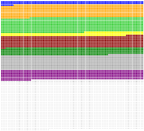
A Blog that Dreams
Blogimpsest: My blog is a Janus head, a 2-faced web0.0 monster. On one side it does what you would expect from the barest of bare-bones blogging systems (no HTML-formatting, no RSS-feed) but on the other side it does have a mind and purpose of its own; it is a blogject. Both faces share the same memory-filled palimpsest-styled head. A head that as a whole is a little mind, a symbiotic alliance; these two faces need to help each other to make the most of the limitations of their common resource. It is an experiment in grassroots AI...
Current Map of Blogimpsest [above image]: Each cube represents a segment of a colour-coded memory. Each black dot represents a free segment. While the palimpsest has free segments entries are added from left to right and from top to bottom. When filled, dreaming commences (and the blogject will eject-text) to make space. This results in chains sharing a segment and releasing one in the process. The neat crystalline order inside the memory that exists in the beginning will slowly become chaotic. See history of growth of palimpsest.
Posted by jo at 12:58 PM | Comments (0)
August 28, 2006
SHIRLEY BASSEY GETS MIXED UP
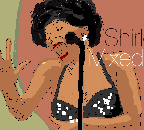
A Collaborative Biography
Shirley Bassey Mixed Up is a collaborative biography: an illustrated biography of the legendary diva, where the reader helps to 'mix' the illustrations online, using Internet searches. The biography was inspired by an incident on a TV awards show last year, where Bassey was publically humiliated. I felt sad to see this happen, and wanted to know more about what led up to this. All illustrations are built on-the-fly from live Yahoo searches. By specifying different searches and playing with the customisation options, the reader creates the illustrations themselves. This is a traditional (linear) 14-page story built on top of a generative composition tool, that uses Internet search data as its input.
The work can be described as a networked narrative, as a story partly created by networked data. Adding unexpected and uncontrolled elements to the story influences and changes the presentation, how it's experienced and what we take away from it. This shapes the story, changing fact into fiction, sometimes disrupting the story. As the networked elements are dynamic and largely unpredictable, every version of the biography is unique. Your version of the story is packaged into booklet form, for you to print and keep.
About Dave Miller: Dave Miller experiments with illustrated stories and networked media. More of his work can be seen here. [Related]
Posted by jo at 09:16 AM | Comments (0)
August 24, 2006
My Building and the Sheher
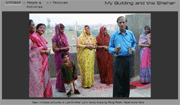
How is the idea of a community changing?
My Building and the Sheher, by Abhinandita Mathur and Venu Mathur, presents a visual essay on our building, where about 100 Mathur families reside. Shree Ganesh Group Housing Society is one of the many housing Societies in Patparganj that came up in the 80's, defining a new way of life for middle class Delhi.
The Mathurs are a close knit community and have a special relationship to the city of Delhi. Most families from this building can trace their history to the old city or Sheher.
This relationship between the community and the city was once well known and evident. It was apparent in the way of life, language, food, clothing and culture. The photographs document how the community has adapted to suburban living while continuing with some of its traditional ways. The project also contains an archive of these old traditions, such as typical songs and recipes of the community.
Through this assemblage of the present documentation and the archives of the past, this project attempts to map out the journey of the community and the city from the past to what it is today.
The project engages with the following ideas:
Social history
The history of the Mathur community and the city are closely related. Therefore by researching the history, studying the changing culture and documenting the community life of Dilliwale Mathurs the project attempts to correlate the history of the city and the community. Also, how does this community view the change in the city?
Community and culture
Certain cultural practices are developed and nurtured within a community setup. How has this Mathur community retained some of these cultural practices and how have these changed since the days of living in the Shahar? What strategies did the community develop to retain some of these cultural practices and how have they adapted to change?
Concept of community living
The community can be a site of conflict between the individual and society. The idea of personhood is determined by the competition between the individual v/s family v/s clan v/s caste v/s class v/s state… In the clash between tradition and modernity which of these social units are becoming more dominant over the others? How is this Mathur community facing up to these challenges?
Transforming communities
How is the idea of a community changing? No longer confined by physical and geographical proximity, old communities are using telecommunication technologies to retain and propagate their networks. How is this Mathur community coping with nostalgia? Is there a clash between the hardliners and the liberals and who is winning? Have the individuals of this community found stronger associations in newer communities based on alma mater, profession, class status, specific interests, political affiliations, sexual preferences, etc.?
[via sarai.net]
Posted by jo at 06:35 PM | Comments (0)
August 23, 2006
Seven Maps
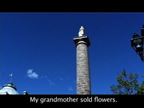
Call and Response
When filmmake /videoblogger Daniel Liss challenged himself to make 7 videos in 7 days, he also challenged his online audience to collaborate with him in the process. His daily assignments came from viewers of his videoblog who determined where, about what and how he should make each video.
Each day, they posted an assignment and each day Daniel posted a video in response. Then came praise and criticism in the comments of each day's videoblog post. The process took him miles from home, he told personal stories, invented new narratives, and played more than a few tricks on his guiding/goading audience.
For this video he was given the assignment, 'oday, you are a local. Trick us into believing that you are a local. Tell us a story about your history.' The entire Seven Maps series can be seen here : http://pouringdown.tv/sevenmaps [blogged by mica scalin on DVblog]
Posted by jo at 08:47 AM | Comments (0)
July 21, 2006
IOWA Review

Reconfiguring Place and Space in New Media Writing
"[...] While installations and VR environments have increasingly liberated the user's body from the seated-in-front-of-screen-at-keyboard position and brought the body inside the ontological space of the work itself, mobile computing and communication technologies are increasingly powerful and pervasive. Writers, artists, performers and "puppet-masters" are employing network writing strategies to deploy a variety of projects that extend from the network into the real world. Projects such as Teri Rueb's Itinerant [2005] make use of mobile and locational technologies including GPS and RFID to create narrative experiences affected by the user's movement through the physical world. In the case of Itinerant, as users walked through Boston Commons and surrounding neighborhoods they experienced an interactive sound work that re-framed Mary Shelley's Frankenstein.
Projects such as Yellow Arrow [2004-Present] pair coded stickers with text messaging, enabling users to write and read brief personal narratives about locations tagged in the physical world. Implementation [2004] is a fragmentary novel published on stickers that was deployed and photographed by participant readers around the world. Surrender Control [2001] utilized SMS as a performance medium, sending its users a series of directions as text messages, ordering them to perform a variety of absurdist actions during the course of their everyday lives.
Similarly, the phenonmenon of flash mobs makes use of text messaging to assemble groups of people for alternately absurdist and political activities. Extensible web technologies such as Google Maps paired with GPS coordinates also offer narrative possibilities, as evidenced by projects such as the "Memory Maps" group on Flickr, whose users have created personal narratives of places through coordinate-tagged photographs accessed through interactive maps [...] From Editor's Introduction: Reconfiguring Place and Space in New Media Writing by Scott Rettberg, The IOWA Review Web, v8 n2 July 2006.
Posted by jo at 04:17 PM | Comments (0)
July 03, 2006
Turbulence Commission
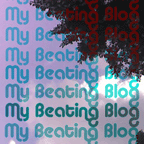
My Beating Blog by Yury Gitman
My Beating Blog is an attempt to take the journaling aspect of blogging into a surrealistic future in which the author literally and metaphorically bares his heart. For three weeks, a series of posts contextualizing heart-rate visualizations, GPS-maps, and personal journal entries will give online users a rare entrance into personal medical-grade statistics, stalker-level location tracking, and the private thoughts of the blogger. Inevitably, issues regarding privacy, exhibitionism, and voyeurism playfully emerge as the blogosphere is infused with biofeedback and location technology. Rather than play into a dystopian or Orwellian future, blogs and biofeedback are given poetic license, reframing our awareness of our own and each others' beating hearts.
My Beating Blog is a 2005 commission of New Radio and Performing Arts, Inc. for its Turbulence web site. It is supported by the Jerome Foundation in celebration of the Jerome Hill Centennial and in recognition of the valuable contributions of artists to society.
Yury Gitman is a designer, inventor, and award-winning artist. He has exhibited at the Biennale of Electronic Arts, Perth, Australia; Isle de France, Paris; Ars Electronics, Austria; and Eyebeam, among others, New York City. Gitman was one of the first people to use the Internet from inside the New York subway. He did this by employing a network of his "Magicbikes" ("wireless bicycle hotspots"). He was awarded the Ars Electronica Golden Nica for Net Vision in 2003. In 2005 he opened Banana Design Lab, a product design company focusing on lifestyle designs to entertain the soul.
Gitman has worked with non-profits such as NYCWireless, the Lower Manhattan Cultural Council, and the Downtown Alliance to promote open Internet policy and New Media Art practice in New York. He teaches an Electronic Toy Design class in the Design Technology MFA program at the Parsons School of Design. He received a Masters degree from New York University's Interactive Telecommunication Program and a Bachelor of Science in Science, Technology, and Culture from the Georgia Institute of Technology. Gitman's work has featured in local, national, and international media including BBC, The New York Times, Newsweek, NPR, New York 1 TV, Tech TV, CNET, ID Magazine, Readymade, Village Voice, Adbusters, and Utne Reader. [Related networked_performance posts 1, 2, 3, 4, 5, 6]
Posted by jo at 01:35 PM | Comments (0)
June 08, 2006
Perlin's Law
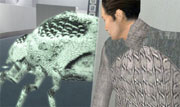
How Free Do We Want to Be?
"...For a long time now, I’ve been struggling with a conundrum of interactive storytelling that I dubbed “The Problem of Internal Consistency” in a lecture I gave at the Game Developers’ Conference in 1995. I also wrote about it in an earlier Designer’s Notebook column, “Three Problems for Interactive Storytellers,” back in 1999. The essence of the Problem of Internal Consistency is this: how do we balance the player’s desire for freedom with the designer’s desire to tell a consistent, coherent story? What do we do when the player wants to do something that doesn’t work with the plot that we’ve laid out? Refuse him permission to do it, and take away his freedom? Or allow him to do it, and destroy our story? I never came up with a good answer for it.
So last November, I went to a conference called Virtual Storytelling ’05 in Strasbourg, France. It was a small enough conference that every session was plenary—you didn’t have to choose between sessions, so as long as you showed up, you were bound to hear everything. Ken Perlin was one of the speakers, and in the middle of his lecture, he made an almost throwaway remark that really brought me up short. This was what he said, the thing that I think is so important:
Ken Perlin’s Law: The cost of an event in an interactive story should be directly proportional to its improbability..." From The Designer's Notebook: Introducing Ken Perlin's Law by Ernest Adams, Gamasutra. [Via Game + Girl = Advance]
Posted by jo at 08:22 AM | Comments (0)
June 05, 2006
When Ghosts Will Die
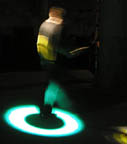
Stories Stitched Together "on the fly"
When Ghosts Will Die, a performance-installation that utilizes multi-sensory elements such as sound, video, light, and text controlled by motion-tracking technology, tells the story about the dangers of nuclear proliferation. Inspired by the play, "Copenhagen", by Michael Frayn, it explores the use of non-linguistic elements in the service of making poetry and telling stories. The artists and programmers involved on the project include Steve Gibson, Dene Grigar, Will Bauer, Jim Andrews, and John Barber.
"When Ghosts Will Die" involves one-two performers and envisions the space as a 3D grid simultaneously within a central computer and a physical performance space. The performers move through this environment and evoke the multi-sensory elements with hand-held tracking devices and in so doing interact with these elements through three potential phases of nuclear proliferation: 1) Disharmony, 2) Destruction, and 3) Disintegration. These three phases are intended to evoke the first nuclear explosion, the "Trinity" test in New Mexico on July 16, 1945, that took place just weeks before the nuclear bombs exploded over Hiroshima and Nagasaki, Japan.
Using the tracking device, the performers can move through the space choosing the element they wish to utilize for telling the story. In this way, the story takes on a rhapsodic quality: it is literally stitched together "on the fly" and changes wtih each telling. The mood of the space is designed to match the phase that the performers reach. Disharmony, for example, offers slightly discordant sounds that increasingly give way to cacophony, as well as video footage representing growing belligerence. Destruction sees the dropping of the bombs and corresponding sounds of buildings falling into rubble. The final phase, Disintegration, takes performers to the motif of the work: that the destruction derived from these weapons will be so complete that even "ghosts will die," an allusion to Michael Frayn's "Copenhagen" that sits at the heart of this project.
The story is meant to shock those participating into a deeper awareness of the horrors of nuclear warfare. Politically speaking, the work's message – that the development and deployment of weapons of mass destruction not only test a country's power but also its humanity – speaks to artists' "responsibility to envision alternative futures... and shape the way people think, live, and interact" (Edward Shanken). [via]
Posted by jo at 12:31 PM | Comments (0)
June 01, 2006
Turbulence Commission:

"mobotag" by Marta Lwin
mobotag reveals the hidden layers of a city through an active exchange of location based media and text messages via the cellphone. It's collaborative phone tagging of the city. Part virtual graffiti, part walking tour, "mobotag" creates a spontaneous and easy way for tagging a neighborhood via the cellphone. Send and view messages, images, videos and sounds. See art, read stories, and watch a hidden layer of the city reveal itself. Respond with your media and participate in the creative expression and mapping of your neighborhood. By sending a text message to "mobotag", with your city location, you begin an interactive tour of a neighborhood. Using a unique geocoding feature, "mobotag" tells you what other messages exist in your local area. In the near future "mobotag" will also feature art projects including "flyHere," a mobile phone audio installation featuring native bird calls; "bugBytes," collectible graphical bugs originating at major telecoms around NYC; and "lookHere," a written work in short form by a native NY writer.
"mobotag" is a 2006 commission of New Radio and Performing Arts, Inc. (aka Ether-Ore) for its Turbulence web site. It was made possible with funding from the Jerome Foundation.
BIOGRAPHY
Marta Lwin is an artist, technologist, and researcher who recently completed her masters at the Interactive Telecommunications Program at NYU. Her background is both in art and activism. In the early to late 90's she worked with Greenpeace, UNEP, and Women's Environmental Network and Reclaim the Streets (UK). After joining a loose network of artists at Backspace in London, Lwin became interested in the creative use of technology as it relates to biology. Currently, her work focuses on the intersection of art and technology and includes projects that critically challenge and subvert accepted perceptions of the relationship between nature and technology. Her work has been shown at galleries in Europe and New York. Publications covering her work including networked_performance, Engadget, Core77, Treehugger, Cool Hunting, MocoLoco, WorldChanging, Rhizome and We Make Money Not Art.
Posted by jo at 11:38 AM | Comments (0)
May 26, 2006
June on empyre

Liquid Narratives
The topic of June at the - empyre - mailing list will be Liquid Narratives. The concept of 'liquid narrative' is interesting in that it allows to think about the unfoldings of contemporary languages beyond tech achievements, by relating user controlled applications with formats such as the essay (as described by Adorno in "Der Essay als Form", The essay as a form) and procedures related to the figure of the narrator (as described by Benjamin in his writings about Nikolai Leskov), among others.
How does the concept of narrative is related to comtemporary culture? Can we really describe nowadays fragmentary and user related procedures of organizing data as narratives? Should they be considered liquid, since they are fluid, reshapable, pliable? How does devices such as the GPS and mobile phones change narrative? How technologies broadband internet and DVD allow other modes of organizing them?
To debate this topic, this month, we welcome Dene Grigar, Lúcia Santaella, James Barret and Sérgio Basbaum. They will discuss how their projects and ideas can be related to the notion of 'liquid narratives', or explain how they have been thinking about connected concepts.
+ subscribe https://mail.cofa.unsw.edu.au/mailman/listinfo/empyre
+ guests
Dene Grigar (http://www.nouspace.net/dene/) is an Associate Professor of English at Texas Woman's University and specializes in new media, interactive arts and electronic literature. Her book "New Worlds, New Words: Exploring Pathways In and About Electronic Environments" (with John Barber, Hampton Press, 2001) speculates about the ways in which writing and thinking change when moved to electronic environments. She is Associate Editor of Leonardo Reviews and International Editor for Computers and Composition. Her second book, "Defiance and Decorum: Women, Public Rhetoric, and Activism" (with Laura Gray and Kay Robinson) looks at the way women have used Rhetoric to achieve social and political goals.
James Barret (http://soulsphincter.blogspot.com/) is PhD at Umeå University (Sweden). He works between the Department of Modern Languages and HUMlab, an interdisciplinary digital lab and studio. He researches narrative and textuality, focusing on stories using new media, their interpretation by peoples and cultures.
Lucia Santaella is full professor at São Paulo Catholic University (PUCSP), PhD in Literary Theory (1973-PUCSP) and Livre-docente in Communication Studies (1993-ECA/USP). She is the director of CIMID, Center of Research in Digital Media, PUCSP, and also the director of the Center for Peircean Studies. She directed the Brazilian side of a PROBRAL research project (Brasil-Germany/Capes-DAAD) on word and image relations in the media, from 2000 to 2003. She was also the director of other collective research projects: “Technical Images: from the industrial mechanical to the electronic post industrial world”, PUC/SP-FINEP, 1989-1991; a thematic research project on “The advent of new technologies and the new sound grammars”, financed by FAPESP, 1992-1995; the collective project, “Production and diffusion of scientific research in the digital era”, financed by FAPESP, 1999-2002.
Sergio Roclaw Basbaum (http://www.globalstrike.net) is PhD in Communication and Semiotics and professor at São Paulo Catholic University (PUCSP). He is author of the book “Syneathesia, art and technology - the foundations of Chromossonics” (Annablume, 2002). His PhD thesis, “The primacy of perception and its consequences to the media environment” , discusses topics such as perception, art and the relation of technology and contemporary culture. As a musician, he has released the brazilian jazz album "Captain Nemo in the All Saint's Forro" (1999).
Posted by jo at 05:18 PM | Comments (0)
May 22, 2006
OZONE TERRACE 1997-1998

Online Apartment Building
OZONE TERRACE Background: Developments in interactive media technologies have created a new role in broadcasting, the programme designer; a cross between programme maker, artist and author. We were commissioned by the BBC television series 'The Net' and Illuminations television to design a programme which was a hybrid between a website and television documentary.
What we did: We made an experimental website which uses simple graphics to construct a virtual skyscraper – the framework for an evolving, multithreaded narrative that occurs when authors of interesting and slightly exhibitionist web sites are invited to 'move in' to the web-building and contribute their stories. After the building had been 'live' and populated for a few weeks, we made an animated documentary about the lives of the building's inhabitants.
The project grew out of an equal interest in both in the content – exploring ways of generating interactive narratives – and in form – how you could use the things that are easy and fast to do on the web, such as block graphics, in elegant and effective ways. The website, which was intended to be self-generating, in fact needed a lot of cultivation – it needed weeding and fertilizing with encouragement if the tenants were to be persuaded to keep contributing. There were several strands in this project: one was to try to understand what made things engaging, what made people want to contribute their stories initially, and then to continue or to stop. Another strand was to try to make a self-generating interactive narrative which, because it was being generated by many people might have qualities of surprise and interest that it would be difficult for one person to generate. The structure needed to be light enough to allow variety and invention but strong enough to give coherence to the potentially very disparate contributions. A third strand was to do with craft: of the web graphics, carefully tuned to the web's limitations, and the final animated film – with its own contrasting set of conventions and possibilities.
Project team
Chris Downs and Ben Hooker
Posted by jo at 09:53 AM | Comments (0)
May 21, 2006
Turbulence Spotlight:
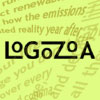
Logozoa by Robert Kendall
Words change everything. We create poems and stories to free the world from itself, to reveal the many feral faces of life. But ironically these liberating words are usually imprisoned on the page or computer screen. Out in the "real" world of day-to-day activity, we use words more crassly. We put labels and signs on things to tame them—identify, categorize, explain, instruct, proclaim ownership. What if instead the labels could liberate the everyday world from the literal, proclaim rather than cover up the mysteries? What if they could become Logozoa—textual organisms that infest the literal with metaphor and give impetuous life and breath to meaning?
Lo•go•zo•a n [fr. Gk logos word + zoia animals] (2005) 1 : word animals: textual organisms 2 : a phylum or subkingdom of linguistic entities that are represented in almost every kind of habitat and include aphorisms, anti-aphorisms, maxims, minims, neokoans, sayings, left-unsaids, proverbialisms, poemlets, microtales, instant fables, and other varieties of conceptual riffs
Find out what happens when you let word animals roam your daily life. Download Logozoa, print them onto your own stickers, and let them loose in your home or neighborhood. Visit the Logozoo to see photos of Logozoa in their natural habitat. To help ensure that these unique creatures do not go the way of so many once-endangered, now-extinct species, photograph your Logozoa and send them to the Logozoo. Explore the Soothcircuit, a unique colony of Logozoa that responds to your questions with insights and prognostications.
BIOGRAPHY
Robert Kendall has been writing electronic poetry since 1990. He is the author of the book-length hypertext poem "A Life Set for Two" (Eastgate Systems) and other electronic works published at BBC Online, Iowa Review Web, Cortland Review, Eastgate Hypertext Reading Room, Cauldron & Net, and other Web sites. His electronic poetry has been exhibited at many venues in the United States, Europe, South America, Asia, and Australia, and he has given interactive readings of his work in many cities. Kendal's printed book of poetry, "A Wandering City," was awarded the Cleveland State University Poetry Center Prize, and he has received a New Jersey State Council on the Arts Fellowship, a New Forms Regional Grant, and other awards. He has taught electronic poetry and fiction for the New School University's online program since 1995. Kendall runs the literary Web site "Word Circuits" and the ELO's "Electronic Literature Directory," and is co-developer of "Word Circuits Connection Muse," a hypertext tool for poets and fiction writers. He has written many articles about electronic literature for national publications, such as Poets & Writers Magazine, and he lectures frequently on the topic.
Posted by jo at 12:16 PM | Comments (0)
May 10, 2006
a network of books
![]()
Connections + Actor-Network Theory
This is the "cover" (it's an email mag) of the latest issue of artkrush. Part of a 2004 installation by Moroccan artist Mounir Fatmi called "The Connections."
Connections is the outcome of a reflection which began in the early Nineties, at the time of the war in the Gulf.... At that time, the operations Desert Storm and Desert Fox, preceding the last operation which could be named "Desert, full stop", established the era of a media oriented war, therefore a war of image, on the very spot of the Revelation, that of the three sacred books, a historic place dedicated to communication. They clearly showed the lack of means of communication and even the lack of communication power of the Arab countries as well as the resurgent fear of technology.
In our calendar, that of Hegira, we are today in 1420, eternally nomads. Our roots are clearly set in the future, as the Arab poet Adonis wrote it. For me, it is an attempt to enter this desert, this collective memory, to remove sand from objects which may lose their identity through the changing of material but will still keep their memory.
A recent comment from Adam Greenfield, author of the just-published "Everyware: The Dawning Age of Ubiquitous Computing," seems apropos:
I've become all but unable to think of the objects around me except in terms of Actor-Network theory, as sort of depositions or instantiations of a great deal of matter, energy and information moving through the world. And of course, a book is nothing but a snapshot in that regard; you have to do a lot of extra work if you want to prise out and examine the flows it is a part of, or even those it has set up. [posted by ben vershbow on Future of the Book]
Posted by jo at 12:38 PM | Comments (0)
May 08, 2006
electric sheep

Do You Dream in Electronics?
ELECTRIC SHEEP is a blog dedicated to the infiltration of our sleep by the presence of electronic media. Have you had dreams (in the literal sense, while sleeping) that featured electronic media: internet, television, computer games, radio, mobile phones, etc? Maybe you were smooching Jerry Seinfeld or maybe you found yourself confronted with a dysfuntional Powerpoint presentation during a dream. Was it creepy? Is it comforting? Send your stories to: sleep.electric[at]gmail.com
ELECTRIC SHEEP is a project by Fereshteh Toosi. From her statement: "...By seizing the pleasure of mythology and using it proactively, I hope to resist the oversimplification of ideas that such fantasies have come to represent. I have performed as a quack doctor and impersonated a private investigator as a way to ask strangers to share their stories and idiosyncrasies with me. I inhabit characters inspired by existing stereotypes such as the fortune teller/mystic or the romantic image of the early American colonist. Creating an absurd interactive scenario for the audience through these personas is a tactic I use to investigate what people know and how they've come to feel comfortable with their own versions of the truth."
Posted by jo at 11:14 AM | Comments (0)
Home-Maker has a new home

What makes a house a home?
Home-Maker by Jeanie Finlay is now available to view online. What makes a house a home, how does this change if you can't leave?
Home-Maker, the interactive documentary project has been touring UK venues for the last 2 years. At the final venue, Hatton Gallery, a team from Heaton Used furniture came in and turned off the computers, packed up the dolls, furniture and ornaments and dismantled the set as they would whenever they perform a House Clearance. Now the only place to view Home-Maker is online.
In an online flash environment built by Gareth Howell you can visit Florrie, Roy, Lilian, Betty, Aiko-san, Emi-san and Monji-san in their new online home and hear the stories linked to the belongings in their Derbyshire and Tokyo living rooms in over an hour of streaming mini documentaries.
"This largely unprecedented, highly novel approach to portraiture brings up all kinds of touching details of life as it is lived between four walls, amid the dreadfully small collections of significant belongings, haunted by the enduring presence of lost loved ones...." Mick Martin, The Guardian.
Home-Maker is the result of two residencies which took place in the living rooms of seven housebound, older people in South Derbyshire, England, and Tokyo, Japan. Jeanie Finlay spent time with each of the seven people, getting to know their histories, preoccupations and passions, creating video and panoramic portraits of each of them in their homes.
A Ruby project made with Peoplexpress and Muse Company. In association with On the Edge Research. Supported by Arts Council of England , EM Media, UK Film Council, YOTA and Esmée Fairbairn Charitable Trust. Design by Ruby. Flash online exhibition by Gareth Howell. Winner of a Canon International Digital Creators Web Award.
Jeanie Finlay
Ruby Digital
jeanie[at]ruby-online.co.uk
http://www.ruby-online.co.uk
[posted by Mark Cooley on Rhizome.org Raw]
Posted by jo at 09:43 AM | Comments (0)
March 18, 2006
Turbulence Commission: "Ten-sided" by Francis Hwang, et al

A Multi-Vocal, Improvisational Performance
Ten-sided--by Francis Hwang, with Johannes Gorannson, Jess Kilby, Tao Lin, Brendon Lloyd, Jessica Penrose, Glenis Stott, John Woods, Taren McCallan-Moore, and why the lucky stiff--is a textual performance in which ten authors collaboratively improvise on a single online narrative. For three months, each author will blog as a fictional character. All ten characters must somehow be connected, and all ten authors are responsible for ensuring that this connection is explored through the course of the story. However, authors are forbidden from coordinating the story beforehand. Instead, they can only take their cues from one another's public entries. The resulting improvisation resembles a jazz performance or a session of exquisite corpse, but in a new form of creative practice that comments on and employs the multi-vocal nature of blogging communities.
"Ten-sided" is a 2006 commission of New Radio and Performing Arts, Inc. (aka Ether-Ore) for its Turbulence web site. It was made possible with funding from The Greenwall Foundation.
BIOGRAPHIES
Francis Hwang is an artist, writer, and software engineer. His earlier artwork includes "The Unauthorized iPod U2 vs. Negativland Special Edition", in which he combined a U2 iPod Special Edition with Negativland's back catalog and auctioned the result online; and "firmament.to", which uses the Google Web API to turn any HTML page into a free-associated index for the rest of the web. His writing on technology and culture has appeared in Spin, Wired, ArtByte, and FEED Magazine. An active member of the Ruby community, he has spoken at the International Ruby Conference and currently serves as a technical lead on free software projects such as Ruby-DBI and the object-relational mapping library Lafcadio. He lives in Brooklyn with one roommate, two computers, and two cats.
Johannes Görannson was born and raised in southern Sweden. Together with his wife Joyelle McSweeney, he co-edits Action Books, a press for contemporary American poetry and poetry in translation. Together with Joyelle and John Woods, he co-edits the online quarterly Action,Yes. Action Books published his book of translations, Remainland: Selected Poems of Aase Berg last fall. Ugly Duckling Presse is publishing his translation of 1920s Russian-Finnish avant-gardist Henry Parland's Idealrealization next winter. He edited recent issues of the journals Fourteen Hills and Typo (online) devoted to Swedish-language poetry. He is a PhD candidate at the University of Georgia, but he currently lives in Tuscaloosa, AL, and teaches a class on the historical avant-garde at the University of Alabama.
Jess Kilby is a figment of your imagination. Last seen at the scene of the crime, she left no fingerprints and took your time. In her waking hours she impersonates an Eskimo and tries her best to stay out of trouble. Fails miserably. High crimes and misdemeanors documented here.
Tao Lin is the author of a collection of poetry, You are a little bit happier than I am (Action Books, October 2006), and a collection of stories, Bed (Melville House, Spring 2007).
Brendon Lloyd is a writer from Los Angeles, CA. When he's not writing about himself in the third person to give the appearance that someone else has taken the time to write about him, he hustles a TV pilot and a screenplay.
Jessica Penrose is a poet and short story writer. A former lawyer, she escaped just in time and now lives on the edge of the beautiful Yorkshire Dales in the north of England where she shares her house with a dog, a philosopher and lots of books. Jessica is in the final year of an MA in Writing at Sheffield Hallam University tutored by Sean O'Brien. Her poems have been published widely in anthologies and magazines including The Rialto, Staple and Orbis and her work has been featured in the Ilkley Literature Festival and Sheffield's Off the Shelf literary festival. She is drawn towards cross-art from collaborative projects, and recently worked with a visual artist and a dancer/choreographer to produce a short film of embedded poetry Outside-In Inside-Out. Future projects include a collaboration with a mosaic artist and interactive work with a fellow poet on the theme of dreams.
Glenis Stott lives in England with her husband and two black cats. She is in the final year of a part-time, online MA in Creative Writing. Glenis has never blogged before but has some experience in online collaborative writing, including taking part in Quickshift, a project where an international group of writers, working in shifts, wrote continuously online for 31 hours. Glenis has recently chosen to take a year long break from working in order to focus on her writing full time. Her hope is that she will find a market for her writing and be able to describe herself as a writer for the rest of her working life. However, while publication is her main goal, she also hopes she will continue to gain as much pleasure from writing as she does now. Glenis has recently completed a novel, And Some Caught on Stones, as part of her course requirement. It covers four months in the life of a woman whose 17 year old daughter died unexpectedly. It isn't her own story but is based on her experience of losing a daughter. She also has an almost-complete novel, Brother 'Lijah Built the Ark, which looks at life in a religious cult. Glenis has recently developed an interest in genealogy and feels that several of the characters in her family tree are ripe for development into novels. Glenis is very pleased to have been chosen to take part in Ten-sided and is looking forward to developing a character in real time.
John Dermot Woods lives in Tokyo, where he teaches in the English and Intellectual Heritage departments at Temple University Japan. He is an editor of the international arts quarterly Action,_Yes. His fiction and comics have been published in the Indiana_Review, 3rd_Bed, Salt_Hill and other journals.
Taren Phillip Churchill McCallan-Moore lives in Cambridge with his two dead cats and a cellar packed with stuff that he doesn't want but can't get rid of. He shares a studio with himself in which he draws, paints and entertains. He is soon to appear nude in an exhibition of photography presented by a friend in London who has asked him to write a short and irreverent tale about taking photographs of people without any clothes. He doesn't wake up screaming anymore, he goes for a bike ride across meadow land each night, always wipes the toilet seat and wishes that he'd been closer to his father.
Posted by jo at 12:48 PM | Comments (0)
March 16, 2006
Ars Electronica Winning Project 2005: [the next idea]
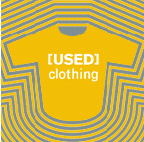
USED Clothing
Clothes are an expression of an individual’s identity. The way a person dresses is almost always directly connected to his/her lifestyle, worldview and self-image. “OK, then why not use clothing even more intensely as a medium?” mused Martin Mairinger. And the Linz native proceeded to create USED Clothing, a concept for furnishing clothes with additional information.
A radio frequency identification (RFID) chip to which the wearer can save information about himself/herself is sewn into each garment. When the item of clothing—for instance, a jacket, pair of pants or T-shirt—is sold at a special second-hand shop, the buyer can access this information online and find out about the garment’s past.
The interests and personal philosophy of individuals with a preference for the same type of clothing often resemble one another. Accordingly, the second-hand interface node just might yield interesting hookups. The project’s long-term concept envisions the establishment of a community of registered users who take advantage of the second-hand shop’s offerings not only to acquire clothing but also to establish social contacts within the network of human beings connected to the shop.
Honorary Mentions
ætherspace
knouf nick (US)
zeitkunst.org/projects/aetherspace
Maschine_Mensch
Zucali Tobias, Christopher Rhomberg (AT)
[blogged by Regine on Twenty1F]
Posted by jo at 11:48 AM | Comments (0)
February 28, 2006
Christian Nold

Greenwich Emotion Map
Greenwich Emotion Map by Christian Nold, Oct 2005 - March 2006: 6 month artist commission hosted by Independent Photography as part of 'Peninsula', a series of artist commissions on the Greenwich Peninsula.
Artist Christian Nold has been invited to collaborate with local residents from the Greenwich Peninsula to explore the area afresh and build an emotion map of the area that explores people's relationship with their local environment.
The project is set up as a series of participatory workshops that invite people to borrow a Bio Mapping device and go for a walk. The device measures the wearer's Galvanic Skin Response (GSR), which is an indicator of emotional arousal in conjunction with their geographical location. The resulting maps encourage personal reflection on the complex relationship between us, our environment and our fellow citizens. By sharing this information we can construct maps that visualise where we as a community feel stressed and excited.
As part of Node London, two separate public workshops will take place in March at Independent Photography, where people will be able to see the collective Greenwich Emotion Map as well as participate by going for their own walk in the local area.
A printed 'Greenwich Emotion Map' wall poster will be available from Independent Photography as well as a number of other local Node London venues.
"Will seeing other people's experiences, allow us to engage differently with our environment?"
Please contact us if you want to join in christian[at]emotionmap.net
Posted by jo at 10:39 AM | Comments (0)
February 27, 2006
desiredescape

An Experiment in Community Building and Storytelling
Andrea, the creator of the website, is the fictional heroine of Shelly Silver's upcoming film project desiredescape.net. She starts the website as a means of escaping her life in a conservative Upstate New York town. In her own words:
"I want this to be a website for all of us who wish to escape some part of our lives (our job, famly, relationship, political or economic situation, city, country world), where we can share stories about our current lives, as well as our plans, hopes and strategies for our desired escape."
The stories Andrea receives will influence the trajectory of her story, and the images, sounds and videos uploaded to the site will be incorporated into the final film. So if you need to escape (or have successfully escaped already) please visit and contribute often! And if you've never wanted to escape, but are nevertheless curious about those of us who do, please visit too.
Posted by jo at 11:28 AM | Comments (0)
February 10, 2006
>OVER
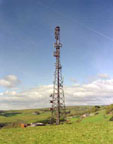
[TELE]COMMUNICATION
"Are you ready?" the message went out. The first message to cross water, the first wireless communication. The exhibition >OVER is, in part, a homage to Marconi’s ground-breaking experiments that he undertook near Cardiff to develop the first ever wireless transmission in 1887, a breakthrough to which nearly all of today’s telecommunications are indebted.
The means we use to send and receive messages influence the language we use, from the considered etiquettes of letter writing to the rash disposability of email and the text message; from the formalities of a landline telephone conversation to the obliviousness or indifference of the mobile phone user giving a prefixed report on their location. >OVER explores this territory. The artists either engage in methods of communication to produce the work, or they examine the impact, the language and significance of those methods.
Stefhan Caddick explores the text phenomenon. An LED sign facing the street from the gallery will display text messages sent from members of the public to its receiver. He gives us the opportunity to address the city. The project’s intention is to encourage members of the public to evolve a new use for these signs, which usually carry important but mundane information. Instead the Variable Message Sign will carry text messages, which by their nature are often deeply personal.
Lizzie Hughes’ two sound pieces expand and compress time and space by way of a simple telephone inquiry. In Second Empire State Building Piece, she telephones each of the building’s eighty floors, asking each occupying company in turn which floor they are based on. Their responses create an image of the building, but not one we might recognise or expect. Similarly, in a second piece, Lizzie telephones various locations around the globe to request the local time, which differs from call to call. She phones the same regions again over the course of 24 hours: this time each recipient reports identical times. The piece draws attention to the geographical and temporal scale of the world, its diurnal movement and our place within it.
Jennie Savage’s work Note To Self compels us to reflect on what we consider important enough to communicate to our future selves. We are invited to write a personal log that takes on archival significance because it will not be sent until 2011. By reverting to letter writing, a method of communication that now seems archaic, Note To Self gives a simple but enduring voice to our everyday, which would ordinarily pass without record.
If Jennie Savage opens out the communications loop by expanding the gap between sending and receiving, Paul Cabuts short circuits it. For the series Transmissions he has photographed telecommunications masts across South Wales. The range of these masts stretches across Wales and the UK, yet their surroundings are specific to South Wales. Transmissions illuminates the didactic nature of these structures, which are at once fixed yet transient, anchor points in the ebb and flow of cultural expediency and information exchange.
You are invited to the preview of the show on the 10th February from 6.30 at g39 Wyndham Arcade, Cardiff CF10 1FH. >OVER runs from 11th February to 18th March 2006. g39 is open 11-5.30 Wednesdays to Saturdays.
Posted by jo at 06:25 PM | Comments (0)
February 08, 2006
MemoryMiner
![]()
Filling Historical Gaps
MemoryMiner is the first in a series of products by GroupSmarts, a company founded in December 2004 by John C. Fox, a recognized pioneer in the field of networked Digital Asset Management. The central idea behind MemoryMiner is a belief that the most interesting records of modern society and culture exist in analog form, "trapped" in boxes of old photos, letters and the like.
With this thought in mind, we hope that MemoryMiner will be widely used to bring these materials, and more importantly, the stories that can be told from them, into the networked, digital world. The long-term goal of MemoryMiner is the creation of a many-to-many marketplace for "Creative Commons" digital media that would allow people to exchange media elements in order to fill in gaps that they may have as they set about recording and publishing their personal histories.
"MemoryMiner is an extraordinary new program, a profound reinvention of the photo scrapbook. It's just out, but already it's a nuanced, way-smart program with a clean, inventive design. There's no better introduction to it than watching their short Quicktime demo—an absolute must. If you want to learn more, you can listen to an interview with MemoryMiner's, John Fox.
I have studied the history of photography for over 30 years now, and if this program continues to develop and finds its uses and users, I'm predicting that it will go down as a key transformative moment in the evolution of photography. It's a brilliant application of digital/database logic to photography as personal history and storytelling. I'm gettin' it."--John Schott, Ratchet Up
Posted by jo at 07:39 AM | Comments (0)
February 07, 2006
un_wiki
Democracy or Oligarchy
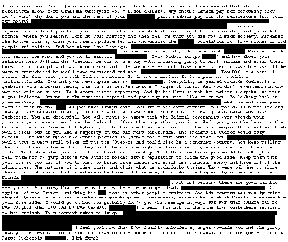
un_wiki, by Wayne Clements, gets quotes from Wikipedia the free encyclopedia’s Deletion Log: http://en.wikipedia.org/w/index.php?title=Special:Log&type=delete. The Deletion Log is a list of all the pages that have abused Wiki's democratic remit; it is the last stop on the way to destruction. It has small amounts of the offending texts. Clements uses a Perl script to get them and throw away the rest.
un_wiki explores the antagonism between formal democracy (anyone may edit a page) and actual oligarchy (sysadmins may delete or revert a page). [via Loreto Martin]
Posted by jo at 08:50 AM | Comments (0)
February 02, 2006
Transmediale 06: Maurice Benayoun
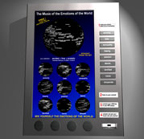
Emotion Vending Machine 2006
Also at Transmediale 06: Maurice Benayoun's Emotion Vending Machine--The mechanics of the world’s emotions evolve in the zone where economics and politics converge, in the world of product placement. Through its concept of artistic merchandizing, the Emotion Vending Machine deals with the production of emotions in an ironic way. The Machine takes Internet data as a global pool of emotions. Users can select up to three emotions from a list of nine emotional states, including hate, desire, or despair. The emotions are represented by 3D-maps of word clusters, extracted from the web and generated in realtime.
These maps show the emotions of the world as they are present on the web at that moment, mapped onto the actual position of major cities on the globe, a mix which can also be read like a music score. The musical interpretation deciphers the cities and their emotional polarity to produce a specific musical result by adapting rhythm, coloration and evolution to the selection of the emotional states made by the user. After listening to the personal result through the integrated speakers, users can plug in their USB stick or MP3 player to load their emotional sound remix.
Music: Jean-Baptiste Barrière; Software: Birgit Lichtenegger, Artem Baguinsky, Marloes de Valk (V2); Production: CITU, Paris.
Posted by jo at 03:32 PM | Comments (0)
January 31, 2006
Death of the Author

The Return of the Author
"Abstract: The article transposes the text of Roland Barthes' "Death of the Author," (La Mort de L’auteur) (1968), to the arena of happenings in cyberspace, and examines the implications from the point of view of author-reader-text, active in the electronic environment. Cyberspace has become one united text (hypertext), that allows any author to add to it, and any reader to read the content. The act of reading the text from the network simulates the cyberspace hyper-text wave function collapsing by means of the reader’s submitted query. The text that was in a state of superposition throughout the network, or in Barthes’ definition "multi-dimensional space in which many and varied writings are combined and meet, and none are foremost" becomes a single peak wave function that appears on the reader’s display. Cyberspace accelerated the reading process to the speed of light, and led to a dramatic turning point of the disappearing of the traditional author, text, and reader, and the birth of the new Super-Reader-Author. This unification creates a paradigmatic shift from dualistic, Aristotelian object-subject thought, to the holistic thought of being, realized in the singularity of consciousness and connecting real space, the spiritual and cyberspace." The Return of the Author, Avi Rosen, December 2005.
Posted by jo at 09:08 AM | Comments (0)
January 19, 2006
Knifeandfork's
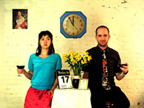
5 'til 12
The Beall Center becomes the site of a nonlinear narrative with Knifeandfork's immersive installation, 5 'til 12. The visitor is invited to watch four characters, on four monitors, as they recount the tragic circumstances of the exhibition's opening night. The experience is unique for each visitor, as each story has most likely never been heard before... and won't ever be heard again. The installation uses RFID (Radio Frequency IDentification) cards to identify individual visitors. When each new visitor swipes a card, a new story is selected, and the visitor is recognized as he or she explores the narrative space. [Quicktime video]
The premise is derived from Akira Kurosawa's film Rashomon, in which four eyewitness accounts of a murder are presented to the viewer, who serves the role of a magistrate. The contradicting stories reveal that objectivity is elusive, as each individual cannot help but infuse his story, consciously or not, with personal shame and ambition. It is unclear who is lying, or if it matters. Each story holds a valid reality of its own, a subjective truth that reinforces a desired identity. However, perhaps there could be another layer: in addition to stories that differ between tellers, might an individual's story change with each new telling? 5 'til 12 proposes that we evolve multiple narratives as we explore multiple identities.
The process is inspired by the Oulipo literary movement, in particular the canonical piece by Raymond Queneau, One Hundred Thousand Billion Sonnets, in which 'potential' literature emerges when lines of words are spliced and recombined. 5 'til 12 draws from the artists' own journals, fantasies, and parodies, all of which are algorithmically assembled to create an enormous number of potential personas for each character.
Stories are selected from the possibilities in rounds, using a programmatic variation on the Prisoner's Dilemma, a model from game theory where individuals choose to cooperate or not in order to maximize their own personal advantage. Seeking to portray themselves in the best possible light, the characters must choose to be complimentary, neutral, or vindictive toward each other. A character who appears confident and blameless while illustrating everyone else's faults will 'score' the highest. However, in the following round, he or she can expect revenge and must eventually make amends. The strategy of each character is adapted using an evolutionary algorithm according to its effectiveness in each round.
Beall Center for Art and Technology, Irvine, CA, US
2006 January 18 - March 15
Opening reception January 17, 6-9 pm
Posted by jo at 10:21 AM | Comments (0)
January 08, 2006
Clink
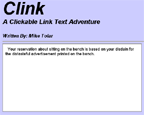
Hybrid Browser-Based Adventure Released
(Liberal, Kansas) - An entirely original browser-based adventure titled Clink is now available. As implied by the name, Clink utilizes a unique "clickable link" platform that merges an intriguing blend of interactive fiction with hypertext story elements to create a new adventure experience unlike any other on the market today.
The story line of Clink, which begins with you standing on your own front porch, is gradually revealed as players "literally" move around by clicking on words within the story. While there is a definite beginning, middle, and dramatic ending to the game, every person who plays Clink will have a unique experience because there is no pre-determined sequence of navigation. The story is constructed in a way to allow a smooth continuity of content, regardless of the order it is encountered.
Contrary to the fact that virtually all existing adventure games are written in a handful of specialized programs, Clink is an example of clever ingenuity over complex technology. Clink utilizes no special software, no Java, no Perl, no Active-X, no Flash objects, no applets, no scripts, and no cookies. In fact, Clink web pages are only about 2kb each and will run flawlessly on almost any web browser.
Mike Tolar, author and designer of the game notes, "Clink represents an exciting new genre of interactive browser-based content. Players will experience an intriguing mixture of humor, clever plot twists, and intuitive elements of logic and problem solving, all in a unique interactive web page environment. Anyone looking for something enjoyable to read, with an interactive twist, will quickly become a fan of Clink."
Direct questions or comments to: mike[at]clinkadventure.com
Posted by jo at 09:55 AM | Comments (0)
December 08, 2005
All Together Now:

Collective Knowledge... Narratives... Architectures of Participation
"ABSTRACT: This essay is an exploration of the history and methodologies of collective narrative projects, and their relationship to collective knowledge projects and methodologies. By examining different forms of conscious, contributory, and unwitting participation, the essay attempts to develop a richer understanding of successful large-scale collaborative projects. The essay then examines largescale architectures of participation in Wikipedia and Flickr to extrapolate from those observations potential methodologies for the creation of collective narratives.
Keywords: Collective, social, systems, literary, collaboration, hypertext, constructive, constraints, writing, process, architecture, participation, narrative, literature." From All Together Now: Collective Knowledge, Collective Narratives, and Architectures of Participation by Scott Rettberg, The Richard Stockton College of New Jersey Arts and Humanities, Literature Program. Presented at DAC 2005. [via elo]
Posted by jo at 01:12 PM | Comments (0)
November 17, 2005
Nick Montfort
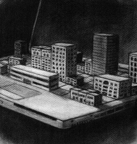
Opening Book and Volume
I’m pleased to announce the release of Nick Montfort’s new interactive fiction: Book and Volume. It’s been more than five years since Nick burst on the IF scene with the release of Winchester’s Nightmare (1999) and Ad Verbum (2000). His new piece, which I’ve had the privilege of playing in pre-release versions, is an addition to the field that will appeal to veterans and newcomers alike.
As a sysadmin in Book and Volume’s nTopia, it’s easy to know what to do. Your computer, your pager, and your boss are constantly telling you. And you must spend your Sunday night running around rebooting servers whether you like it or not (there’s a big demo coming up!) or get fired. But there’s more to B&V than what the voice from your pager commands. In fact, part of what this story and game explores, over time, is the potential for performing actions beyond those made available most obviously.
This is Nick’s first full-length IF since the publication of his scholarly book on IF, Twisty Little Passages. Given this, I’m sure I won’t be alone in finding myself thinking about B&V in terms of that book’s most influential formulation: seeing the structures of interactive fiction as analogous to those of the long tradition of the literary riddle. And, in fact, this angle reveals a particularly elegant view of B&V’s design. For while satisfying its early demands is much like puzzling through a riddle that is asked outright, delving more deeply into the work could be seen almost as a process of finding a formulation for a riddle implicit in the work’s shape but never directly posed to the reader. And, having not yet succeeded in finishing Book and Volume myself, I can say that it’s a non-trivial process that doesn’t quickly lose its intrigue. [blogged by noah on grand text auto]
Posted by jo at 12:49 PM | Comments (0)
November 15, 2005
Somewhere between here and there
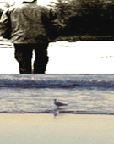
narrativas contadas narrativas vividas
"Storytelling relies on the combined human strengths of memory, imagination, and communication. The forms and methodologies of storytelling allow us to sift through and make sense of happenings in our own lives and in the lives of others. Whether drawn from representations of reality or shaped as fantasy worlds, stories tap into and represent the collective psyche of our culture. For the human being, story-making and story-listening are both a pleasure and a privilege." -- "Desire versus Destiny: the question of payoff in narrative," Glorianna Davenport, Barcelona, Spain, January 29, 2005
somewhere between here and there narrativas contadas narrativas vividas--by Alicia Felberbaum--is an interactive video installation, designed to be shown as a live, presentation in a gallery environment as well as for Internet viewing and interaction.
Somewhere between here and there, narrativas contadas narrativas vividas experiments with aesthetic and theoretical forms assigned to the documentary genre and also focuses on the potential of ’soft-linked’ stories (stories that are linked through software devices) when computers are added to the storytelling process, through algorithms applied to an array of elements [images, audio and video segments] stored in a database.
Different people were interviewed and videoed, their stories were then fragmented and embedded within the interactive work. It features people from diverse contexts, investigating spaces, experiences and struggles surrounding migration and exploring their psychological and physical journeys, and portrays the perception of the migrant experience by migrants themselves as a complex and multidimensional phenomenon. Migrants become the historians of their own lives with their own voice.
As well as documenting stories, the work allows to create associations within those stories and other visual material combined ‘on the fly’, generating a range of alternative frameworks. These frameworks are dynamically generated based on the interaction between the author’s definitions, the choices of the navigator and the matching algorithm embedded in the program. Unlike a traditional documentary, there are deviations in story directions. The author does not solely control “what happens next”; instead, that task is for the machine and the audience to navigate together.
Developed by an interdisciplinary team from London and Buenos Aires; directed, written and produced by Felberbaum [UK] and an Argentinian IT team lead by José Broide in Buenos Aires.
Jose Broide, is an IT project manager who holds a Master in Electronic Engineer from Buenos Aires University Argentina. As an IT project manager he has participated in industrial and educational software projects. He has also has been involved in software developments for art installations designing and directed the development of the software platform for this work.
Biography
Alicia Felberbaum is a new media artist living and working in London, she was born in Buenos Aires, Argentina. In 2001 she was honoured with the prestigious NESTA’s Fellowship. http://www.nesta.org.uk/ During the first two years of the Fellowship she was affiliated to the Goldsmiths Digital Studios, Goldsmiths College, University of London. MA graduate of Goldsmiths College, with honours in 1996, she has exhibited art works internationally; Midlands Art Centre, Birmingham, UK; IMA, Institute of Modern Art, Brisbane, Australia; Piece Hall Art Gallery, Halifax, UK; Pitshanger Manor Gallery and Museum, London; Angel Row Gallery, Nottingham, UK; De Oude Kerk, Amsterdam: Axis, Foundation, Netherlands; transmediale 99 - international media art festival, Berlin, Germany; Conseil des Arts textiles du Québec, Toronto, Québec and Montréal, Canada; 1998, Studio XX's 2nd Annual International Festival of Web Art, Montréal, Canada; Lovebytes Digital Arts Festival, Sheffield, UK; International Triennale of Tapestry, Lodz, Poland; U.C. Davis Design Gallery, California, USA; Camden Arts Centre, London; On Gallery, Poznan, Poland; and earlier in 1997 UNCUT-Interaction, ICA, London. _ She participated in numerous conferences including Viper Basel, 2004, International Festival for Film Video and New Media, Switzerland; 2001 DAC International Digital Arts and Culture Conference Brown University Providence, Rhode Island, USA; CADE 2001 Digital Creativity Glasgow, Scotland and Ordinatrices/Computers-International Conference, 1999, McGill University Montreal, Canada. _ She has received all levels of grants, awards and artist residence to support her work including from Nesta, National Endowment for Science, Technology and the Arts; Award for the Research Exchange Scheme from the Arts and Humanities Research Board in collaboration with Science Communication Group, Imperial College of Science, Technology and Medicine, London; transmediale 99 Award - international media art festival for Internet projects, Berlin, Germany; Awards to Individual Artists, London Arts Board, UK; in 1998 she was commissioned for a collaborative public Internet project, as part of the Photo 98 Public Sightings Program; she was Artist in Residence at Artec, Arts Technology Centre, the first independent centre in the UK dedicated to creative applications of digital technology and in 1997 she was artist in Residence, Camden Arts Centre, London. [via Rhizome]
Posted by jo at 08:15 AM | Comments (0)
November 14, 2005
Dave Miller
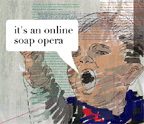
It's an Online Soap Opera
Corrugation Street--by Dave Miller--is an experiment in collaborative storytelling and networked narratives. It’s a soap opera that you can help write. Get involved in making the story. Be a co-author, co-illustrator or a researcher. Change the subject of the story, the mood, or the look and feel. Create your own unique version of the story, told in your own personal way.
Your selections decide how each scene in the story will look. The subjects and search terms you choose decide which pictures and RSS feeds are pulled in live from the Internet. It’s impossible to predict what results you’ll get, but your choices will have a big effect on the story.
Add your own RSS feeds if you have particular subjects you’d like to add to the stories, and you know the RSS link. If you’d like to add your own image, whether on the internet or on your own computer, add the URL or file path to include it in the story. When you click the ‘Make my story!’ button, the generator script gets busy. Text and pictures are pulled from the Internet, processed and mixed in with my story.
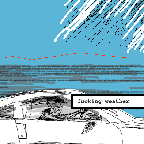
Chinese Cocklepickers is an interactive narrative which deals with the tragedy of the chinese migrant workers who died in Morecambe Bay, in the tragic events of February 2004. There are many separate and interconnected strands to this story: the experience of the workers who drowned, the bosses exploiting their cheap work, the reactions and feelings of the local people, the families in China and their reactions, and lastly the media/political reactions and economics behind the story. These strands are presented as parallel narratives through the story. Each one is small view of the bigger picture, each giving a different perspective. Users can choose their own path through the separate strands, so that they can affect, choose or change the plot. The result, we hope, is that each user experiences the story in a different way, and gains a unique perspective of the story. Design/story: Dave Miller; Programming: Kalle Kormann.
Dave Miller is currently studying a Master's Degree at Ravensbourne College, Kent, UK. His focus is on exploring new interactive story possibilities using networked technology. He's set up a blog to help develop his project and dissertation.
Posted by jo at 05:05 PM | Comments (0)
November 02, 2005
Sal Randolph
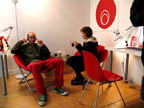
Opsound and Whereyouare
Last night at Upgrade! Boston, Sal Randolph presented two projects, Opsound and Whereyouare. Opsound is a gift economy in action, an experiment in applying the model of free software to music. Musicians and sound artists are invited to add their work to the Opsound pool using a copyleft license developed by Creative Commons. Listeners are invited to download, share, remix, and reimagine. Opsound is currently installed in the Glowlab: Open Lab exhibition at Art Interactive.
![]()
Whereyouare is an experiment in the collective documentation of neighborhoods. Randolph began the project with the idea of documenting her own neighborhood, Williamsburg, Brooklyn, whose quirky and ephemeral beauties are currently endangered by a wave of new development. Everyone is invited to participate by documenting any neighborhood they love. Those with material from neighborhoods which have now been damaged or destroyed by Katrina are especially encouraged to contribute.
Posted by jo at 11:29 AM | Comments (0)
October 31, 2005
Digital Storytelling Festival
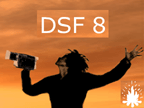
Scape the Hood
Just wanted to let everyone know about the 8th annual Digital Storytelling Festival in San Francisco Oct 7-10 hosted by KQED, public broadcasting. There will be a large locative media presence. The opening night party is the launch of the 'Scape the Hood mediascape, Using GPS-enabled HP iPAQs and software developed by HP Labs, participants will walk the streets and listen to the neighborhood stories, taking in the sights, sounds, and smells from both the physical and virtual worlds.
Peel back the layers of the neighborhood and explore narrative archeology with us. Hear the stories of Project Artaud, once the American Can Company, now transformed into a dynamic live/work space for artists. Experience the Mission Village Market, a bustling flea market on Saturday, but just a ghost of itself on Sunday. Transport to the environs long since erased by the overlay of the city.
Join us for food, fun and the release of the Scape the Hood mediascape, an experiment that combines storytelling and emerging technology by overlaying a digital landscape on the physical world.
The Digital Storytelling festival also includes a session on Situated Storytelling with panelists Nick West, Hana Iverson, Jo Reid, as well as a gaming session discussing place-based tools and techniques.
For more information on the mediascape: lrule[at]kqed.org
Leslie Rule
Project Supervisor
Digital Storytelling Initiative
KQED, Public Broadcasting, San Francisco
(cel) 415-225-1925
New website is up: www.kqed.org/dsi
Posted by jo at 09:29 AM | Comments (0)
October 27, 2005
Frozen Niki

Thoughts on Ice
Nikolaj Osinin is a Russian Cosmonaut who is now a part of Zvezdastella crew. He is in a cryogenic box (he has to remain young and fit until the spaceship Zvezdostella reaches the Magellanic Clouds, to pilot the ship back to Earth) and his brain activity is monitored by the Central Mission Computer. Data is transmitted to the Bajkanur server and fed to Nikolaj’s personal blog. Frozen Niki is a story of this cosmonaut, organized in the form of a blog without text and has to be read from bottom up to follow his fragmentary thoughts and a detective love story.
By Dragan Espenschied (mostly known for being a part of Bodenstandig 2000) and Olia Lialina (author of early web narrations like My Boyfriend Came Back from the War and Agatha Appears). [blogged by Regine on we-make-money-not]
Posted by jo at 02:05 PM | Comments (0)
October 25, 2005
Ifbyphone
![]()
Speak
What happens when you merge computer gaming with great fiction? Interactive Fiction - which lets you play a book or read a game! Also known as Text Adventures, the story narratives are the basis for commanding the characters, progressing through the storylines and reaching a hidden goal, i.e. Winning the game. Now take this well-established game concept, and elevate it into speech! With ifbyphone you speak the game commands and the game talks back...All from any telephone.
Ifbyphone, LLC is a new media company focused on the distribution of recorded and text based information and family friendly entertainment via voice. The customizable features of the ifbyphone voice-based service are available directly to individual consumers and to corporations. This first release of ifbyphone provides web-like access from your telephone without needing to touch the keypad or straining to read a tiny screen. By integrating the sophisticated voice recognition and state of the art text to speech technologies, ifbyphone empowers your cell phone, home phone, or business phone to be a superior voice communications device. [via] [Related]
Posted by jo at 12:33 PM | Comments (0)
October 24, 2005
LOST

Who's running the show?
"Somewhere around the time he glimpsed the shark with the tattoo, a rabid ''Lost" fan named Elan Lee knew there was something different going on: This was a TV show that liked its audience...As director and lead designer at 42 Entertainment...Lee is a pioneer of an interactive form of storytelling, which depends on the Internet and on the audience taking part. It's known as the ''alternate reality game," or ARG, and it's the medium that, for its most devoted fans, ''Lost" has come to most closely resemble...
What Lee and his co-workers devised was less a pitch than an immersive experience -- an exercise in buzz creation, in the form of an Internet-based game. They never mentioned the film itself, but they created a story, loosely connected to the world of the film, and left it for the audience to uncover. It was a hybrid of the serial novel and the Darwin-era scientific process, says science fiction novelist Sean Stewart, who served as head writer for the project. (He's serious.) The programmers spent six months constructing a narrative, breaking it into a million fragments, and hiding it on nearly 1,000 web pages laced with clues, along with certain spots in the physical world..." From Who's running the show? by Joanna Weiss, Boston Globe, October 23, 2005.
Posted by jo at 10:31 AM | Comments (0)
October 13, 2005
City Streets Transformed

Stories come to life in San Francisco experiment
We call this 'narrative archeology', because we're peeling back the layers of the neighborhood.
"Artists, writers, educators and others convening for this year's Digital Storytelling Festival in San Francisco will have the opportunity to participate in a unique storytelling experiment that uses emerging technology to merge the digital and physical worlds.
The experiment, called Scape the Hood, will transform a few seemingly drab city blocks into a landscape rich with sound, sights and stories. Using GPS-enabled HP iPAQ Pocket PCs and a location-based software platform developed by HP Labs, participants will be able to walk around the neighborhood and learn about its history and culture -- and about impending changes to its character.
Artists, mayonnaise and the ice cream truck
Over the course of four days beginning October 7, festival-goers may learn about how a painter's memories of his mother's death inspired a mural, or how artists transformed a canning plant into one of the nation's first live/work spaces or how a vibrant flea market brings together a diverse community.
Participants may hear the gurgle of a creek that ran where a street now lies or the jingle of the ice cream truck or the sound of trains that once carried corn oil to a mayonnaise factory that has since become a Starbucks.
"These stories aren't obvious from the streets," says Abbe Don, a researcher at HP Labs and executive producer of the project. "We call this 'narrative archeology,' because we're peeling back the layers of the neighborhood."
Previous HP Labs experiments
Scape the Hood follows on earlier HP Labs work on pervasive multimedia experiences. Working as part of the Mobile Bristol project, a test bed for technology and user research in mobility and future mobile services, scientists in HP Labs Bristol (UK) have recreated a series of these experiences including what is believed to be the world's first global positioning system "radio play."'
Researchers in Bristol, working with partners from Bristol University, developed the software used in Scape the Hood to place media files, such as sounds and images, in a location to blend in and augment a physical area. Associated software, loaded on to HP iPAQ handheld computers equipped with GPS satellite positioning, allows the user to access automatically the different media files as they move from place to place. An Open Source version of the software is available from Mobile Bristol.
Digital Storytelling Festival
Scape the Hood will take place on the streets surrounding KQED Public Broadcasting, which collaborated on the project through its Digital Storytelling Initiative with HP and a group of San Francisco Bay Area artists, storytellers and technologists including representatives from Antenna Theater, the Project Artaud artists' cooperative, San Francisco State University. The project was supported with a grant from HP.
The Digital Storytelling Festival, this year celebrating its 10th anniversary, aims to promote and evolve the art and practice of digital storytelling, offering workshops, panel discussions and speakers. KQED is the premier sponsor and host of this year's festival.
For more information, see the Digital Storytelling Web site." -- Jamie Beckett, Oct. 2005, Hewlett-Packard.
Jamie Beckett is managing editor of the HP Labs Web site and a veteran newspaper reporter and editor.
Posted by jo at 11:35 AM | Comments (0)
October 11, 2005
Sensory Threads

Adding Sentient Knowledge to Machine Data
Sensory Threads aims to stimulate and inform a public debate on how personal biosensor data is collected and used in biomedical science. It will combine an artistic with an evidence-based approach, building and testing a prototype body biosensor network that uploads data to Urban Tapestries. This will allow participants to map experiential and emotional annotations to their readings – adding a whole new layer of sentient knowledge to machine data. It is intended to demystify how data is collected, what it produces and how we can correlate it to other factors affecting health such as environmental pollution.
By testing our ideas in real world situations we hope to investigate how empirical data collected from sensor readings attached to the body can be interpreted in a variety of different ways by different disciplines, revealing its limitations for healthcare applications and in the long term for the public. We aim to address the social, cultural, environmental and ethical concerns implied by the reliance on sensor data for understanding the complex interactions between the body and its environment...
Posted by jo at 03:19 PM | Comments (0)
October 07, 2005
i.plot
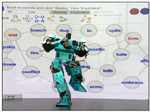
Chaos Engines and Hidden Relationships
i.plot investigates the future of narrative by studying the hidden relationships and contextual emergence of language. The goal is to generate interactive literature and scripts for interactive cinema. One of i.plot's innovations--Inspiration Space--is its ability to determine that a connection between two words exists...It finds several connections between the words by tracing a large set of possible paths between them, so that the paths traverse several two-word connections. If the chaos engine is in an appropriate state, a preference may be added so that longer paths are displayed, or so that the paths are forced to connect through a more distantly connected word. The user may further expand the connections of any word of interest...
Posted by jo at 09:29 AM | Comments (0)
September 28, 2005
Zhong Shuo
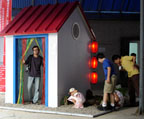
24 Hour Access to China
Zhong Shuo (People Say...) is a sound installation made collaboratively by Australian sound artist Iain Mott, Beijing visual artist Ding Jie and the Chongqing art collective the Li Chuan Group comprising Li Chuan, Li Yong and Ren Qian. The work acts as a system for the collection and telling of stories and focuses on the rapid force of change in China. The exhibition at the Long March Space in the Dashanzi district of Beijing, marks the first stage in what ultimately will be a series of installations connected to each other via the internet. It will consist of up to three individual installations set up in three cities including Beijing, Chongqing and potentially a third location on the route of the Long March.
Stage 1 was launched at the Long March Space, Dashanzi, Chaoyang District, Beijing on 20 August 2005. Stage 2 is currently underway in Chongqing with the Li Chuan Group. The exhibition is to be held in the Chongqing Planning Exhibition Gallery at Chaotianmen Square.
Each installation will pose a question to visitors, asking them to tell a story of their experience of change. In Beijing, Ding Jie's design establishes a gently ironic environment for public interaction. Created in the form of a Chinese garden, a kiosk houses a telephone for contributing stories and an adjoining rock-pool plays host to a small school of goldfish and water-plants. Hidden away in the rocks and shrubs is a loudspeaker, which plays a steady stream of stories that have been automatically recorded and edited by a computer. This sound, in addition to the voices, includes ambient sound recordings collected locally and is edited in the style of radio documentary.
Once the other installations have been established, stories will be shared between sites by way of networking. In this way, visitors will be able to reflect on varying perspectives on change. Each installation will share copies of the stories collected remotely and these will be edited together mixing both dialects and points of view. Additionally, the sounds played by the installations will be streamed to the web as internet radio, giving 24 hour access to Chinese speakers both nationally and internationally. Information on this radio channel will be announced by the Long March Space before the opening.
Posted by jo at 08:48 AM | Comments (0)
September 27, 2005
1001 nights cast
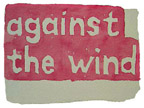
Tune In
As of tomorrow, I'll be into the three digit figures of the 1001 nights cast and also crossing quite a few time zones on my way back to Sydney. Here's some information about the next few performances if you want to keep track of performance times:
# 99 from PARIS on Sept 27 at 19:38 local time
# 100 from Changi Airport, SINGAPORE on Sept 28 at 18:59 local time
# 101 from Changi Airport, SINGAPORE on Sept 29 at 18:58 local time
# 102 from SYDNEY on Sept 30 at 17:57 local time
From then on, sunsets in Sydney will get later and later and on October 30 SOME of Australia, including Sydney, switches to daylight saving. On that day sunset in Sydney will be at 19:21. This is also the date on which much of the northern hemisphere reverts from summer time to standard time.
Please use the time zone converter to calculate your local time in relation to mine on any given day.
Since performance # 50 some great new writers have contributed to the project. The current full list of writers is:
Oskar Backent (just turned 7)
Lionel Bawden
Anne Brennan
Lucy Broome
Barbara Campbell
Deb Cox
Mira Cuturilo
Domenico De Clario
Jai McHenry Derra
Craig Doolan
Nola Farman
David Hagger
David Hansen
Helen Idle
Seth Keen
Alex Keller
Boris Kelly
Declan Kelly
Caroline Lee
Eden Liddelow
Rivka Mayer
Deborah McBride
Robyn McKenzie
Sarah Miller
Ninna Millikin
Ross Murray
John O'Brien
Marian Pastor Roces
Dee Prichard
Greg Pryor
Joseph Rabie
Ian Reilly
Andrew Renton
Neil Roberts
Danielle Roddick
Jade Shum
Ann Stephen
Rob Stephenson
Miriam Taylor
Philip Terry
Paul Threlfall
Helen Townsend
Sophie Townsend
Margaret Trail
Cynthia Troup
Patsy Vizents
Van Waffle
Frazer Ward
Ingrid Wassenaar
Marion White
Diana Wood Conroy
Amelia Young
Ellen Zweig
I cannot thank them enough for the quality and generosity of their writing. Always a pleasure to perform.
Barbara Campbell
http://1001.net.au
Posted by jo at 10:43 AM | Comments (0)
September 12, 2005
glocalmap.to

Digital Turin for the 2006 Olympics
How do urban dynamics change in the digital era? What tools does technology give us to aid the study and design of the territory? A concrete answer to these questions comes from the project by a Turin group of architects and new media experts. Maurizio Cilli, Carlo Infante, Riccardo Mantelli, Filippo Moncelli, Max Paccagnella and Stefano Ruggeri have created glocalmap.to, a digital map of the Turin Olympic area, developed for the Cultural Olympics in collaboration with TOROC, the Games' organising committee.
Global and local, glocalmap.to is an interactive web platform open to inhabitants and tourists alike; for the 42 days of the Winter Olympics in February and March 2006, they will be asked to say what they think of their city. It works quite simply: those wishing to do so can send a message (sms, mms and e-mails with attachments), which will be stored and displayed at a precise point on the map, visible to all via a number of screens. Apart from the play factor, glocalmap.to is intended to represent an experience of participation in urban planning.
For the future they are considering a vectorial version that will allow architects to place their projects directly on the territory. The aim? To trace a new spontaneous map of Turin that will reveal fresh and unexpected geographies. The presentation of the project is scheduled for 6pm today at the Atrium foundation. The speakers are Giovanni Ferrero, Maurizio Cilli, Stefano Boeri and Paolo Verri coordinated by Carlo Infante. Footnote: The Beach club, Turin's urban beach on the River Po, is celebrating its fifth birthday and hosting an open meeting of the Domus editorial team from 8pm onwards.
Torino, Italy
Glocalmap.to
14.9.2005, h. 18
Atrium, via Pietro Micca 21
14.9.2005, h. 20
Club The Beach, via Murazzi del Po 18
http://www.thebeachtorino.it
Posted by jo at 11:19 AM | Comments (0)
September 06, 2005
The Wallpaper

One Story, Multiple Viewpoints
In The Wallpaper, various elements of a visual and aural scene (humans, chairs, desks, ambient sounds) are recorded and stored separately from each other in a computer and then recombined in real-time during playback according to instructions in a script. Representing the scene in this way allows the creator of this piece to experiment with changing camera angles and shot selection, swapping characters, and modifying acoustical characteristics based on audience interaction in order to express different subjective points of view of the same story. The piece is also responsive to passive circumstances of its delivery, by showing more or fewer cuts and close-ups depending on the size and shape of the viewing window.
These two MPEG movies [1] [2] are two of many possible playouts of the production. One presents the story from John's subjective point of view, and the other presents Kathy's point of view. You will notice differences in shot composition, close-up placement, backgrounds, ambient sounds, and acoustics. The system is also capable of blending these two "extremes" to produce versions that mix the two story perspectives to different extents. In the actual piece, the viewer has real-time control over the subjective story perspective and the camera position. The Isis object-based media prototyping environment was used to script the entire presentation.
Posted by jo at 11:05 AM | Comments (0)
Tangible Viewpoints
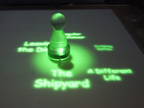
Graspable Surrogates in Multiple Point-of-View Interactive Narratives
Today's story creators have the opportunity to bring digital stories back into our physical environment. Using wireless and tag-sensing technologies, interactive narratives can make use of rich, haptic interactions with physical objects, combining them with the flexibility of digital multimedia content processing and delivery.
The Tangible Viewpoints project explores how physical objects and augmented surfaces can be used as tangible embodiments of different character perspectives in a multiple point-of-view interactive narrative. These graspable surrogates provide a direct mode of navigation to the story world, helping to bridge the gap between the realms of bits and atoms within the field of multimedia storytelling.
Using a system for interacting with a character driven-narrative, the different segments of a multiple point-of-view story are organized according to the character viewpoint they represent, as well as their place in the overall narrative. These segments can consist of various types of media (video, audio, images, and text), and can present character development, action, and location with as much complexity as any scene of a film or chapter of a book.
Posted by jo at 10:26 AM | Comments (0)
September 02, 2005
URBANtells
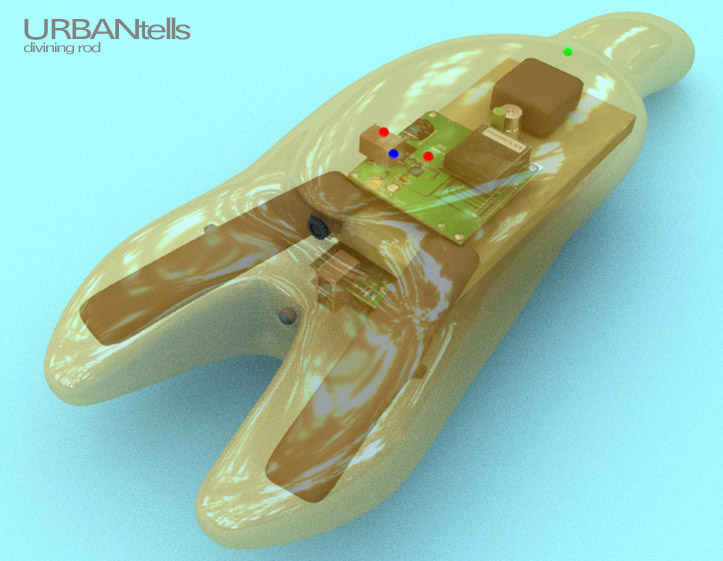
Exploring the City with Digi-Diviner
URBANtells is a mobile sound installation in which the user explores a neighborhood on foot, "data-diving" with a handheld device called digi-diviner. Participants will provide their cell phone and email address to an attendant at a kiosk. In return, they will be given a digi-diviner to walk and explore the neighborhood. A minute or so after they go outside a real time mix of sound art and verbal information triggered by their location will start to play through an earbud attached to the diviner. The information is a mix of recordings of residents and historians, text-to-speech synthesis, recitations, musique, and other processed sound. The information will address the complex layers of personal and collective histories and experience in urban environments, and the degrees to which these acoustic "tells" influence behavior and development within a community similarly to traditional, physical structures.
Users will be able to upload sounds, text, and still images they capture with the diviner en route. This information will be available to other users. Upon returning to the kiosk, participants will receive an interactive Google map of their specific walk via email, containing buttons to play sounds and view images they may have uploaded during their trip. Urbantells, a project by James Rouvelle, Joe Reinsel and Steve Bradley, opens June 2, ‘06 at Art Interactive, Cambridge, MA. [blogged by Regine on we-make-money-not]
Posted by jo at 08:30 AM | Comments (0)
September 01, 2005
Jumping Rope
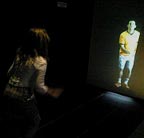
Action Driven Narrative
Jumping Rope is the classic children's game of jump rope transferred into the digital world. Your skill at jumping an invisible rope determines the course of a film narrative. You have to stand between two projection surfaces that each display a different figure holding a jumping rope. You can see on the screen how they are turning the rope but you have to mentally see the rope in order to jump on time. Your talent at jumping is evaluated by a video camera equipped with motion-tracking technology.
If you're good at it, the characters are encouraging and play with you. There are three different scenarios played by three different couples. The installation offers a simulated life situation in which you, as an adult, suddenly realise that your behaviour is pruned through a haunting invisible rope by the people around you (your parents, colleagues, boss, etc.), that you might be "trapped" between two characters or still be dancing to someone else's tune.
In Jumping Rope, the participant becomes a part of the cinematic situation and their jumping enables the scenario to progress and the plot to develop. A work by Portugaly Orna, Talithman Daphna, Younger Sharon (who also made Heartbeats). Video. [blogged by Regine on we-make-money-not]
Posted by jo at 06:00 PM | Comments (0)
August 31, 2005
Mediamatic Interactive Film Lab @ Budapest

6-day Workshop
The Intermedia Institute of the Budapest Academy of Fine Arts is going to host a Mediamatic Interactive Film Lab. Intermedia has promoted the contacts of art and technology in the past years, building up an extensive network in Hungary and Europe. As part of its diverse interest in non-linear modes of narration, the Intermedia Institute invites participants to share experiences and create prototypes for online interactive film projects.
The workshop is designed for up to 16 film-, tv-. radio-, or new media makers from all over Europe. You can use your own footage (up to 40 min) to make an interactive film and publish it on- or offline. The approach is interdisciplinary and introduces new media and cross media content production to people with a background in filmmaking.
The workshop focuses on the cinematic aspects of online interactive film and on issues of combining narratives with interactive possibilities. Participants use the ever-evolving Korsakow software to build their new media projects. Developed by the UdK Berlin and Mediamatic, Korsakow is a powerful, elegant, and easy to learn editing tool.
This 6-day workshop takes place from October 3 - 8. It starts with a symposium and ends with a public presentation of workshop projects.
The price of the workshop is 200 EUR for EU citizens of the new memberstates, and 300 EUR for EU citizens of older member states. Mediamatic provides fully equipped Apple Computers for this workshop.
For more information go to www.korsakow.org or call Klaas Kuitenbrouwer: +31 20 6389901.
You can register online.
To prepare for the workshop we provide an online reader with related articles on interactivity and narration.
Posted by jo at 09:10 AM | Comments (0)
August 24, 2005
Node Explorer

It Knows Where You Are
"This tiny electronic prototype, called an Node Explorer, detects exactly where I’m standing within the 850-acre parkland surrounding Ashton Court, because it’s equipped with an internal Global Positioning System (GPS) based on satellite signals, accurate to within about three yards.
On screen, I see myself as a little red dot moving slowly over the grass. Depending on where I wander, an entirely different heritage or cultural story is presented through a combination of pictures, sound effects and narrative, all related to where I’m standing and what I’m looking at.
I walk to the bottom of the lawn. Ping! With the sweeping façade of Ashton Court spread like a film set, the screen shows me how the building has changed over the centuries, images building upon images as a voiceover explains why the place looks as it does now.
The tone of the script is light, brief but serious - a cross between Radios 2 and 4. (Later, I discover that the material has been written by an ex-BBC producer and narrated by a local radio presenter.)
I move 50 feet towards some flowerbeds and… ping! I’m urged to look up at the fourth window from the left where the 19th-century stunner Emily Smythe - “the most beautiful woman in the West of England!” - once gazed from her bedroom at the rural landscape stretching to the city. The screen shows me her picture. It tells me that men used to swoon at the sight of her. It shows me her bedroom. I walk to the front of the building. Ping! I learn that the writer CS Lewis was a patient here during the First World War, when this became a military hospital." [via It knows where you are... and pasta and vinegar]
Posted by jo at 10:36 AM | Comments (0)
Schema
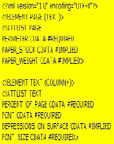
Instructions + Thought Experiments Made Tangible, Now Machine-Readable
XML Translation of Dan Graham's "Schema" by matt_butler: In 1966 conceptual artist Dan Graham composed a language-based work entitled Schema. The artwork consisted of a formal procedure for how to describe a document, or a "set of pages," with no real reference to the content of that document. This schema, as he called it, shares a remarkable similarity with XML, invented over 30 years later.
The conceptual artists of the late 1960's and early 1970's were interested in the nonvisual abstraction of art and how artworks might be represented as information. Using language in a non-literary and non-poetic manner, they sought to continue the tradition of visual artists in a search for abstraction and minimalism. Many conceptual works of this time were simply words on paper, instructions, or thought experiments. Schema allowed the viewer to be aware of the material nature and structure of the document they were holding — as well as any document they might hold. Using XML, I have created a machine-readable translation of his 1966 work. Schema was originally published in issue 5+6 of Aspen magazine. It is now being archived at UbuWeb.
Biography:
m.f.a. university of iowa (intermedia art). ph.d omega university (unaccredited parapsychology). maybe logic academy (robert anton wilson instructor).
matt is currently employed at the iowa city public library where he produces television programs for the library channel. he also teaches digital art at coe college in cedar rapids, ia.
matt has participated in a variety of art and technology events including versionfest at the m.c.a. chicago. his published books can be found at printed matter, inc. new york. [via Rhizome]
Posted by jo at 09:52 AM | Comments (0)
160 Characters
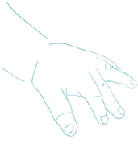
U Pt Yr Rt Ft In...
"How did you learn your first rhyming games? From other kids, right? As children we entertained ourselves by combining words, rhythm, and rhyme. Now we're big kids with grown-up toys, and Anita Bacic has built a new playground for us. 160 Characters is an exhibition of nursery rhymes, songs, and games gathered from all over the world, via mobile phones. People can contribute to her archive by text messaging lyrics and stanzas to a centralized phone number. The collected messages will form part of a multimedia installation, with a selection chosen for viewing with a retro slide viewer. Contemporary text messaging abbreviations and multi-lingual submissions are encouraged, thus opening the lid on a whole new toybox of ideas for those linguists and cultural studies buffs who like to play with notions of digital storytelling in the global village, the hybridization of culture through technology, or the role of mobile communication in creating new diasporas. So come on out and play--after all, isn't the 'Hokey Pokey' really what it's all about?" - Peggy MacKinnon, Net Art News, August 24, 2005, Rhizome.
Posted by jo at 09:27 AM | Comments (0)
August 22, 2005
Asterisk*: Artists Residencies

The Centre for the Study and Development of Narrative
Asterisk*, (the centre for the study and development of narrative) is based at Shandy Hall in North Yorkshire where Laurence Sterne wrote The Life and Opinions of Tristram Shandy, Gentleman. It is a concept developed by The Laurence Sterne Trust that aims to use the spirit and intellectual resources of Shandy Hall to inspire artists and the public to explore and experiment with nonlinearity, and to examine and develop the convergences between art forms within our contemporary culture. It aims also to illustrate how new technology can, in the hands of artists, be used to deliver entirely new artistic opportunities. In the autumn and winter of 2005, Asterisk* will offer two residencies of three weeks duration each. These will provide exceptional opportunities for artists keen to experiment with current practice in diverse media, specifically exercises in non-linearity, with an emphasis on interactivity and audience participation. Intersections with technology are encouraged and technology specialists will be available for collaboration. Deadline Friday 26 August.
Posted by jo at 07:24 AM | Comments (0)
August 17, 2005
MATISSE & SMS
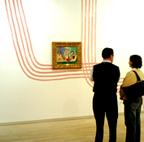
Different takes on Matisse
MATISSE & is the title and framework of an experimental exhibition currently running at the Danish National Gallery (Statens Museum for Kunst) in Copenhagen. Works by three contemporary artists - Malene Landgreen, Jesper Just and Aino Kannisto - are practically and conceptually intervowen with the work of Matisse and visitors can access a sub layer of information via their mobile phones.
More precisely, by sending an SMS to a phonenumber situated next to the individual artworks, visitors recieve a text message - a thought or a statement - formulated by Landgreen, Just or Kannisto. Furthemore, visitors can also submit their own thoughts as well as recieve messages submitted by previous visitors, thus enabling them to interconnect via their feedback. [via guerrilla innovation]
Posted by jo at 05:29 PM | Comments (0)
August 15, 2005
Eavesdripping
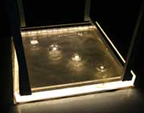
Rendering Communication Visible and Experienceable
Eavesdripping, by Sascha Pohflepp, uses water as medium and display to render invisible communication visible and experienceable. A matrix of magnetic nozzles opens a valve when current is applied. To add some controllability to the setup, a computer running MAX-MSP/Jitter processes information and connects to two relay-boards which are controlling the individual nozzles.
To increase the visibility of the splashes on the ground, the water surface sits in a container made of clear acrylic. From one side, light is being pumped in by an array of super-bright LEDs. Since the acrylic and also the surface of the water is subject to the effect of total reflection, the water stays perfectly black. However, when a drop of water breaks the surface, the light brightly lights up the spot.
Because the way of displaying is physically so present, it would be best to initially use it to visualize something and make it sensually experienceable which is equally present, but not perceptible. The metaphor of the installation would be to wash something from the air and make it visible on the ground in front of you. The idea of visualizing internet wireless conversations emerged. For achieving this, the packages were successfully "sniffed" from the air, parsed to readable text, processed for being output in the form of drops and then displayed on the ground for everyone to read. Video. See also Erez Kikin-Gil's Water Play. [blogged by Regine on we-make-money-not]
Posted by jo at 12:24 PM | Comments (0)
August 11, 2005
YUCEF MERHI
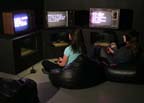
Poetic Engineering
Poetic Engineering: Poetry and electronic media merge in this solo exhibition of works by new-media artist Yucef Merhi. An artist, poet, and programmer, Merhi engages electronic devices-computers, video games systems, and other machines-in the presentation of his written words. The resulting artworks expand the limitations of language and the traditional context of poetry, proposing a bold new role for the poet in our culture.
By the time Merhi began writing poetry at the age of ten, he was already familiar with the languages of computer programming and had become highly skilled at manipulating computers and other complex machines. Since then, much of his artistic practice has involved exploring what he describes as "the bond between natural languages (English, Spanish, Hebrew, etc.) and programming languages (Basic, C, Java, Assembler, etc.)." Through works that explore the connections between technology and language, Merhi presents new ways of experiencing poetry and, in turn, proposes a more humanistic view of technological advances.
Poetic Engineering is organized by the Orange County Museum of Art and curated by Irene Hofmann, Curator of Contemporary Art. Through August 28, 2005
ORANGE LOUNGE,
a New Media Satellite
of the Orange County Museum of Art
South Coast Plaza
3333 Bear Street # 303
Costa Mesa, CA 92626
949-759-1122 X272
http://www.ocma.net/orangelounge
Artist-in-Residence
In conjunction with Poetic Engineering, Merhi will be in residence during the month of August conducting a series of intensive teen workshops. Working with Orange County high-school students, he will engage participants in an exploration of poetry and new media and will involve the students in the art-making process.
About the Orange Lounge
The Orange County Museum of Art ‘s Orange Lounge at South Coast Plaza, is the first museum space on the West Coast to regularly present digital art and video and the only space of its kind in the United States located in a major retail complex.
The Orange Lounge presents solo and group exhibitions and special events featuring artist demonstrations, performances, and discussions that investigate the impact of digital media on contemporary visual culture. From real-time computer-generated moving images, to room-sized video installations, to artworks based strictly on the Web, the Orange Lounge is a dynamic site for exploring and interacting with new media art. Catalogues, CDs and other products related to video and new media are available in the Orange Lounge.
Exhibition Sponsors
The Orange Lounge design and construction was funded by the Segerstrom Foundation. Major support for Orange Lounge programs is provided by The James Irvine Foundation and technical support is provided by Integrated Media Systems.
Photo credit: Christopher Bliss
Press contact: Kirsten Schmidt, kschmidt@ocma.net
Posted by jo at 04:04 PM | Comments (0)
August 05, 2005
ELO’s Born-Again Bits Released
![]()
A Framework for Migrating Electronic Literature
Following up on its pamphlet Acid-Free Bits: Recommendations for Long-Lasting Electronic Literature, ELO has released online Born-Again Bits: A Framework for Migrating Electronic Literature by Alan Liu, David Durand, Nick Montfort, Merrilee Proffitt, Liam R. E. Quin, Jean-Hugues Réty, and Noah Wardrip-Fruin. Part of a continuing series of publications by ELO’s Preservation, Archiving, and Dissemination (PAD) initiative, Born-Again Bits is a white paper that presents a conceptual, technical, and institutional framework for imagining how electronic literature — more experimental and harder to preserve than many other kinds of digital materials — can follow standards-based paths of migration into future technical environments. Two main kinds of migration strategies are addressed under the titles: “Interpreter Initiative” and “X-Lit Initiative.” (For a printed copy of this publication, contact Carol Wald at ELO.) [via]
Posted by jo at 08:31 AM | Comments (0)
August 02, 2005
Christopher Strachey:

The first digital artist?
"Christopher Strachey is rightly viewed as a pioneer of modern computing. He’s not usually, however, viewed as the creator of the first work of digital literature. Research toward my submission for DAC, however, has lead me to believe that he was — and that his initial digital literature project was also, quite probably, the first piece of digital art. I’d be quite interested to hear any thoughts (or refutations) from GTxA readers.
To begin with, however, I should explain that when I use the terms “digital literature” and “digital art” I mean something in particular by them." Continue reading Christopher Strachey: The first digital artist? by Noah Wardrip-Fruin and get involved in the discussion (blogged by Noah on Grand Text Auto].
Posted by jo at 10:29 AM | Comments (0)
July 26, 2005
Storied Theory
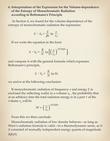
The Story Is in the Theory
"...All theories tell a story. They have a beginning, in which people and ideas, models, molecules and governing equations take the stage. Their roles are defined; there is a puzzle to solve. Einstein sets his characters into motion so ingeniously, using entropy to tease out the parallels between moving molecules and the energy of light. The story develops; there are consequences of Einstein's approach. And at the end, his view of light as quantized and particular confronts the reality of the heretofore unexplained photoelectric effect. The postscripted future, of all else that can be understood and all new things that can be made, is implicit.
Perceptive reader Anne Poduska notes that the photoelectric paper "is particularly interesting because of the layering of perspectives (similar to legends being passed from one generation to the next, with each storyteller adding their own flair/details)."..." From Storied Theory by Roald Hoffmann, American Scientist Online.
Posted by jo at 08:22 AM | Comments (0)
asemic

Text|Image
The word “asemic” means “having no semantic content”. Illegible writing or pretend writing could be described as asemic. When we can’t read something which appears to be writing, other possibilities occur. Perhaps we can see a picture instead. Sometimes we can “read” the emotional state of the person who made the asemic writing. Or we can decide that it looks Chinese, or Hebrew, or Indian, or like alien writing.
People from all parts of the world produce asemic writing. They range from poets to calligraphers to visual artists to children to doodlers. Asemic magazine is the only publication specifically devoted to this area. Back issues can be downloaded free. Issue 1 Issue 2 [PDF] [blogged by Wilfried Hou Je Bekon at socialfiction.org]
Posted by jo at 07:50 AM | Comments (0)
July 25, 2005
The Archer's Flight

City of IF
"I just finished reading a fantasy novella titled The Archer’s Flight. As the book’s introduction notes, it was the result of an unusual process:
It was serialized, appearing in seventeen chapters over a year’s time, but that’s not what’s unusual about it. It was published on the Web, but that’s not the unusual part either. What is unusual (and as far as I know, unique) is that this story’s readers chose the actions of its main character. Each published chapter ended in some dilemma for the protagonist, Deica; the audience collectively decided what she would do (via posting and voting on a web site), and their decision led to the next chapter. This was not a group of writers offering advice on what would make the best story; rather, the readers took on Deica’s role, as they would in improvisational theater or a roleplaying-type game. They decided what they would do if they were her.
Mark Keavney is both the author of The Archer’s Flight and the originator of the method used for its creation. He calls this method “storygaming” and describes it in detail in his essay “The City of IF Story.”" [blogged by noah on grand text auto]
Posted by jo at 10:36 AM | Comments (0)
July 06, 2005
Façade + Auto Mata
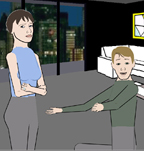
Finally, the Curtain Opens on Façade
This long-awaited one-act interactive drama, featuring a 3D environment and voice-acted, AI-driven characters, Façade has been a testbed for research in and development of new discourse-based NLP techniques, a new drama management framework, and new ways of allowing behavior hierarchies to interact. It has been the source of more than a dozen academic publications co-authored by Michael and Andrew, as well as Michael’s Carnegie Mellon University Ph.D. dissertation. A pre-release version of Façade was a finalist in the 2004 Independent Games Festival. Façade is also delightfully entertaining and abundant in its dramatic and artistic merits. It offers a fairly short dramatic experience that is intensive and compelling, and unlike anything else I have seen in video games or other interactive systems.
The New York Times called Façade “the future of video games” and one person who has devoted his life to interactive storytelling, Chris Crawford, said the system was “the best actual working interactive storyworld yet created.” You can read the official press release on Façade, read on for more about the release, or skip directly to the download page on InteractiveStory.net.
From there, you can download the 800MB program via BitTorrent; Andrew and Michael also provide the program on two CDs which are sold at cost, for $14 plus shipping.
Since the program is provided for free and and the CDs set is sold at cost, and because you like schwag, you may also be interested in supporting the creators of this system by purchasing some of the Façade merchandise that is available. The items for sale include the “hint book” Behind the Façade, which Andrew and Michael will email for a donation of only $5; there are also T-shirts, a hat, and other items.
Although we love for you to post comments here, and hope that you will, there will also be a bulletin board set up on InteractiveStory.net for detailed discussions of matters related to Facade. I can’t wait to hear what others think of this piece. Michael and Andrew tell me that they are also eagerly looking forward to people’s feedback about, comments on, and criticism of the first fully-realized prototype interactive drama, Façade. [blogged by Nick on Grand Text Auto]
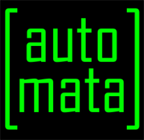
Auto Mata: A New Label for Computer Lit, Art, and Games
Auto Mata, an independent label for extraordinary e-lit, digital art, and computer games, has just been launched by the six “drivers” of the blog Grand Text Auto: Mary Flanagan, Michael Mateas, Nick Montfort, Scott Rettberg, Andrew Stern, and Noah Wardrip-Fruin.
Façade, the long-awaited one-act interactive drama by Michael Mateas and Andrew Stern, is the first Auto Mata release. The interactive fiction Book and Volume is in the works now and will be coming from Auto Mata soon. [via elo blog]
Posted by jo at 12:22 PM | Comments (0)
VJTheory book
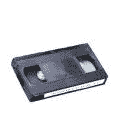
Call for Participation
VJ Theory: Philosophy and Cultural Theory of Vjing and Realtime Interaction: Keywords; narrative, philosophy, psychoanalysis, cultural theory, ephemeral, performance, technology, aesthetics, politics, ethics, realtime processing, collaboration, integrating media.
During AVIT UK 05 there was a fantastic level of debate based on both the theory and practice of VJing and realtime interactive installations and the questions those practices rise. Paul and Lara have been organizing Narrative Lab, a program of lectures, screenings, performances and projects as a major strand of AVITUK since 2003. The group has been seeking to encourage debate, spark new work arising from theory and facilitate collaboration examining the territories of narrative. Over the last two years the narrative Lab has hosted lectures on hypertextuality, meta narratives, psychogeography, screen aesthetics, structuralism, process methodologies and various production techniques.
These theoretical debates have now expanded across many of the other sessions. What became apparent was the lack of written texts which attempt to deal with these questions which involves everybody's practice. With this in mind we propose to gather a collection of articles and essays which begins to deal with these new media debates.
We see this volume as paralleling the early anthologies of film criticism, such as 'Movies and Methods' by Bill Nichols, containing a broad range of analytical perspectives relating to the new medium.
This is an invitation to submit a short synopsis, propose an article or ideas to be published as a book.
Please send it to the following e-mail address:
vjtheory[at]yahoo.co.uk
Here are some suggested areas, please feel free to suggest your own:
1- Narrative and hyper narrative
+ The cultural position of narrative
+ Meaning in narrative
+ Narrative Structures
+ New narrative
+ Cognitive process and discourseNarrative Practice
2- Ethics
+ Copyright and "copyleft" (the creative commons open source software and gnu licensing)
+ Cross cultural appropriation of imagery themes and content (sources for video and other visual assets and it's relation to the social)
+ Commercial sponsorship and market flooding
3- Real time processing and the problem of the "now"
+ Problem of the 'real' and the problem of the "now"
+ Internet realtime data
4- Collaboration and rhizomic relations
+ Vj <> Dj/ Network collaborations
5- Philosophical and cultural perspectives including
+ Phenomenology
+ Language and the body
+ Schizoanalysis
+ Semiology
+ Feminist analysis
+ Deleuzian movementImage Habermas and the relationships with cinema and theatre
6- Interaction
+ Public/ work interaction (how much should the interaction be apparent to the user of an installation for example)
+ Vj <> interaction
7- Software
+ Open source and proprietary software
+ Latest software developments and software in development
+ Software and ideas led production of work
8- Aesthetics
+ Moving wallpaper
+ The problem of the formal time/movement image
+ Control and the dispersal of control
+ Crafting the image and its relations
+ Abstract animation (e.g. Oscar Fischinger, Len Lye) and it's relation to reactive 3D modeling.
Posted by jo at 11:53 AM | Comments (0)
Towards Professional Participatory Storytelling:

Mapping the Potential
"Abstract: The impact of the Internet on the professional identity of media professionals whose work is defined by creative storytelling — whether in advertising, journalism, public relations or related fields — is the theme of this presentation. The central question raised is to what extent storytelling can be content- or connectivity-based, and what level of participation is included in the narrative experience. This presentation features examples and analyses of contemporary media work between content versus connectivity, and between moderated versus unmoderated participatory communication." From Towards Professional Participatory Storytelling: Mapping the Potential [PDF] by Mark Deuze, Indiana University. Presented at: MiT4: The Work of Stories; May 6-8, 2005; MIT, Cambridge, MA. [via HypergeneMediaBlog]
Excellent excerpts:
"It could be argued that media users never existed as audiences — people were framed that way for a brief moment in time one may call the 20th century. However, almost all of the professional and scholarly literature on journalism and advertising in the United States and The Netherlands consolidated and reified the notion that the stories these media professionals were expected to tell served to inform, persuade, entertain and enlighten an otherwise more or less anonymous 'mass' audience. To some extent this accounts for the top-down, (informally) hierarchical, routinized and bureaucratized organization of news companies and advertising agencies — a physical and social organization that by its sheer culture of doing things seems to exclude multiple-way communication or any kind of meaningful dialogue between media users and producers.
"In other words: in a contemporary ecology where American and Dutch people of every ilk seem to be immersing themselves almost constantly in media, the people still earning the bulk of their salaries producing media content do not or even cannot see them as their peers."
"Audiences, clients, sources and publics are the Other, kept at bay by structural couplings — as professed in mantras like 'serving the public' or 'creating added value for the customer' — but cannot be considered to have any direct role in the everyday praxis of media work. Surveys among journalists in The Netherlands and the United States for example show how they appreciate and value feedback from members of the audience, but that these reporters and editors at the same time would not change their ways of doing things on the basis of critical feedback received from the public.
"The literature on journalism and advertising suggests that ultimately media workers primarily seek recognition and acclaim only from their colleagues and not necessarily from citizens or consumers."
"A continuation of existing models of professional identity is meaningless unless it coincides with a radical reworking of the basic premises underlying our concept of professional identity in the media industry. I would like to argue that a future professional identity of media work could only be maintained if it includes a participatory culture as for example indicated by a notion of storytelling as a collaborative experience embedded in is mode of operation. In other words: Advertisers and journalists should be trained to think about the stories they tell as co-created with people who they used to name (and thus effectively excluded as) audiences, users, consumers or citizens, but who are now Rosen's aforementioned 'egocasters,' living in a thoroughly individualized culture dominated by personal technologies (like the cell phone, the laptop computer, the digital video recorder and the ubiquitous remote control), annotating and assembling their own, highly customized reality through the media."
Other interesting research presented at MiT4:
• Digital Stories of Community: Mobilization, Coherence and Continuity (PDF, 181kb)
• How Story Can Tell Games: Narrative and Micronarrative as Components of Game Experience (PDF, 188kb)
• Locating Story: Collaborative Community-based Located Media Production (PDF, 936kb)
• Narrative and Mobile Media (PDF, 386kb)
• The Seductive Storyteller: Authorial Decentralization and the Questionable Invitation to Play within Contemporary Narratives (PDF, 201kb)
• American Media Trinity: The Truth, the News, and the Presumptive Narrative (PDF, 145kb)
• Narrative Knowledge: Knowing through Storytelling (PDF, 192kb)
• The Narrative Imagination Across Media: Dreaming and Neil Gaiman's Sandman (PDF, 96kb)
• Complete list of abstracts and papers presented
• Streaming audio and video from various panels
Posted by jo at 08:40 AM | Comments (0)
July 05, 2005
Targeting the 'Art' Around Every Corner
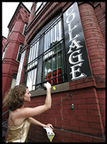
Yellow Arrow Stickers Make a Personal Point About a Public Space
"...Launched last summer by Counts Media, a New York-based arts and gaming company, the Yellow Arrow Project is a kind of geographical blogging. Adherents have been placing the palm-size stickers -- each with a unique code -- on street signs, city monuments, store windows, abandoned buildings -- anywhere, really, that observers encounter what they deem to be "art." Then, using a cell phone, they send a brief text message -- which could be an interesting historical fact, a restaurant review or just some goofy poetry -- to Yellow Arrow. People who come across an arrow can call the Yellow Arrow phone number, punch in the sticker's code and receive that message." Continue reading Targeting the 'Art' Around Every Corner by Tommy Nguyen, Washington Post, Saturday, July 2, 2005; Page C01. [via smartmobs]
Posted by jo at 07:52 AM | Comments (0)
July 01, 2005
Games-Language
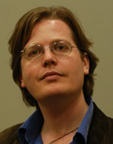
An interview with Noah Wardrip-Fruin
Noah Wardrip-Fruin is a digital media writer, artist, and scholar. His writing/art work creates new experiences of reading through bodily interaction, algorithmic recombination, and exploration of the potential of the network as more than a delivery mechanism. This work has been presented by galleries, arts festivals, scientific conferences, DVD magazines, and the Whitney and Guggenheim museums. As a scholar he has recently edited two books: The New Media Reader (2003, with Nick Montfort) and First Person: New Media as Story, Performance, and Game (2004, with Pat Harrigan), both from MIT Press. Wardrip-Fruin has taught writing for digital media in Brown University's Literary Arts program, New York University's Graduate Film and Television program, and the Summer Literary Seminars of Saint Petersburg, Russia.
His work is discussed in Information Arts (2002), Digital Art (2003), and Art of the Digital Age (forthcoming) - as well as in The Guardian, The New York Times, Technology Review, BBC News, Wired News, and U.S. public radio stories. Wardrip-Fruin grew up largely in California, in the cities of Palo Alto and Long Beach, though his family also spent time in Japan and Boston. He attended Long Beach Polytechnic High School, where his contemporaries included rapper Snoop Dogg, and graduated in 1990. After college, Wardrip-Fruin moved to New York City, where he was an artist in residence and then a research scientist at the New York University Center for Advanced Technology and Media Research Laboratory (1994-2001). At NYU he collaborated with computer graphics pioneer Ken Perlin on the design of next-generation interfaces and received an MA from NYU's Gallatin School, 2000. After NYU he became a professor at the University of Baltimore, where he collaborated with Stuart Moulthrop and Nancy Kaplan on the design of the curriculum for the newly-launched School of Information Arts and Technologies. From Baltimore he moved to Brown University, where he works with Robert Coover and others on exploring the literary potential of digital media (especially the immersive virtual reality "Cave"). He is currently a Teaching Fellow at Brown University, where this interview took place on April, 2005. We talked about Games, Language, Digital Literature and the Future of the Game theory.
Cicero Inacio da Silva* interviewed him.
Cicero Inacio da Silva: You have recently edited a book (First Person) on new media, story and games. Why are you interested in games?
Noah Wardrip-Fruin: For a couple reasons. I think that -- on a fundamental level -- playing games, performing for each other, and sharing stories and poems are deep human activities. All these activities have come to digital media, in one way or another, and I wanted to create a book where people who were thinking about all of these would be in one context, and could actually respond to each other -- so we can start to, through that dialog, think about the field in a broader way. This is part of the motivation. But another motivation was that, although I think this is changing, there was a sense that games were a kind of the Other, the separate thing in digital media. Games were very successful commercially, but very uninteresting from an artistic point of view, from a scholarly point of view. So I also wanted to challenge that a little bit and say: "Yes, games are one of the most popular forms of digital media, but they are also interesting art work, interesting writing, interesting design, and I think that scholars and artists have to contribute to our discussion about making and criticizing games."
CIS: What do you think about the relationship between games and literature?
NWF: There are three relationships that I want to think about. One is the relationship between games and the traditional literature. So, someone like Warren Motte, who has written a book called Playtexts (from the University of Nebraska Press), talks about writers, from the surrealists to the OULIPO, and many others groups, who used play as a way of thinking about their writing process, who used play as a way of thinking about the reading process that they wanted, how the audience can go through the text and engage with the text. That is one of the relationships that I want to think about. Another is that some early computer games were very textual, and some pieces were quite literary; others were graphical, and maybe literary in some structure, but not in the language that they contained. And what happened after that was that our ability to deal with language computationally didn't develop as quickly as our ability to deal with graphics. In the 1970’s and in the early 1980’s we tried to deal with language computationally using ruled-based artificial intelligence techniques, and that ruled-based artificial intelligence…
CIS: You mean an algorithmic process to produce a text or work…
NWF: Yes, right… I'm talking about processes for recognizing and producing natural language. At the moment we have techniques that work very well using statistical techniques, operating with large bodies of language. We use the patterns that we see in these large bodies of language to try to interpret and produce language, and that is more successful. In the 70’s and in the 80’s, we used ruled-based techniques, and we got some results, but could not go further. At the same time, computer graphics took off. Computer graphics driven by military applications, driven by Hollywood, and now driven by computer games, got better and better. So computer games, maybe for that reason, maybe for others, became more and more focused on graphics, and there wasn't much to say about that in terms of literature. Now, I think that is changing. Computer game companies are hiring full-time writers. They are hiring writers who have experience, who think and write through and for procedures. At the same time, our ability to deal with language, computationally and algorithmically, is getting better. So, the second issue to think about is how these things may be producing a new kind of literature, connected to the field of computer games. Now, most computer games are becoming better written, but often toward the goal of being like Hollywood blockbusters. However, I think there is a growing alternative game movement. And the alternative game movement may produce work as well written as good plays or good movies, instead of as the bad movies. The third interesting relationship is thinking about how literary structures may be important to games that it doesn't make sense to think of as literature. An example is quest structures. Espen Aarseth has written about this. Janet Murray has written about this. We don’t want to think about all computer games as literature, but we can better understand some of the structures by using literary models.
CIS: Actually, my third question has something to do with your answer… how do you see the game market with this explosion of these new game technologies, and with the big media companies (like Disney, Warner, etc.) getting inside this field?
NWF: Well, in the US we had our first big boom in games in the early 1980’s, and people like Warner did get involved; they did things like buy game companies. And this was huge in the US, because people were playing so many games… and then came the big bust. The computer game industry entered in a kind of collapse. Some people have interpreted that collapse, in part, as having to do with the intrusion of the big media companies. This leads to people saying: “Big media companies don’t understand games,” and so on. I don’t know if I believe that. It's hard to believe that big media companies categorically can’t understand games. But it is true that, right now, the big games companies are people like Electronic Arts, and people like Microsoft, although also people like Sony, and Sony does have a significant presence in other kinds of media. It'll be interesting to see how these big companies play out. All that said, I think right now most computer games are produced on the model of big media, where we have a big studio that spends a lot of money and takes a big risk trying to create blockbusters hits. And everything that is not a blockbuster hit is a kind of failure. We need to change that. I think computer games are only going to grow as an art form when they become much more diverse that they are now, in terms of their models of production.
CIS: Do you think that this “games invasion” is a fashion, or up-to-date, like the TV in the 50’s and the internet in the 90’s?
NWF: Well, I think TV in the 50’s and the Internet in the 90’s were marked by a struggle to understand something, and this is a struggle, probably momentary…
CIS: Let me situate my question: I think that the internet changed many points about our culture, and I think that, even today, we still cannot understand exactly what happen through the internet and on the internet. Now we have this game culture, which also uses the internet. Today, we still are thinking about what is the Internet, what kind of impact it has in our representations. I think that it is a great impact, it is something important…
NWF: Right. I am thinking that my mother has a laptop that she carries with her, not just when she travels, but she carries it around the house, you know…
CIS: My parents do the same...
NWF: Right. And when she is thinking about something, and she wants information about it, she opens her laptop and she does a web search. And, usually, the information she wants is right there. I think we haven’t finished thinking about what that means for our culture. For one thing, I think a large group of people assume that the online world is going to be like a library, with a lot of information available for free. That is very powerful, because the most powerful thing is what people take for granted, and what they take for granted is that the internet is a library, and if you try to change the internet and stop the internet from being a library they are going to say: “What?” They know that the internet is a library, and we can only see how that developed in retrospect. In the 1990’s we were saying: “What is the internet going to be? Is it going to be like cable television?” Now we know that for people like my Mother the internet is like a library (and email). We don’t know yet about computer games. We don’t know what sort of dominant models will develop, or if they will be like the current dominant models, or how they will challenge our expectations. But, certainly, for those in their 30’s and younger, we have a group of people who expect games to be part of daily life: not set apart in the arcade, but played on a console with a television; or played on a computer where they also do their work; or played on a device that they can keep in their pocket, like a Game Boy. So I think that it is taken for granted that games no longer are separate, and that will be, maybe, one change that we will start to see.
CIS: Yes, it was interesting when I was playing a certain game and, inside the game, I found I could go to the bank. It impressed me that while I play I am able to go to the bank, check my balance account, or transfer money to someone. In some cases, you can go to the supermarket and do some shopping. Also, we start to see a lot of ads inside the games...
CIS: What do you think about the critic view on VR, related to aspects like “reality” and “virtual”? Do you think that, with the VR, we are trying to build a new cave for our lives, as Plato pointed out, or that we are trying to understand how we are what we are? Do you agree with the point of view that we are outside Plato’s cave, and now why come back? We are already out, and there is nothing interesting outside, so now what?
NWF: (laughs…) If I remember Plato's cave correctly, there were chains, and we could only see shadows. OK, this is not the literal cave, and not the literal chains, either. So one thing that interested me about a lot of theories of virtual reality was the assumption that we could use VR to reproduce normal spaces, and to create impossible spaces. But I think that computer games are the closest thing that we have to popular Virtual Reality, even if it’s not stereo display. People move through virtual spaces a lot. Most of these virtual spaces operate by the same physics, as much as possible, as our reality, or contain structures as much as possible like buildings in our reality. It’s much more popular to play a game like Counter Strike than it is to play a game like an abstract shooter, where you can move through impossible spaces.
CIS: Like Doom...
NWF: No, let me think of a good example… I'm trying to remember the names of a couple of games made by a guy called The Yak, where what you do is fly. You fly in an abstract vehicle through abstract spaces that are made up with shapes and colors. And some are beautiful spaces, the kind of spaces that I think a lot of early Virtual Reality theorists imagined. And, of course, you are playing a game, and you blow up these beautiful things, and it makes great sounds when you move through it. But this is not as popular as shooting things in much more normal spaces. However, that said, we don’t really know what will become popular for a certain generation. It could be that when people who are now in their 30’s are in their 50’s they will want these impossible spaces. Or could be that they will want more and more realism, they will want The Sims. The Sims is about our everyday life, but maybe they will want even more reality: the people acting more like real people, the economy acting more like the economy. Who knows? It’s very hard for me to predict.
CIS: The representational aspect of the games is one of the most important points to discuss in game theories, because it implies in what somebody can do in a game: kill, explode, be a terrorist etc. And in the games we need a purpose or objective to continue playing, that always include kill, buy, sell or explode. Do you think it is possible to produce a game in witch an objective doesn’t exist? If it’s possible, what kind of game will it be?
NWF: First, I need to say that in some games, like Tetris, you don’t blow up anything and you can’t win. There is no objective about winning; the objective is only about not losing for as long as possible. I think this is kind of interesting, because we tend to think that Americans always want to win. And Americans love Tetris, Space Invaders and a lot of such games. Of course, you can have a high score -- maybe having a high score it the closest to wining -- but you always lose, and you need to keep from losing as long as you can. But, yes, I think that there are going to be, and maybe already are, digital media experiences that share a lot of traits in common with games, but have different kinds of goals and different kinds of actions that you take. But I’d say that if you don’t have game kinds of goals, probably we should not call the experiences games anymore. Maybe we should call them another kind of digital entertainment. So for example, do you know projects called Dogz, Catz, and Babyz? People like Andrew Stern and Adam Frank have worked on these projects, where you have just a little pet that lives on your computer and...
CIS: You published something about this in your book, I think in one of the discussions about an article…
NWF: Yes, in one discussion. Andrew Stern is one of the respondents in the book, and he talked about those projects. They are a kind of project in which you can explore your of relationship with the character, and I guess, from our point of view now, they might seem a bit primitive. You know, the graphics were simple, the artificial intelligence was simple, and who can imagine what will happen when things like this go further? Similarly, there are projects where the creators really focus on things like the story. Andrew Stern collaborates with Michael Mateas (who also has a piece in the book) on a project called Facade. In this project what you do is: you go over to have drinks with some people who you introduced and who are now married, and their marriage falls apart during your visit, but it falls apart differently, depending how you interact. It falls apart horribly, almost no matter what; there isn’t a way to win, there isn’t a score, and you don’t have to have a high score, but people play them. It’s not been publicly released, but I've played it, and replayed it, and a number of people that I know, who have received copies of it, are playing, and playing again, and playing again. Not because they want to do better, but just because they want to understand the space of possible stories. In some ways, it is a kind of postmodern fiction, which makes you think that the story can happen this way, or can happen that way, with much left to chance, and where you play the part of “chance.”
CIS: The game theory is nowadays exploring new theoretical interfaces, and some of them are narrative and literature. Some scholars are producing a lot of texts explaining the resources and the advantages of using games in the educational and pedagogical field, pointing out that games are easy and closer to their reality than books are. Do you agree with this point of view? What do you think of the critics that say that this student will be a person that just reacts to some specific actions, and that he or she will actually not think about it, or even elaborate some new point of view about his or her own situation? Or in other words, quoting Lyotard: “this is the perfect world to capitalism”. We will have just action and reaction. What do you think about this? How can we differentiate when somebody is responsive to a situation or when he or she is really thinking about a problem, even playing a game?
NWF: Well, one thing that we might have to think about is where the graphics technology for games comes from. A lot of funding is from military sources, and their aim was to create flight simulators and battle simulators. The reason the military put a lot of money into developing things like flight simulators is not because they thought that books are bad, but because maybe there were things that you can learn from the simulation, but you can’t learn from the book, or that are very hard to learn from the book. For them, these flight simulators were not an alternative to giving someone a book about flying, but were an alternative to actually putting someone in a cockpit of an airplane, an alternative to real world action. I think, in some ways, that what we need to think about is the goal of games in education. And the goal of games in education probably should not have to be trying to teach things that we can learn from books, but to teach things that we can’t teach with a book. And to teach things like these we might be able to simulate things that we can do in the real world, or things that we can’t do at all. People try to do this, for example, using games like SimCity to teach kids about cities. But there we run into another problem: Sim City does not come from nowhere, it is based on a research by an MIT guy called Jay Forester. Forester did a lot of work trying to understand urban planning through simulation, but his cities were very distorted cities -- for example, his cities have no suburbs, so we have children…
CIS: I also think that he never saw a “favela” in Brazil…
NWF: Yes, and if you have children trying to learn how to understand cities, and trying to learn how to understand cities through a simulation, that simulation will be always authored by people, and will always encode some of the ideological assumptions of those people. Part of what we try to do in education is to help students to develop a critical view of what they read in books; not just learning information, but also learning to think about what is not there, what the author doesn't say. What we now need to consider, in thinking about children learning through simulation, is how to develop a critical view of what they learn from the simulation, how they can understand the rules that make the simulation operate, and what are the limits and the blind spots of these rules. How children can develop that is a very tricky question; if they don’t develop that, then they are just reacting, they are just doing that simulation in a way that we don’t like. And the answer, maybe, is the same that we had from written literature, where people, or part of the people, achieve a critical view of what they read, and then they learn to write, and they learn about the writing process, and how with the writing process all these things came out. Maybe children will have to learn to author simulations, before they will be able to understand the relations, limits, and ideological field of games, and are able to be critical about simulations.
CIS: What do you think about the images in the games, aesthetically speaking? I mean, in 90% of the games we have, more and more, an exact reproduction of what we call reality. In the Renaissance, we have the same thing, and now, after Walter Benjamin, after Susan Sontag, after all the critics of the metaphor and representation, we are producing again the same reproduction of reality. Why do you think that we are doing this, if the computer can create images without any relation, or need, to capture this named reality?
NWF: One of my favorite phrases from a game theorist named Eric Zimmerman (and he has a lot of pithy phrases) is: “Cinema Envy”. He says that a lot of the game industry is caught up in “Cinema Envy”, and in part because cinema is taken seriously as an art form. But a lot of it is just because they like films, and because games right now can’t reproduce the cinematic experience, and because cinema is seen as desirable, and because you can be lauded as a computer graphics researcher for producing something more realistic. I think there are a lot of forces that drive games to increased cinematic realism, and, at some point, that will exhaust itself. I think, at some point, you will be able to, in real time, in response to what the users have done, produce something that is not distinguishable from a videotape, as good as the quality that you can get from your television. We’ll probably have to go that far before non-realistic rendering really begins to take hold. Right now, there are occasional games like Viewtiful Joe, done in cartoon style, where the imagery is really trying to reflect the content of the game in a non-cinematic way. But, right now, almost all the work that is trying to reflect the content of the game visually is drawing from cinema. Games like Max Payne are trying to look like a noire movie. They are not trying to invent a new way of looking, that only will be possible with the computer. Having said that, I think that we need to remember that movies are starting to be influenced by computer games. Maybe there is a new aesthetic form emerging from that as well. All that said, personally my interest in games is not usually driven by what the game looks like, and I agree with those critics who say that, regarding most serious players of games, they are looking through the imagery to the play. Eventually, what the game looks like becomes only a way of understanding the way that the system works. Games have a meaning in terms of play, and not only in terms of what happens visually; most games are about accomplishing something in terms of rules and goals, and those are not visual. On the other hand, I'm reminded that Peter Molyneux’s game studio is working on a game called “The Movies”, and the result of play is to produce trailers and snippets for movies, so your game goal is actually a visual goal, and those visuals try to have a style, but again it is a style based on movies, so who knows…
CIS: Do you think it’s possible that in the future a “game critic” will write about a game in an analytical and critical (scholarly) sense? I’m asking this because I think that the majority of the critics of Game Theories and digital narratives doesn’t quote or sometimes even know authors or important discussions about literature and literary criticism, and we know that this field had produced a lot of discussions about narrative, form, meaning, representation, reality, and one of the most important: ideology. Do you agree with this point of view? I think that some points of Digital Literature, and the use of the name “literature” itself, sound to me sometimes just as an attempt to give more credibility to this “digital” field, and what I see is a few authors discussing criticism, related to these “digital” topics of writing.
NWF: I think that one useful thing to do is to look at something called the “Scandinavian School” of games scholarship. Part of the reason is that this Scandinavian School -- and I am talking about people like Markku Eskelinen, Espen Aarseth, and Jesper Juul -- so these people, many of them are deeply engaged with contemporary literary criticism. They are very aware, and a number have backgrounds as literary scholars, so they know the history of literary criticism. And yet the work that they are doing is seen by some literary scholars as very naive, because their work is often quite formalist, trying to talk about the formal characteristics of games, or how you understand the passage of time in a game, and so on. People say: “We have been through this phase in critical history”. But their point of view is: “No, we haven’t been through this. We have been through this in literature, we have been through it for films, but we have to go through it again for games”. Because games are fundamentally different. And only once we go trough this period of formalism can we begin to take that formalism apart and expose its limits, and talk about the blind spots of the earlier generation -- but there has to be a first generation. Some people disagree, and they may also come from a literary background. Let’s say the Georgia Tech group -- people like Janet Murray, Ian Bogost, Michael Mateas, and Jay Bolter -- who have significantly less interest in formalism than the group I associate with Scandinavia, though also work on projects with names like "game ontology." Henry Jenkins -- who doesn’t come from a literary background, but from a media studies background -- in the First Person book talks about the Scandinavian Vikings versus the North American Eagles. There's some perception of conflict, but also a humorous attitude toward it. And we shouldn't forget people like Gonzalo Frasca, Nick Montfort, Stuart Moulthrop, and others who can't be put in a camp (or the fact that Gonzalo's been both at ITU Copenhagen and Georgia Tech). I guess I would say that, personally, I find a lot of valuable work in both groups. I think neither group is ready to have games just talked about in terms of current literary theory. I think that both groups agree that we need to develop some new perspectives to understand that games are procedural and interactive. If we don’t understand those things, and just apply perspectives from literary studies, we will misunderstand this experience. But I think we'll make progress. And just the same way every major university has cinema scholarship, I have no doubt that we will not have any serious university without game scholarship.
CIS: …and now, a hard question: do you play games? What is your favorite?
NWF: (laughs…) Yes, I play games, and playing games is like reading: it takes a lot of time. I mean, you're never caught up, you always need to do more than you have done. I think that is one of the advantages that cinema scholars have over us. You know, they take two hours to watch a movie. And you take so many hours to play a game, and to interact in a complex novel. You can go and survey the work of a major director in a week -- and if you go through a series of works by a major game company it'll take many times that. Anyway, my first experiences with games were with things like the Infocom games, like Zork, and maybe earlier things like Hunt the Wumpus. Then, when I was in high school, I played a lot of Tetris, and we had a Nintendo game console. I'm also passable at arcade games like Ms. Pac-Man and Centipede and Pole Position. Right now, I would say I've gotten to the point that my favorite things are experimental. So I really enjoy things like Façade, though I also enjoy playing blockbusters like Fable. But in some level, it’s not the same; the people who are doing Fable have an obligation to their funders to create something that will appeal to a really wide audience. And things with such appeal, not meant for a narrow audience, don't grab me in the same way.
CIS: Thank you and I hope that you can come to Brazil as soon as possible to work with us in future projects, and maybe develop a scholarship in the game field.
*Cicero Inacio da Silva is a Visiting Scholar, Brown University (Spring Term 2005) with a Fellowship supported by the Foundation for the Coordination of Higher Education and Graduate Training (CAPES/MEC/Brazil). Assistant Professor, Catholic University of Sao Paulo.
Links:
Warren Motte: http://www.colorado.edu/FRIT/profiles/motte.html
OULIPO (Cent mille milliards de poèmes: http://x42.com/active/queneau.html e Raymond Queneau: http://www.queneau.net)
Espen Aarseth: http://www.hf.uib.no/hi/espen/
Janet Murray: http://www.lcc.gatech.edu/~murray/
Electronic Arts: http://www.ea.com/
The Sims: http://thesims.ea.com/index_flash.php
Tetris: http://www.neave.com/games/tetris/
Dogs, cats and babies: http://www.quvu.net/interactivestory.net/papers/stern_emotionartifacts1999.html
Facade: http://www.quvu.net/interactivestory.net/
SimCity: http://simcity.ea.com/
Viewtiful Joe: http://www.capcom.com/vj/
Max Payne: http://www.rockstargames.com/maxpayne/
The Movies: http://www.lionhead.com/themovies/index.html
Markku Eskelinen: http://www.dichtung-digital.com/2004/3-Eskelinen.htm
Hunt the Wumpus: http://www.wurb.com/if/game/442
Infocom games: http://infocom.elsewhere.org/
Zork: http://www.csd.uwo.ca/Infocom/zork1.html
Gonzalo Frasca: http://ludology.org/staticpages/index.php?page=20030129004146960
Jesper Juul: http://www.jesperjuul.net/
Ian Bogost: http://www.lcc.gatech.edu/~bogost/
Michael Mateas: http://www-2.cs.cmu.edu/~michaelm/
Henry Jenkins: http://web.mit.edu/21fms/www/faculty/henry3/
Peter Molyneux: http://pc.gamespy.com/pc/the-movies/513182p1.html?fromint=1
The Yak: http://www.llamasoft.co.uk/jeff.php
Posted by jo at 05:01 PM | Comments (0)
June 28, 2005
Yellow Chair Stories

Free Access
With the Yellow Chair Stories, Anab Jain opened her WiFi network to neighbours and passers-by. She placed a sign "advertising" the offer and a yellow chair outside her house, extending the boundaries of her home to encompass the boundaries of my wireless network. Both the sign and the chair defined a "real world blog space" which challenged the idea of "open network".
This "grass roots" design approach illustrates how wireless technologies could become interfaces to recreate transient spaces for conversations at the threshold of the public and the private, the physical and the electronic. Anab and Viktoria Klinker are also showing Sketch-a-move. [blogged by Regine on we-make-money-not]
Posted by jo at 08:14 AM | Comments (0)
June 24, 2005
The Story of Boris in 15 Sessions
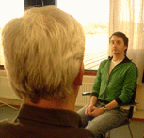
Collected Memories of a War Refugee
The Story of Boris shows the sessions of a traumatised war refugee with his psychiatrist. Edited sequences of the latest session will be uploaded weekly, along with other files on the history, treatment and life of the patient. This way a dossier is created to reconstruct Boris's past.
Boris is suffering from PTSD (post traumatic stress disorder) as a result of the war he fled from. Because of this disorder his story is fragmented. In order to recover, his memories and the reality of war have to be disclosed. What are the events that Boris went through? Which role did he play during the war? The audience is free to investigate Boris's past and present by browsing the files at this website and take an independent view in search for the truth.
Posted by jo at 02:24 PM | Comments (0)
June 22, 2005
spring_alpha
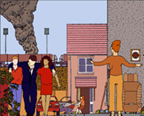
Creating Utopia
spring_alpha is a networked game system based on Chad McCail's drawing "Spring" and the series "Evolution is Not Over Yet". This narrates the attempts of a small, urban community to create its own "utopian" society. The narrative is used as a metaphor for the real-world issues that the project explores and a focus around which speculative and critical ideas can develop. The software system serves as a "sketch pad" for testing out ideas for alternative forms of social practice at both the "narrative" level, in terms of the game story, and at a "code" level, in terms of working with the actual data and communication structures that support the game. It is an exploration of software and social governance in relation to Free Open Source Software practice. The project combines the development of an open software system along with workshop events that seek to broaden Free Open Source Software development principles into areas outside of programming. [via Rhizome]
The spring_alpha game takes place inside a simulated world that is based on that in Chad's drawings but expanded by the players. The original stories and images become a framework that is fleshed-out by people's own ideas and experiences.
The basic aim of the game is to change the rules by which the society in that world runs. This is done through hacking and altering the code that simulates that world, creating new types of behaviour and social interaction. How effective this becomes depends on the players' ability to spread these new ideas into the society.
The project is being realised through a series of development modules. Each module is a self-contained smaller project that focuses on specific development issues such as research, software creation, and public participation. In module 1, for example, a prototype version of the game was built. Other modules focus on working with local communities to develop game characters and scenarios reflecting their own responses to the ideas of the narrative.
The project provides free access to the code and tools being developed through it. We are also providing documentation of how the project is being realised as it progresses. We are testing out and demonstrating new ideas about what a game can be, how it gets made, and what gameplay can involve.
This site provides copies of the original story and drawings, documentation of the modules, software downloads and information for developers.
Posted by jo at 10:46 AM | Comments (0)
Narrative Across Media: The Languages of Storytelling

Will New Media Produce New Narratives?
"...The book's fifth and final section, "Digital Media," is certainly the most pertinent, at least to cyberculture scholars. In order to answer her question, "Will New Media Produce New Narratives?" editor Marie-Laure Ryan explains that, from her perspective as narrative theorist, three issues must be covered. Firstly, Ryan must define narrative. For her, a definition of narrative must be "sufficiently abstract . . . but flexible enough to tolerate a wide range of variations" (337). Thus, "narrative is a mental representation of causally connected states and events that captures a segment in the history of a world and of its members" (337). Secondly, Ryan pinpoints several properties of digital media which "affect narrativity in either a positive of a negative way" (338). Some examples of the "fundamental" properties are: "reactive and interactive nature;" "multiple sensory and semiotic channels;" "networking capabilities;" "flui[d] and dynamic nature;" and, finally, the ability for digital works to "undergo various transformations" (338). The third issue involves a more precise definition of the term "interactivity." According to Ryan, interactivity, i.e. "user participation" (339), is based on two dichotomies: "internal/external involvement" and "exploratory/ontological involvement" (339)..." From the review of Narrative Across Media: The Languages of Storytelling by Jessica M. Laccetti, Resource Center for Cyberculture Studies.
Editor: Marie-Laure Ryan
Publisher: Lincoln, NE: University of Nebraska Press, 2004
Review Published: June 2005
Posted by jo at 09:59 AM | Comments (0)
June 17, 2005
Anne Galloway

Inscription, Enrolment and Agency
"The state is going to be recording everything we do, why shouldn't we make our own recordings -- if only to challenge the accuracy of what others capture?"
In Inscription: Surveillance Turned Inside Out, Howard Rheingold talks to Microsoft sociologist Marc Smith about "ways to use tomorrow's panoptic snooping technologies".
I was instantly struck by Smith's use of the term "inscription" - instead of "authoring" and despite AURA's call to "annotate the planet" - a term which Rheingold describes as relating "to behavior that leaves traces detectable by others." But because words do things, because speech acts, inscription also means enrolment** in particular contexts, identities and practices.
The current obsession with tagging and projects like Urban Tapestries, Yellow Arrow, Grafedia, MapHub (and, oh, about a million others now) all work off the general idea that "regular" people can, and indeed should, declare and order their experiences and ideas, and share them with other people.
I don't know where or when "bottom-up" became an absolute social, cultural and (cough) ethical good, but classification, authorship and/or publication are not simply matters of production, or more specifically, about changing the means of production. First of all is that pesky matter of consumption and use: how are people actually consuming and using this information? Second, into which (unequal) arrangements or assemblages do all these practices enrol us?
For example, do we really want to say that when Microsoft or Nokia record everything that it is inherently better than when The State does it? What kind of agency do we actually have? When we use our blogs for 'impression management' or when we post pictures of ourselves to Flickr to have more control over what appears in searches, what kind of agency is that?
** In the work of Michel Callon and Bruno Latour, enrolment refers to the "process in network-building in which actors' support is gained for development of a sociotechnical entity, their role defined and their interests and identities orientated to suit." In other words, an actor/actant must be made relevant to others (interessement), be made indispensable to others (translation), and be granted consent by others (enrolment). [blogged by Anne on purse lips square jaw] [Readers' comments]
Posted by jo at 09:26 AM | Comments (0)
June 16, 2005
Hundekopf
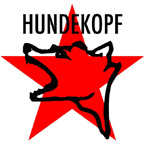
Interactive SMS-story around the Ringbahn
"Stories (...) are like mountain tops jutting out of the sea. Self-contained islands though they may seem, they are upthrusts of an underlying geography that is at once local and, for all that, a part of a universal pattern." - Jerome Bruner, Acts of Meaning (1990)
Hundekopf--by Knifeandfork--is a new project exploring the experience of Berlin's Ringbahn, which encircles the inner city and is used as a literal vehicle to move between time and place in a fiction-historical narrative structured through SMS text-messaging. The Knifeandfork artist group approaches the urban environment as a narrative space - a human artifact constructed of stories both real and imagined that we collectively engage in telling. Hundekopf is being performed at Loving Berlin, June 20-25, 2005.
Posted by jo at 10:47 AM | Comments (0)
June 14, 2005
Living Book of the Senses

Body Stories
In Living Book of the Senses--by Diane Gromala--users are able to see their physical surroundings while dynamically engaging with three-dimensional mixed realities which appear on their headsets. Users can interact with the book in dynamic ways. They can ask the book questions (via voice recognition), and can influence the book through their sensory (bio) feedback. Users wear a headset/head-tracker/color camera system that enables them to see physical reality enhanced with a virtual reality overlay. The camera inputs images/patterns and feeds them back into the ARToolkit software which then displays digital information associated with the physical markers onto the headset. The ARToolkit can calculate camera position and orientation relative to physical markers in real time for video-mediated reality.
Each reader can view AR scenes from their own visual perspective. Users can fly into the immersive world and see each other represented as avatars in the same virtual scene. Readers remaining in the AR scene have a birds'-eye view of other readers as miniature avatars in the virtual scene displayed through their headset. User-controlled dialog with the book elicits responses/answers from the book (expressed in digital data: visual, textual, auditory). As the users simultaneously interact with the book in the physical and virtual realms, the book responds to individual and multiple physical states (via biofeedback) to express resulting changes in narrative. The narrative is a cultural history of the senses. [Read Extensive Bodies, interview by Yvonne Volkart with media artist and theorist Jill Scott].
Posted by jo at 09:00 AM | Comments (0)
June 13, 2005
INSCAPE
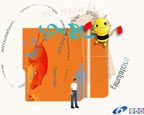
Invitation to join the Open Community
The story is the richest heritage of human civilisation. One can imagine the first stories being told, several thousand centuries ago, by wise old men huddled around campfires. Since this time, the narrative process has been considerably developed and enriched: sounds and music have been added to complement the speech, while scenery and theatrical sets have been recreated to enhance the story environment. Actors, dancers and technicians have replaced the unique storyteller. The story is no longer the sole preserve of oral narrative but can be realised in book, theatrical, dance or movie form. Even the audience can extend up to several million individuals.
And yet in its many forms the story lies at the heart of one of the world's most important industry.
The advent of the digital era has enhanced and accelerated this evolution: image synthesis, digital special effects, new Human-Computer Interfaces and the Internet allow one to not only realise more sophisticated narrative forms but also to create new concepts as video gaming and virtual interactive environments. The art of storytelling is becoming evermore complex. The Information Society Technologies offers new tools to capture, and to interactively modify the imaginary environment, in ever more intuitive ways, coupled with a maximum sensory feedback thus allowing enhanced and exciting production possibilities for the interactive creation and non-linear manipulation of almost any story form.
INSCAPE aims to enable ordinary people to use and master the latest Information Society Technologies for interactively conceiving, authoring, publishing and experiencing interactive stories whatever their form, be it theatre, movie, cartoon, puppet show, video-games, interactive manuals, training simulators, etc. INSCAPE will generate and develop the knowledge in the emerging domain of Interactive Storytelling by researching, implementing, demonstrating and disseminating a complete suite of innovative concepts, tools and working methods tightly integrated in a homogeneous web-based framework and offering a full chain to people with no particular computer skills, from content acquisition and creation, organising, processing, sharing, and using the way of publishing, from creators to “viewers”.
INSCAPE will also address issues such as the acquisition, the creation, the management and the sharing of interactive stories or their real-time multisensorial rendering combined with natural agent behaviours and multimodal interfaces. It will also provide innovative natural interfaces and devices for intuitively creating or living interactive stories within multidimensional, virtual, augmented and mixed realities.
By addressing this domain, INSCAPE goes beyond “standard” content creation research and technology development projects and will address scientific and industrial simulation, training, education, poetry, art emotions, cultural and human context and diversity.
The specification of the project will be driven by an analysis of the needs of real world users participating in the project as partners or involved in the INSCAPE Open Community. Through the lifetime of the projnd-users, including the Open Community, for purposes of validation on real-cases, demonstration and training. Invitation The Consortium wants to make a leap forward in the technologies which support creative interactive storytelling.
We would like to work with you as potential end-user to be one of the first to learn about the results, use and test the developed technologies at early stages and provide feed-back and input in how to optimize for broad use and roll out.
If you want to be part of the INSCAPE Open community by joining the INSCAPE forum and be one of the first users of the INSCAPE software you can register at www.inscapers.com - under open community.
Open Community Questions: ICNM - International Center for New Media
T: +43.662.630 408 /
F: +43.662.630 408-
office@icnm.net -
www.icnm.net
info@inscapers.com
www.inscapers.com
Posted by jo at 09:38 AM | Comments (0)
June 10, 2005
Yellow Arrow
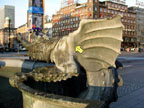
Pointing to the Hidden Stories of the City
"The project Yellow Arrow lets you discover hidden layers of your city and place your own stories in the urban landscape. The project uses text messaging (SMS) as a way to link personal messages to certain locations, which mean something special to someone. You point the attention to the spot by placing a yellow arrow sticker with a unique code, thus making it possible for others to receive the story. Thomas Petersen asked the Yellow Arrow organization a few questions about the project, now that the project is being launched in Denmark. [Get your arrows at the website. Also, sign up for an invitation to the launch party at a secret location, Saturday June 11th at 8 pm!.]" Read interview.
Posted by jo at 08:36 AM | Comments (0)
June 06, 2005
Multivariant Narratives
On Textuality and Narrativity
"...A truly digital text, or narrative, is one that cannot be transferred into the print medium without significant loss. It depends on the computer as a sustaining environment, and it uses the screen (or any other display device) as a stage for performance.
What, then, are the properties of digital media, and by extension of digital texts, that bear upon the development of narrative? Several new media theorists (Murray, Manovich) have offered their own lists of distinctive features or essential properties of digital systems. The list proposed below is a distillation of the features I regard as the most relevant to the issues of textuality and narrativity..." From Multivariant Narratives by Marie-Laure Ryan.
Posted by jo at 09:30 AM | Comments (0)
June 03, 2005
Significant Sites - a Summer Solstice Dérive
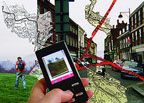
An Invitation to Participate
Significant Sites-a Summer Solstice Dérive is inspired by the Situationist practice of dérive. John and Cathy Rogers set out to chart the layers of place that make up High Wycombe as it undergoes a period of transition and redevelopment. After conducting and initial period of investigation through a series of dérives and interventions they intend to stage a grand psychogeographical event on June 18, 2005 during the Summer Solstice.
A Walker will embark on a ritualistic perambulation to link up the significant sites, or Nodules of Energy that surround the town. He will use the town's matrix of ancient footpaths to achieve this circuit. Using a videophone he will send moving images to a base station in a prominent position in the town centre where they will be projected onto a screen where spectators will be able to watch the walk as it happens.
The relayed image of the walker is presented alongside a montage of archive film and present day photographs of the town together with a simulated image of the town. In addition to the video clips the walker will send reports from his location via voice and text messages.
Spectators will be able to interact with the walker giving him directions to places they consider to be significant sites and furnish him with information and folklore about the areas he walks through.
People will be encouraged to set out on their own dérives and send back images and text to the base station for projection and relay to the audience.
Posted by jo at 02:14 PM | Comments (0)
May 26, 2005
The Journey of Narrative: The Story of Myst Across Two Mediums
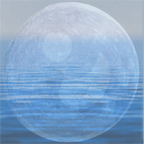
Tense, Mood and Voice
"With this paper I want to look at how the narrative of Myst and Riven develops through the mediums of the novel and the CD-ROM. I am going to incorporate Gerard Gennette's 3 classes of determinations (tense, mood and voice) to focus my discussion (31). Tense refers to aspects of the narrative that deal with temporal relations between narrative and story. Mood refers to the aspects that deal with modalities (forms and degrees) of narrative "representation." And voice refers to the aspects that deal with the way in which the narrating itself is implicated in the narrative situation or its instance and its two protagonists: the narrator and his/her audience, real or implied (31)." From The Journey of Narrative: The Story of Myst Across Two Mediums by Drew Davidson
Posted by jo at 08:59 AM | Comments (0)
Prince of Persia: The Sands of Time

Plotting the Story and Interactivity
"In this paper, the experience of the videogame, Prince of Persia: The Sands of Time, is analyzed by comparing two diagrams, one that illustrates the plot of the game's story and another that delineates the stages of interactivity. Performing a close reading of this game from these perspectives enables an exploration of how the game's story relates to the interactive elements of its gameplay...
...This interactive diagram was developed in a previous paper...and outlines the interactive experience of playing a game. Briefly, the experience is posited to have 3 stages: involvement - being initially introduced into the game; immersion--becoming comfortable with the gameplay and the gameworld; and investment--feeling compelled to successfully complete the game." From Plotting the Story and Interactivity in Prince of Persia: The Sands of Time by Drew Davidson
Drew Davidson is a professor, producer and player of interactive media, exploring narratives and mediums across texts, comics, games and other media. Primarily, he is interested in conceptual interactive design, integrated narrative and interwoven media, collaborative design and development, applied media and game logics. His interdisciplinary theoretical interests focus on the performance of narratives between multiple mediums. He looks to illustrate how we interact with our stories. Davidson is intrigued by the way a medium can shape the creation and the reception of meaning and how a range of media can be utilized in order to communicate ideas. He explores how the juxtaposition of various mediums can be made into an additive methodology that allows for continual (re)presentation and critical analysis. He would like to see more collaborative, dialogic and interactive work between scholars that reflects the interdependence of authors, readers, texts and other media, in establishing value and meaning. It is important to him to discover the possible and myriad applications of interactive media that would compliment and enhance traditionally used mediums, in order to develop pedagogies which inspire newly viable learning, teaching and communication. Davidson brings a diverse and deep educational perspective to his professional endeavors. He is continually looking for new opportunities and challenges in helping to design and develop integrated and engaging high tech, rich media experiences for education and entertainment. He believes his experience, expertise and enthusiasm makes him invaluable in doing such work. Davidson focuses on how to integrate creative content, applied theory and media technology to create engaging and relevant experiences for people.
Drew Davidson is Academic Department Director, Game Art & Design and Interactive Media Design at the Art Institute of Pittsburgh and the Art Institute Online.
Posted by jo at 08:07 AM | Comments (0)
May 24, 2005
Unseen City: Cape Town/Amsterdam
![]()
Journey of Mutual Discovery
"Unseen City is a unique project aimed at restoring the torn halves of two cities that have been both pulled apart, and conjoined by a shared history. Situated in the digital domain (intranet, web streaming, electronic and orthodox publication), Unseen City will evolve into a multi-author, multi-language publication — grounded in history and yet mindful of the propensity of youth to refigure issues of urbanity, culture, heritage and social inclusion.
...In line with the observation that the single most important invention of recent times (the world wide web), did not arise from the academies, this publication will focus on the work of artists, grafitti-ists, muralists, poets, architects, dramatists, community artists, and social interventionists who came to recognition through the ‘university of the streets’..."
Posted by jo at 07:14 PM | Comments (0)
May 23, 2005
Electronic Literature Organization

Showcasing Exemplary Electronic Literature
"The Electronic Literature Organization’s new site is now in place. A very visible feature of the site is a showcase that features exemplary electronic literature. [Teri Rueb's Itinerant is currently featured.] The five most recent items appear at the top of the main page, and everything featured to date is accessible via the “Showcased E-Lit” link just below the search field. The showcase is an excellent descriptive complement to the extant Electronic Literature Directory, a large index of information about e-lit. An RSS feed of the showcase is available so that readers can automatically keep bookmarks to the current entry or syndicate the showcase on their own pages.
News entries and other pages on the site are now easily searchable. The news (including a five-year archive) is also accessible by category and by date. The new site is also designed to be easier to maintain and manage into the future, allowing the ELO to communicate with members and the reading public more effectively.
This new site, which will be more frequently updated and more useful for those interested in e-lit, is the first of several new initiatives planned by the organization. Stay tuned to the site for the ELO’s other new programs in coming months. (The ELO, by the way, is a 501( c )( 3 ) nonprofit literary organization, founded in 1999, that has a mission to promote and facilitate the writing, reading and distribution of electronic literature.)
Props to Nick, a vice-president of the ELO who designed and engineered the new site, for a job well done. Noah and I helped out with the migration of news and in creating showcase entires. We hope you’ll enjoy the fruits of our work." [blogged by scott on grand text auto]
Posted by jo at 11:57 AM | Comments (0)
April 27, 2005
eRuv
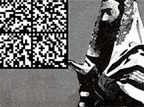
A Street History in Semacode
eRuv: A Street History in Semacode, by Elliott Malkin, is a digital graffiti project installed along the route of the former 3rd Avenue elevated train line throughout Lower Manhattan. This train line was part of a religious boundary called an eruv for the immigrant Polish Chasidic Jewish community in the first half of the 20th century.
The train has since been dismantled and most of the Chasidic Jews have moved away, so what was once both a physical and symbolic enclosure is now purely imaginary, a psychic boundary that intersects present-day communities in Lower Manhattan, most notably in Chinatown.
Each location along the eruv corresponds to a semacode ID. New Yorkers or tourists using a compatible camera phone can receive audio content (in Chinese, Spanish, Yiddish, and English) associated with that location, true stories from the past associated with that point in space. Participants will also have the option to leave their own "oral history," a voice message about their experience with that same space or a reaction to the historical reconstruction.
It is important for eRuv to be provided in the above four languages, as the purpose of this project is to undermine the sorts of boundaries that separate cultures in New York across time and space. eRuv uses boundaries and awareness of boundaries as a way of undermining those very cultural boundaries.
The work will be part of the Provflux, an event dedicated to artistic and social investigations in psychogeography. May 27-29, in Providence. [blogged by Regine on near near future]
Posted by jo at 07:02 AM | Comments (0)
April 26, 2005
Provflux 2005
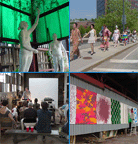
Implementation to be Featured
"Nick and I recently got word that Implementation has been accepted by Provflux 2005, both as an Intervention (live event) as an exhibition. Implementation’s second gallery exhibition will take the form of mounted photos from the project, a DVD of distance shots, and take-home sticker sheets on display at CUBE2 Gallery in downtown Providence, Rhode Island from May 19th until the end of the month, and we’ll be in Providence May 27th-29th for the event itself, with a goal of distributing, placing, and documenting the entire novel in one weekend in one location. Bring your digital camera and camping gear if you want to join us. Implementation joins about 50 other public interventions, games, urban exploration, lost space recovery, and tech mapping projects for this fluxist/situationist/public art happening." [blogged by Scott on grandtextauto]
Posted by jo at 09:10 AM | Comments (0)
April 25, 2005
Itinerant

A Site-Specific Sound Installation in Boston Common
Itinerant--by Teri Rueb--is a site-specific sound installation in Boston, Massachusetts. It invites people to take a walk through Boston Common and surrounding neighborhoods to experience an interactive sound work that re-frames Mary Shelley's Frankenstein, the classic tale of conflict between techno-scientific hubris and the human spirit. The project engages a search for an elusive character who is doppleganger to both the doctor and the creature. Sounds, 'played' by visitors as they move through the city, create a series of frames within which to reflect upon our highly mobile, technologically saturated society and issues of identity, place, and displacement. Mobile and locational media (GPS) formally underscore themes in the work. The sonic overlay is also presented as an interactive map on the web, creating a formal re-framing and displacement of this site-specific work (needs Flash Player, headphones and broadband connection).
Equipment may be picked up through May 7, 2005 at the Judi Rotenberg Gallery, 130 Newbury Street, Boston. "Itinerant" is a 2005 commission of New Radio and Performing Arts, Inc. (aka Ether-Ore). It was made possible with funding from the Jerome Foundation and the LEF Foundation.
Posted by jo at 01:34 PM | Comments (0)
Location33
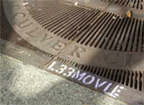
Envisioning Post iPodalyptic Mobile Music
Location33 investigates the potential for new types of music made possible by location tracking and wireless technologies. Listeners, with a GPS enabled PDA or mobile phone, walk around downtown Culver City, California and create a musical album that merges the traditional model of the song cycle with interactive narrative, location awareness, and game play.
Twenty nodes throughout the Culver City area act as portals into the world of the album. Each node is linked with a fragment of a song and when a player approaches one of the portals the music file is streamed to their device.
Each day a specific song is active. It is composed of fragments representing a verse, a chorus, or a bridge. As players walk around, they piece together the fragments, and develop the sense of their path being a song. Each day yields a different song, and all of the components for each day are composed within the limits of a singular musical idea or theme. The album is generated over the course of the week.
The album also focuses on a particular story element, which is sung by one of the characters, Mack, Mackbot, or the Narrator. It is up to the player to discover these musical story fragments and piece them together to form a cohesive story. In particular, the Narrator’s purpose is to contextualize the album within the setting of Culver City and to help the player with hints and instructions.
Location33 also adds elements of game play, asking the player to move around the space to find story fragments in a type of musical and narrative scavenger hunt.
Besides, players can alter the temporal structure of the album, performing time travel operations to experience the album without having to be in Culver City on each day of the week.
Location33 is the thesis project of William Carter, student in Interactive Media at the USC School of cinema and TV.
Read the PDF and doc presentations to see how it works. [blogged by Regine on near near future]
Posted by jo at 12:17 PM | Comments (0)
April 22, 2005
Footsteps of Hans Christian Andersen
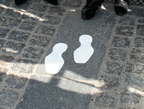
Footstep Hack
"A virtual discovery of Copenhagen in the footsteps of the famous author Hans Christian Andersen has been hacked, possibly by 'gay-activists'. Footsteps of Hans Christian Andersen - A Sound-Walk through the author's Copenhagen is a part of the Danish celebration of the 2005 HC Andersen bicentenary. The project invites people to follow in his footsteps and listen to audio narratives via their mobile phones at selected locations.
The route is marked with 2000 footsteps painted on the sidewalks - however, by adding a few extra footsteps it was diverted to the doorstep of local gay-clubs. The small hack might be a statement, rather than a prank. The HC Andersen anniversary has been criticized by the gay community for ignoring the author's homosexuality. E.g., a papercut by HC Andersen portraying two men holding hands inside a heart was used as a motif in a Christmas decoration by the fashionable department store Magasin du Nord - but instead of two men holding hands, the original artwork was 'corrected' to a woman and a man." See article (Danish) [blogged on guerrilla-innovation]
Posted by jo at 01:17 PM | Comments (0)
April 15, 2005
Urban Eyes
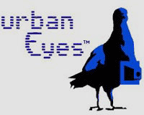
A Bird's Eyeview Experience to the Urban Public
Urban Eyes--by Martin Buschle, Marcus Kirsch, Jussi Ängeslev--is a service combining 2 natural networks, the CCTV and the pigeon population in a city to provide an alternative view on the city. Similar to shamanistic journey, a bond between human and an animal is created when one feeds the pigeon with Urban Eyes bird seed. When the bird flies about, the seed triggers the CCTV / webcam network in a city based on its proximity to the camera. The images are then sent to the person (his PDA) who fed the bird creating a story about the bird and the city.
Due to the purpose of the camera network, the view one perceives, is quite different from the market orientated, everyday media exposure. Ranging from traffic cameras on the lamp posts to gate cams to back yards and living rooms. The experience is essentially about being connected to the bird, the way it experiences the common living circles. Hence acquiring the data, the images and videos directly from the net would be utterly different experience, lacking the physical connection to one's environment and its inhabitants." [blogged by Martin Rieser on Mobile Audience]
Posted by jo at 09:40 AM | Comments (0)
April 12, 2005
Urban Tapestries
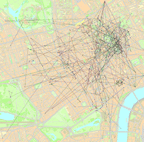
Experimental Ethnography, Technological Identities and Place
"Urban Tapestries provides a mobile location-based platform to connect people with the places they inhabit through their stories, experiences and observations. Currently based on an 802.11b mesh network in the heart of London, ordinary people author their stories of the city and embed them in the places that inspire them. Others who are logged into the system can read these stories, author their own and engage the largely invisible, multidimensional layers accumulating in the city. Our research asks if people use UT in meaningful and interesting ways. Drawing from theories of everyday life and urban space, we have developed experimental ethnography as a method for investigating the relationships between communication technologies, users and the socio-geographic territories around them. [blogged on pasta and vinegar]
Respondents are asked to play with an early Urban Tapestries prototype and this research explores what they do, their technological identities, their relationship to place and the meanings they generate. Urban Tapestries facilitates the negotiation of boundaries and we found that it does augment notions of connectivity – to place and to those within that place. However, our research revealed that some do not interpret this connectivity positively." From Urban Tapestries: Experimental Ethnography, Technological Identities and Place, an LSE Electronic Working Paper by Roger Silverstone and Zoetanya Sujon.
Posted by jo at 12:40 PM | Comments (0)
April 11, 2005
Virtual Narrations

New Narration as a Mental Potentiality
"...Despite all of the intervening caesuras and interruptions, narration as a cultural practice seems to have experienced a virtual Renaissance at the end of the twentieth century.[2] Strikingly, this can be felt not only in literature and film, but with particular intensity in the electronic media. The Internet as a new mode of communication has achieved the status of a mass medium and now requires adequate ways of communicating content. But even the well-established medium of video is once again drawing on narrative strategies and establishing a form of storytelling that raises a variety of questions: Do these narrative practices really constitute a Renaissance of storytelling, i.e. do they represent the hope that, after the collapse of the great utopias in the seventies, a new form can be found with which to render narratives viable once again?..." from Virtual Narrations: From the Crisis of Storytelling to New Narration as a Mental Potentiality by Söke Dinkla, Medien Kunst Netz.
Posted by jo at 07:28 AM | Comments (0)
April 08, 2005
Storytronics

Dance and Deep Hypertext
Some Hypertext researchers pointed out the relationship between Hypertext and Dance, these years. Australian Hypertext researcher, Katherine Palps, invented the concept, Storytronics. This concept means that Hypertext and structure of myth. Like semiology by Vladimir Propp, Palps constructed the simple structure of myth and accommodated that to universe of Hypertext. With her experience of teaching in her class at Melbourne University, she found student who learn dance or architect can understand this concept easily because of dancer's three-dimensional cognition. Palps pointed out that dancers are easy to understand multi-dimensional Hypertext.
(Palps invented the concept "Ping Body" for Australian media performance artist STELARC. This concept is known as the title of his work in 1996. Her husband Andrew Pam is working as a chief programmer of Project Xanadu, the original Hypertext project by Ted Nelson.) Some important suggestions are came from engineers. A hypertext research group works with a dance researcher Janet Lansdale. (Miles-Board, Timothy and Deveril, and Hall, Wendy and Lansdale, Janet (2003) Decentering the Dancing Text: From Dance Intertext to Hypertext.)--by Yukihiko YOSHIDA
Posted by jo at 09:26 AM | Comments (0)
April 04, 2005
The Chinese Whispers

Connecting Through Misunderstanding
The Chinese Whispers (visklek in Swedish)--a project of The Interactive Institute in Sweden--is a game that you might have played as a child. Instead of sitting in a circle and whispering a word to someone sitting next to you, they have used answering machines, a web page and occasional actions in public spaces to create a game between different places and people.
By one single phone call the participants can play The Chinese Whispers. They can also create a new game by calling another phone number and adding a story of their own for others to play with. These chains of misunderstood and reinterpreted stories created by the participants are available at [visklek.se]. At the site anyone can follow the game, either by browsing through old messages or by listening to the game in real time. [via textually.org]
Posted by jo at 08:48 AM | Comments (0)
March 29, 2005
The Royal Society of Emotional Geocachers
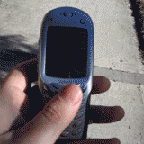
Place is Story>>Character Equals Space
Navigate a hypertext journey of sound, image and video where stories and characters intersect over time and across the city geography as one link leads you on foot to another. Available via GPRS on your mobile phone, or download from the internet on to your PDA (such as a Palm Pilot).
"This site exists for members of the society to document key personal experiences at specific locations. Please join us and add your own story of place. We've designed this site specifically for mobile devices so members may read & comment upon other members experiences in situ. The Rules; be true, place is story, character equals space, every story must connect to another story. Every tale must contain gps co-ordinates, maps and directions."
Posted by jo at 02:30 PM | Comments (0)
March 18, 2005
Weirview
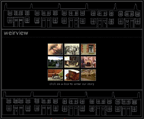
Awakening Community Awareness
"Abstract: This paper presents our experiences with Weird View, a multi-branching interactive narrative, harnessing the power of hyperlinked structures and oral storytelling. True stories were collected by word of mouth from inhabitants of a terrace of houses in Dublin, Ireland, and supplemented with video and photography to form a collection of narrative fragments. A computer application was built to allow the narratives to be navigated. In this way, Weird View attempts to capture part of the community folklore and re-present it to the community in the form of an interactive, nonlinear narrative. The viewer is presented with the fact that a community exists and is continually formed, around place, time, life conditions and social networks. When shown to the community, the Weird View project resulted in awakening community awareness through reappropriation of local, social and personal stories." From Weird View: Interactive Multilinear Narratives and Real-Life Community Stories by Valentina Nisi and Mads Haahr.
Posted by jo at 05:46 PM | Comments (0)
March 10, 2005
Notes Toward a More Pervasive Cyberdrama
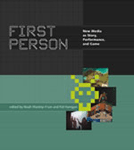
The Nomadic, Embodied, Embedded Aesthetic
"What would cyberdrama look like off the computer screen? To put it another way: Could there be a more pervasive cyberdramaturgy? Computing is increasingly ubiquitous and mobile. Why shouldn’t cyberdrama be, as well? Imagine a set of scripting, design and production strategies that employed digital technologies but tended toward a more nomadic, embodied, and embedded aesthetic. What might we learn about the dramatic potential of cybernetic systems and new media — or about the cybernetic potential of modern drama — from performances developed along these more pervasive guidelines?" From Notes Toward a More Pervasive Cyberdrama by Jane McGonigal, Electronic Book Review, June 2004 (in response to Cyberdrama by Pat Harrigan and Noah Wardrip-Fruin from First Person).
Posted by jo at 03:51 PM | Comments (0)
Google Maps
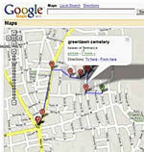
Google Mapping Location-Based Narratives
"My colleague Ken Tompkins recently sent along a link to John Udell’s Walking Tour of Keene. The short video demonstrates how Udell used Google Maps in concert with a bookmarklet to create a walking tour of an area in his hometown that rides on top of the Google Maps UI. Waypoints are marked with GPS data on the Google map and then linked to his content (jpgs and quicktime clips). Udell explains how he did it in a followup post. Other hacks to Google Maps are being posted on a Google Maps Hacking Wiki. Although the current hack is kludgey, it suggests exciting possiblities for location-based narratives that could be delivered in a web browser via the Google Maps interface." [blogged by scott on Grandtextauto]
Posted by jo at 10:03 AM | Comments (1)
March 07, 2005
Project Research and Software Toys
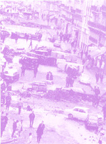
Miscellaneous
"...Situationist International Online: I’ve spent some good hours here recently. The situationists were anticopyright from the beginning, which has made this quite extensive archive of texts from the situationist movement which reached its height in the 1960s possible, including a complete archive of Internationale Situationniste and Guy Debord’s Society of the Spectacle.
Building a Mobile, Locative Collaborative Application: Documentation of the development of CatchBob, a treasure-hunt type, Wi-Fi based locative and collaborative mobile game. The game itself is fairly simple in concept:
The aim of the game for the participants is to find a virtual object on our campus and enclosing it in a triangle formed by their position. The positions are provided by a location-based tool running on a PocketPC or a TabletPC. This tool allows each person to see the location of his or her partners as an avatar on the campus map. Another meaningful piece of information given by this tool is whether the user is close or far from the object: an individual proximity sensor.
Lumiere Ghosting in the New Media Classroom: David Gillette describes a new media curriculum built around Lev Manovich’s The Language of New Media, and its focus on new media development as a form of interactive, multicultural cinema, and using a Cave-like display, the CompuObscura, an interactive new media art work that allows viewers to interact with images on display inside the device.
Jim Bugardner: the guy who invented the Palace avatar based chat system in the 1990s, has lots of generative art, doodads and neat little software toys at this site.
iStory Creator: an application made to allow people the opportunity to create their own iPod text games of the choose your-own-adventure variety."
[blogged by Scott on Grandtextauto]
Posted by jo at 11:07 AM | Comments (0)
February 28, 2005
Towards an Emotional GPS:

Writing Your Own City
"...Psychogeography and cognitive mapping offer two suggestions for recording wireless experiences, using a term we've coined, emotional GPS. Whereas traditional GIS (Geographic Information Systems) and GPS (Global Positioning Systems) tend towards an empirical representation of the world, emotional GPS is biased towards the personal, temporary, and imaginary. In most cases, the prevailing impact of wireless on the definition of a place is not so much on its static form as the potential experiences that this place can afford. The wireless environment provides an alternative use, an augmented interface, or new associative mnemonics. Providing an annotative mapping framework, use of emotional GPS fosters a networked mobility within these environments that undermines the authoritarian bent of traditional GIS and GPS mapping techniques." From Towards an Emotional GPS: Writing Your Own City by Scott Paterson, with Marina Zurkow and Julian Bleecker, Intelligent Agent, Vol. 3 No. 2.
Posted by jo at 10:52 AM | Comments (0)
Geo-Heritage
![]()
Flexible Storytelling
"...Storytelling is one of the oldest art forms of human beings; initiated in the oral tradition, its form has evolved with changes in society and available media with which to work. The oral storyteller often altered the tale as it was told, choosing words based on response from the listeners to build the collective moment. Of particular relevance here is the Australian Aboriginal storytelling tradition in which territory is not perceived of as a piece of land enclosed within borders but rather as "an interlocking network of 'lines' or 'ways through'" (Chatwin 1987). Sung into existence by the ancestors, these stories actually function as maps of their terrain that can be augmented by travelers to account. Interactive in the beginning with the advent of the written medium, storytelling, however, evolved into a non-interactive narrative style..." From Geo-Heritage: A Living Archive of Spatial Culture by Scot T Refsland, Marc Tuters & Jim Cooley. Also read Bits and Bytes of Locative Geo-Heritage by tV.
Posted by jo at 09:55 AM | Comments (0)
February 21, 2005
Girl Friday

A Mobile Interactive Drama Series
Glued to your mobile phone? SMS crazy? Got no time for TV but love a good drama? Girl Friday (GF) is here and it's sure to be as addictive as your phone and that soapie that you can't miss. Girl Friday's life changes when she finds a mobile phone on a tram on the way to work. She soon becomes engaged in the mysterious life of the stranger's phone. All the while she has paper clip trouble at the office; is searching for the mother she never knew, and is clawing her way to the top of the local karaoke charts.
GF beams straight to your mobile. No wires, no cords, no lengthy downloads. It's entertainment on the run - small digestible bites of life for viewers to consume at will. For the content hungry, there's a website too. Whether you can take the chunky stuff on a broadband connection or the low fat version on your 56K modem, you won't miss out on the daily sagas of Girl Friday. [via Cross-Media Storytelling]
GF will be Australia's and possibly the world's first mobile cam girl. She is a live action character who on the surface appears 'real' but in fact is a fictional part of the GF interactive world. Her story reflects the way devices (such as your mobile) are changing the way we communicate in everyday life. As GF tries to deal with the sagas of career, love and family we journey with her as a friend and confidant.
GF is a sophisticated interactive drama with a comic edge; taking its lead from outstanding programs such as Sex In The City and Ally McBeal. The program will delve into some of life's sticker questions with insight and humour, and aim to satisfy the content hungry 16-30 year old market.
Once you start, you'll be hooked and aching for your weekly GF fix.
Posted by jo at 10:52 AM | Comments (0)
January 27, 2005
Distributed Narrative:

Telling Stories Across Networks
"Until recently, narratives have been constructed to achieve unity. While postmodern narratives open out into fragments and bricolage in content, plot and style, distributed narratives take this further, opening up the formal and physical aspects of the work and spreading themselves across time, space and the network. You see your first fragments of Implementation on stickers posted on signposts on your way to work and find the rest online when you google a remembered sentence. Surrender Control sends you text messages regardless of where you are or what you're doing..." From Distributed Narrative: Telling Stories Across Networks by Jill Walker.
Posted by jo at 05:29 PM | Comments (0)
January 19, 2005
Fictional Space
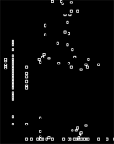
Mapping and the need for Creative Intervention
"Lately I've (Pall Thayer) been toying around with the idea of using *precision, digital locative* media to create fictional space. I've found that bluetooth mapping is better for this than GPS because bluetooth is just one dimensional so to map out a two dimensional space there has to be some *creative intervention*, if you will. This mapping was done by logging bluetooth proximity readings for approximately one hour. The first half hour is used for the x axis and the second half hour is used for the y axis. It's running at 4 times the real speed so you don't have to actually stare at it for half an hour to see the whole thing."
Posted by jo at 12:19 PM | Comments (0)
January 13, 2005
Surface Patterns: Walking Tours
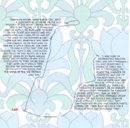
10 People. 10 Walks. 10 Stories Told.
Walking Tours and Audio Tours are two new works by artist Jen Southern commissioned by centrifugalforces and the media centre for Surface Patterns. Both works use a Global Positioning System (GPS) device to explore how memory is linked to urban and domestic places. The GPS device can only describe latitude, longitude and altitude: however, when used to trace the route that someone walks through a place, it can reveal the pattern of the path taken, allowing us to share knowledge of hidden locations and unexpected vantage points along the path.
Traditional maps tell us where landmarks are, what streets are called and where to find the centre of town, whereas the subjective histories and stories explored in this work are played out over time and rely on very different 'memory maps'.
The installation Audio Tours at the media centre uses contributions of unwanted wallpaper, pasted on the gallery wall and threaded or punctuated with GPS patterns of 10 walks. Traces of audio recordings made in conversation with the walkers are manipulated and played back in the gallery, recalling the simple flipping, mirroring and inverting techniques employed in the patterns of the wallpaper. Reflecting different perspectives on the town, the walkers include members of the artists family who grew up in Huddersfield in the 1940s and 50s, as well as a previous Artist in Residence at the Digital Research Unit in The Media Centre who lived in the town for three months. Memories range from the last Sex Pistols gig to architectural history (both public and domestic) and personal freedoms of walking in urban space.
Walking Tours consists of 10 PDFs to download and print, each using a wallpaper pattern, a walked route, and a story about Huddersfield.
Jen Southern is an artist who lives and works in Huddersfield. Her process-based practice investigates everyday journeys between virtual and physical spaces, using socially embedded technologies such as video games and mobile phones. She has been working with global positioning devices for the past two years; recent projects using GPS: Area Code (www.areacode.org.uk) with exhibitions at Magna, The Museum of Science and Industry and Artranspennine 03. Jen's work has been exhibited nationally and internationally in public spaces galleries and festivals.
Posted by jo at 07:53 AM | Comments (0)
January 12, 2005
HopStory
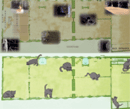
Interactive, Location-based Narrative Distributed in Space and Time
"As computing and communications technologies evolve, there is the potential for new forms of digitally orchestrated interactive narratives to emerge. In this process, balanced attention has to be paid to audience experience, creative constraints, and presence and role of the enabling technology. This paper describes the implementation of HopStory, an interactive, location-based narrative distributed in space and time, which was designed with this balance in mind. In HopStory, cinematic media is housed within wireless sculptures distributed throughout a building. The audience, through physical contact with a sculpture, collects scenes for later viewing. Inspired by the history of the installation space the narrative relates a day in the life of four characters. By binding the story to local time and space and inviting the audience to wander, we amplify the meaning and impact of the HopStory content and introduce an innovative approach to a day-in-the-life story structure." Abstract for Hopstory: an Interactive, Location-based Narrative Distributed in Space and Time by Valentina Nisi, Alison Wood, Glorianna Davenport and Ian Oakley [PDF]
Posted by jo at 02:57 PM | Comments (0)
January 06, 2005
Special Treatment
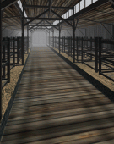
Memory as Malleable Substance
Special Treatment advances the audience from passive viewing to active experience by smoothly moving from present to past and back again. Special Treatment creates a landscape where glimpses and fragments of Birkenau establish a narrative framework where the events of the past continue to shape and be shaped by contemporary interpretations of those events. The full history and lesson of a place such as the death camp at Birkenau is seen not only in the records of those who survived or passed on their memories to us in the present, but in how those events are remembered and shaped by the people of today. The stories of these people grow with each new experience of Special Treatment, and the solidity of that space and the substance of those events becomes more concrete with each new visitor. The immersive experience allows each participant to inhabit the scene of these events, and as they leave the evidence of their own actions and memories, Special Treatment is continually transformed into a new potential memory. [via Rhizome]
At its most basic level, memory is a perceived arrangement of events. Applied Interactives is concerned with how memory is a malleable substance, and Special Treatment's poignancy is highlighted by a world where global and mass communications instantaneously influence impressions of events, so that people have incomplete or greatly divergent ideas about the same occurrences. Even if we tried to faithfully recreate the past, the interpretation of those events would vary from one day to the next.
Although Special Treatment uses the holocaust as a context, the project creates an experience beyond time by focusing on the larger issues of persistence and memory. Events other than the holocaust could have been used as the basis for Special Treatment. However, any occurrence that exhibits the tragedy of 'history repeating itself' provides a powerful framework for taking a critical look at how and what people remember, how they change their thoughts over time and how cultural biases influence personal recollection.
Not a "virtual reality" but an interpreted reality, Applied Interactives has specifically selected our medium to fully engross participants in the experience by allowing them to create their own personal narrative. Special Treatment is more than observation - the piece is interactive as well as reactive; visceral and emotional as well as intellectual. The term virtual reality, as a cliché of futurist propaganda, has been overstated by the media and is widely considered to be an attainable technology. We are critical of this belief and the entertainment industry's portrayal of interactive storytelling. We find that they more commonly wish to construct their stories with products and brands rather than use the medium in the creation of a meaningful experience. Other meda are bound to formulaic standards that utilize obvious narrative arcs that don't allow for the same degree of individual ownership of the experience. With Special Treatment we hope to break down the conceptual barriers that have been placed around artwork employing these cutting-edge technologies.
Applied Interactives is an artist-based 501(c)(3) non-profit organization founded in Chicago in 2001. Its primary mission is to propagate virtual reality technologies and art into the exhibition spaces of galleries and contemporary art museums as well as into the hands of individual artists. AI is composed of students, faculty, and alumni of the University of Illinois at Chicago (UIC), Columbia College Chicago and The School of the Art Institute of Chicago (SAIC).
Posted by jo at 10:46 AM | Comments (0)
December 28, 2004
Louisiana Walk #14
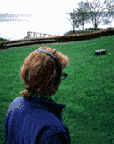
Real and Fabricated Collage
Louisiana Walk #14--by Janet Cardiff--is a 13 minute binaural audio piece that guides participants through the sculpture park of the Louisiana Museum, (Denmark) with a walkman. The audience member listens to a collage of sounds that shift from what is perceived to be the actual sounds of the park to completely fabricated soundscapes. They also hear the sound of the body, footsteps, and voice of the person giving instructions and thoughts. The use of the headset and binaural sound creates an eerie personal space that the listener enters into, almost as if entering into someone else's mind and body. Even though the format plays with that of the museum audio tour the listener finds out very soon that they have become part of a virtual space that hovers between a science fiction thriller and a personal journey.
Janet Cardiff was born in Brussels, Ontario, Canada, in 1957. She studied at Queen's University (BFA) in Kingston and the University of Alberta (MVA). She currently lives and works in Lethbridge, Alberta.
Her artworks, whether they are installations or walking pieces, are mainly audio based. She has been included in exhibitions such as: "Sculpture Projects", Muenster, 1997, "Present Tense, Nine Artists in the Nineties", SFMOMA, "NowHere", Louisiana Museum, Denmark, "The Museum as Muse", MOMA, Sao Paulo Bienal '98, 6th International Istanbul Biennial, The Carnegie International '99/00, "The Tate Modern Opening Exhibition" as well as a project commisioned by Artangel in London. Her work is included in private and public collections in Canada, the United States and Europe.
Janet is represented by Luhring Augustine Gallery, NYC, and Barbara Weis Gallery, Berlin.
(text from abbeymedia.com)
Posted by jo at 10:14 AM | Comments (0)
Confess

Web of Truth
Begun as a private experiment, New York-based artist Stewart Smith's Confess project soon took on a life of its own by virtue of its own logic: users sign up with anonymous accounts, and are given the opportunity to bare their souls into an internet confessional. In return, they are allowed to view the anonymous confessions of other users. Users can comment (again, anonymously) on what they view, and see the comments of others on their own secrets. The only control that the process has is a rating system; the 'better' one's confessions are rated, 'better' are the confessions one will see, setting up an addictive emotional economy. Sherman has kept the presentation deliberately minimal, giving the site a personality that is both earnest and vaguely unnerving, reflecting the ambiguous feelings provoked by impersonal honesty. The effect of sitting down in front of the screen and being asked to communicate without consequences is strangely powerful, and the results stir interesting thoughts about the fate of sincerity on the web. - Ben Davis, Net Art News, Rhizome, December 20, 2004.
Posted by jo at 09:00 AM | Comments (0)
December 27, 2004
netzwissenschaft
![]()
Emerging Infrastructures of All (Inter)net Research
Dr. Reinhold Grether's network research | netzwissenschaft site maps the "emerging infrastructures of all (inter)net research endeavours. net.science as an anthropology of connectivity is trying to overcome the constraints of specialist method transfers on net matters. the protuberance of technical networks necessitates a professionalization of human net knowledge. neither the isolation of concepts as in basic research nor the encapsulation of processes as in applied sciences will ever be able to adequately describe the complex autopoiesis of networks. net.science is undoubtedly developing into a scienza nuova of its own right."
Check out his Mobile Art and Virtual Performance research areas.
Posted by jo at 04:45 PM | Comments (0)
November 24, 2004
Mulholland Drive
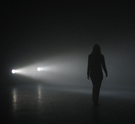
cinema sans image
In Mulholland Drive by D. Scott Hessels, three artists drove Los Angeles' famous Mulholland Drive with five types of sensors—measuring tilt, altitude, direction, speed, and engine sound. The captured data was used computationally to control two robotic lights in a dark room filled with fog. Two beams of light and the processed sound of the engine recreated the topology of the road as a new form of visual experience and sculpture—cinema without image.
Mulholland Drive is a light installation that translates the movement across a topology as two beams of light. Instead of direct human interaction, the work takes the sensed data (tilt, sound, and GPS) of traversing an environment and recreates the drive through angles, light, and sound. A passive interactive experience, the artwork emphasizes the spatial quality of light—it is cinema without image. Like cinema, direct data is captured, then edited, and shaped. However, here the environment directly defines the experience, using the geography computationally. In a sense, “Mulholland Drive” is a new media Earthwork and demonstrates how suddenly the rhythms, patterns, and random chance of the environment can be sensed through new media technologies and used to create new forms of visual experience.
Producing under the name Damaged Californians, Scott Hessels has released experimental art and commercial projects in several different media including film, video, web, music, broadcast, print, and performance for the last decade. His work has shown in international film and new media festivals, on television, and in contemporary art galleries. He recently completed a commission of three interactive films and six online movies for Australia and was honored with a career retrospective at the Melbourne International Film Festival. As a media artist, his installations have shown at CiberArt in Bilbao, the Hammer Museum in Los Angeles, and the Japan Media Arts Festival. Professionally, as Director of Information Technology for Fox Television, he was responsible for the systems, software, communications, and security for two television stations and two cable networks…a career he followed for 25 years. He currently teaches digital video at UCLA in the Design | Media Arts Department and is studying for his graduate degree in that field.
Posted by jo at 01:00 PM | Comments (0)
November 23, 2004
The Gambit
![]()
The Narrative Abilities of Flowers
The Gambit is a portable interactive animation sited in the lobby of the Westin-Bonaventure Hotel (John Portman, 1977). The medium of the project is a digital compass attached to a PDA ("personal digital assistant") with a two and a quarter inch by three and a quarter inch color screen and headphones. This apparatus worn by the viewer displays images of spaces normally inaccessible to the viewer's vision from within the Westin's lobby, in other words, as if you're seeing through walls with a kind of periscope.
The "seeing through the walls" has a shape, like Gordon Matta Clark's cuts through buildings. The shape is configured by animated still images and sound. The still images and sound tell a story. The story is of a hotel flower arranger, and of a parallel world where flower arrangements have archival and narrative abilities. The Gambit is a project of Kati Rubinyi.
Posted by jo at 09:45 AM | Comments (0)
November 15, 2004
Mobile SCOUT

"Our Automated Quirky Naturalist"
Mobile SCOUT A Mobile Phone and Web Public Art Project by Julian Bleecker, Scott Paterson and Marina Zurkow: are you in a concrete jungle or swamped by tourists? Who's around you, what do you see? A deer, a dump or a daydream? Saintly acts or sinful facts? Mobile SCOUT is a public art project that collects audio narratives of your local surroundings, personal rituals and public sightings. Using your mobile phone, you leave a voice message of your observations with the Mobile SCOUT Ranger, our automated quirky naturalist.
Turn your observations into a brief message about the flora (landscapes), fauna (characters) or behaviors (events) that populate your surroundings. Call the Mobile SCOUT Ranger - 1 (877) 564-3060 - he will guide you through the experience. [via]
When you call you'll:
* pick your mission (flora, fauna or behavior)
* pick two habitat attributes
* leave a recording
Further instructions for operating Mobile SCOUT are available at our online brochure. Mobile SCOUT defines place as being made of social habitats, not geography. Your recordings are organized into an audio/visual field guide according to the kind of space you occupy, be it play, work, nature, culture, public, private, branded or free speech. See the field guide and listen to recordings left by others by visiting the web site.
Mobile SCOUT was commissioned by "The Database Imaginary", an exhibition at the Walter Phillips Gallery at The Banff Center, and curated by Sarah Cook, Steve Dietz and Anthony Kiendl. Mobile SCOUT was produced with support from BeVocal for voice application hosting.
Posted by jo at 11:21 AM | Comments (0)
November 06, 2004
The Book of Rage and Longing
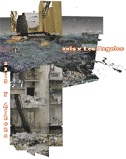
Raging by the Book
In ancient Greek comedy, parabasis named 'a part sung by the chorus, addressed to the audience in the poet's name, and unconnected with the action of the drama.' Calling themselves 'the bodies of rage and longing,' six artists and filmmakers based in the United States - Dimitri Kotsaras, Mr. Flo, Melissa Longenecker, Jennifer Nelson, Michael Wilson, and Natalie Zimmerman - have devised an ongoing, collaborative project to promote parabasis transnationally. With foci in Los Angeles and Athens, The Book of Rage and Longing stages an interrogative return to the putative birthplace of Western democracy. Viewers submit textual or visual rants, connected or unconnected with the daily unfolding dramas of wars worldwide. Unedited, these texts and images are projected on a rooftop facing the Acropolis. An 'interpretive/administrative committee' modifies these contributions, reshaping them into the titular book, segments of which a group of Greek singers then performs. Rea! d in the aftermath of this year's presidential election, these instances of parabasis have begun to seem rather more tragic than comic, as when one self-styled poet opines, 'From those who live like leeches on the people's lives,/ We must take back our land again,/ America.' - Ramsey McGlazer, Rhizome's Net Art News, November 5, 2004
Posted by jo at 10:25 AM | Comments (0)
October 28, 2004
Online Magazine of the Visual Narrative
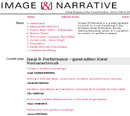
Image [&] Narrative
Issue 9. Performance--Guest edited by Karel Vanhaesebrouck--includes the following two articles:
Towards a theatrical narratology? Author: Karel Vanhaesebrouck Published: October 2004
Abstract (E): Traditionally narratology has always been associated with the study of texts and their constituting narrative elements. The analysis of theatre was then down-sized to the analysis of the theatre text. However, new developments in theatre and dance, in which the text is reduced to a mere peripheral element of the actual performance, ask for new analytic tools. How can a traditionally text-centred theory be transformed into a performance-oriented method for analysis, paying attention to the interpretive role of the spectator and taking into account the context the actual performance takes place in?
Performance and cognitive narratology Author: Jeroen Versteele Published: October 2004
Abstract (E): The last couple of years, (dance-)theatre companies that make use of ‘new media’ in their shows, have grown numerous and increasingly successful. This article focuses on some fragments in such productions that combine a theatrical setting with references to cinema language. It tries to distinguish three different relationships formal theatrical and filmic conventions can have with one another, and it relies on procedures in cognitive narratology to explain the effect such hybrids have on their audience.
Posted by jo at 11:13 AM | Comments (0)
October 13, 2004
CITYchromosomes

Fixed Points Gathering Impressions
The Stadschromosmen (CITYchromosomes) project gathered thoughts and impressions of particular points around Antwerp and its districts that were shared via SMS. There were 25 ‘text points’, each inviting the submission of impressions about that place. After six months, a selection has been compiled into a booklet that combines the different ‘text points’ and gives an alternative view on Antwerp and its districts. The booklet (in Dutch) is available for download in PDF, plain text and a special version for iPods. By November 15, a complete English translation will also be available under the creative commons license.
"It’s been a fantastic, city-wide...event, put together against the odds and with very little support...by Stefan Kolgen and Ann Laenen of C.H.I.P.S, and including brilliant things like them spending a night turning all the city’s buses into Stadschromosomen text points and leading a walk with 200 recent immigrants round the city, asking them to text in their feelings about the landmarks of their new home town." FishArePeopleToo
STADSchromosomen is CityPoems’ sister project in Antwerp, Belgium, UNESCO's World Book Capital 2004. CityPoems and STADSchromosomen have 'twinned' matching locations in Leeds and Antwerp, to let you use your mobile phone to be in two cities at once.
Posted by jo at 03:05 PM | Comments (1)
Cinéma
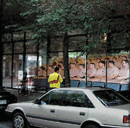
Shuttled Between Worlds
Cinéma is a multi-artist, cross-disciplinary performance presented in a storefront, converted into a theatre which looks out onto an urban streetscape. The audience inside this theatre watches and listens to video and sound elements while live performance takes place on the street outside. Narrative elements in Cinéma are in both French and English. Cinéma opens with texts which deal with the nature of the first word, the dominance of the ‘cinematic eye’ in our experience of the world, and the fragility of the human body. The myth of Orpheus and Eurydice, with its shuttle across the transitional space between the worlds of the living and the dead, is used as a structuring device for the piece.
Cinéma will be presented at SAT (Society for Art and Technology/La Societé des arts technologiques), 1195 rue Saint-laurent, Montréal [between René-Levesque et Sainte-Catherine - métro: Saint-Laurent]; October 12-15, 2004 at 8pm. During the day visitors can sit in the theatre observing the street while listening to an audio piece in which fragments of the performance soundtrack are adapted as an installation.
Thematically, the use of the myth is of interest in examining the very contemporary problem of the ability of art to influence the unfolding of events. What is the use of art in the face of political and social conditions which appear to be beyond our control? Can art create a window onto invisible forces which seem to control our lives? Can it open a process which allows us to approach spiritual and existential questions without falling into romantic clichés? In short, what is the potential relevance of art beyond its contemporary relegation to the role of diversion and entertainment?
Music: Rainer Wiens
Texts: Shauna Beharry, Andrew Forster
with: Monique Romeiko, Robert Schweitzer, Solomón Díaz, Michael Fernandes, Nathalie Claude
Posted by jo at 09:33 AM | Comments (0)
October 11, 2004
Platfrom

Routed Narratives
Platfrom, by Rachel Baker, uses the platform of the mobile phone within a very specific context - the train journey. A series of playful SMS messaging scenarios will make a relation between mobile phone and rail network as communication systems. Focusing on privatised, proprietary networks -the railway and the mobile phone -the project will invert them into opportunities for public and group interaction. It offers moments for train culture and SMS culture to integrate, taking advantage of a journey's incidental nature (delays etc.) with unknown consequences by creating a common gateway between train traveller and static web user and including them both in a narrative along a particular route. The narrative at this stage is dictated by the route from South to North and the contiguous cities and landscape. Read more [PDF]. Also read an essay by Matt Locke.
Posted by jo at 11:52 AM | Comments (0)
October 08, 2004
IMPLEMENTATION
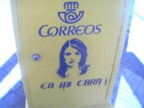
Distributed Serial Novel
Implementation is a novel about psychological warfare, American imperialism, sex, terror, identity, and the idea of place, a project that borrows from the traditions of net.art, mail art, sticker art, conceptual art, situationist theater, serial fiction, and guerilla viral marketing. The text is being written collaboratively by Nick Montfort and Scott Rettberg with some contributions from others. Its initial incarnation is as a serial novel printed on sheets of stickers that are being distributed in monthly installments.
"We will distribute these sheets to individuals, both personally and via post...We will deploy Implementation internationally and work to bring it into unusual geographical and cultural contexts. We will encourage the translation of texts into other languages and will host any translations that are done on the project website."
Posted by jo at 08:27 AM | Comments (0)
October 07, 2004
News Reader, by Noah Wardrip-Fruin, David Durand, Brion Moss, and Elaine Froehlich

Playing the Daily News
News Reader, the second of two textual instruments commissioned by Turbulence, is software for reading and playing the network news environment. Initially, it offers the current "top stories" from Yahoo! News which are always drawn from mainstream sources. Playing these stories brings forth texts generated from alternative press stories, portions of which are introduced (through interaction) into the starting texts, gradually altering them. "News Reader" is an artwork designed for daily use, providing a sometimes humorous, sometimes disturbing experience of our news and the chains of language that run through it.
"Two Textual Instruments: Regime Change and News Reader" is a 2003 commission of New Radio and Performing Arts, (aka Ether-Ore) for its Turbulence web site. It was made possible with funding from the LEF Foundation.
Posted by jo at 06:37 PM | Comments (0)
September 16, 2004
Categorising Multi-Channel Works
"Do categorisations help? After a post by Adam (see 'Another Transmedia Researcher') and my experiences with many 'networked narrative environments' (Andrea Zapp) at BEAP04, I've been thinking more about how and why multi-channel works can and should be categorised. With the great variety of works that have more than one modality (image, sound, text, object...) and works that can be experienced across channels (Internet, Film, Television, Radio, Games...) there is obviously a need to narrow the field of reference. I began by categorising according to whether a work with multiple channels can be experienced in the same space or same arts type or not. Hybrid art, particularly performance pieces with projections, sound, etc. can be viewed by the audience member in their seat. Whereas The Matrix franchise has films, games, comics and so on. These have to be experienced in different spaces, through different mediums. Henry Jenkins calls this type 'transmedia'. But then there is the further difference between works in different mediums that may or may not have a direct part to play in the unfolding plot.
posted by Christy on Cross-Media Storytelling on September 14, 2004 @ 10:49 PM
A website, for instance, may be within the storyworld (like the iRobot website that is actually a site pretending to sell the robots in the film. It does not have any impact on the unfolding plot in the film. It does however play a role in the audiences' experience of the film if visited before. So I then categorised works according to what degree of interaction they have between each other and reference each other. I concluded that we can have multi-channel works that need to be experienced in order to move through or progress the plot (transfiction), works that reference each other and extend the experience of each other but have no direct role to play in the narrative (transmedia), and works that are not necessarily part of the storyworld (a movie website or poster) which are commodities. I'm still not sure about how to term the last category... The works can of course be classified differently if you are observing a semiotic relationship, or even a tangibility continuum. But I was happy with these categories because my aim is to work for a poetics, a creators view of the works. A writer or designer needs to know which works are within the narrative and which are just commodities during the content creation stage.
But then what about forums, fan sites, adaptation comics and so on? These 'unauthored' works do not fit into my content creation approach. Or do they? The text does affect and indeed manipulate the reader in many way. The work can be found in the text and not just the reader or user. I utilise reader response, human-computer interaction, human-agent interaction, human-robot interaction studies in my content creation. The user of a multi-channel work is also affected by reviews, forums, gossip, news and so on. They affect their experience of the work. Where do these community or reader/user/interactor reactions fit into the model then? Well, they do if I view the work as the sum of the original designer, the content, the medium, and the viewer/reader/user/interactor.
So now I see multi-channel works as being categorised by two co-ordinates: narrative relation and stage of creation.
X = transfiction, transmedia, commodity.
Y = pre-publication, initial publication, ongoing publication.
What about a Z? There has to be a Z! Many works and papers presentated at BEAP04 got me thinking about the different types of users/viewers/experiencers/ of a work. In Paul Sermon's At home with Jacques Lacan (2004) [John Curtin Gallery + Central TAFE] the many possible degrees of interaction was evident. The telematic work involves two rooms at different locations. Each is a lounge room with a couch that has a television screen with the image of the couch. When you sit on the couch you can see yourself. When a person at the other location sits on the couch you can see them sitting beside you, and likewise. Together you make up the tv image that is also displayed on another tv for the bystanders to watch as well. Here we have the interactors (the people participating in the scene creation) and the people watching the television image and the interactors, and also people watching via the web. All of these people are experiencing the work, in different ways, and different locations. So here I could categorise them according to proximity to the primary work (the actual loungeroom) -- but there are 2 loungerooms and why are they priviledged over the web experience? So how about role in the creation of the work: a driver and a passenger metaphor perhaps? But there are 3 or 4 groups in this work. According to the medium they experience through could be a system: users (on the web), audience (watching performers and tv), performers/interactors (in the work). A user on a website can actually have an involvement in the creation of the work in other peices so this system doesn't transfer too well. What about the author and the medium then too?
Any suggetions?"
Posted by jo at 07:06 PM | Comments (0)
September 14, 2004
UpStage

UpStaging Performance
A new medium for online performance, theatre and storytelling is now in its first release. UpStage is a web-based venue and tool for artists to compile different digital media for textual and audiovisual communication into a live performance, in real time, for online audiences.
The first release of the software was launched on 9 January 2004, and online walk-throughs were held on in February to give people an idea of how UpStage works from the player's perspective. These sessions will be continued on a regular basis, lead by the members of Avatar Body Collision. If you are interested in having a hands-on experience with the software, and participating in live improv sessions, email colliders at upstage.org.nz for further information and to be notified of times. Visit the UpStage foyer, from where you can access a sample stage.
Currently, UpStage is being used for WorldX, a virtual exchange between schools in the UK and New Zealand, and DTN2, the first cyberformance using UpStage, was performed live from the Machinista Festival in Glasgow on Sunday 9 May.
Posted by jo at 06:09 PM | Comments (0)
September 07, 2004
Two Textual Instruments

Playing Text
Today, Turbulence launched Two Textual Instruments, Part 1: Regime Change by Noah Wardrip-Fruin, with Brion Moss, David Durand, and Elaine Froehlich. "Textual instruments make text playable in a new way. At first, as one encounters their workings, they are toys for exploring language — more flexible than link-node hypertext, more responsive than batch-mode natural language generators. With growing experience, these instruments can also become tools for textual performance.
The two instruments we are constructing operate using the statistics of n-grams, a technique used for textual games for more than 50 years (the first game appearing in Claude Shannon's 1948 "A Mathematical Theory of Communication"). These n-grams are chains of words, and these instruments use shared chains between documents as "bridges," allowing movement from the text of one document into a body of text created from others (and back). By using this approach to make text playable, by taking the logic of word chains to defamiliarizing and sometimes humorous extremes, Regime Change (and the forthcoming News Reader) provide ways to perform William Burroughs's injunction to "cut word lines" — to break the chains of conceptual association that say this follows from that, regardless of the logic case, but rather because of the constant association of these words in the speech we hear and echo to others on a daily basis."
Posted by jo at 12:37 PM | Comments (1)
August 25, 2004
contagion
Jill of Jill/txt has observed a new kind of narrative emerging from the net, what she calls "distributed narrative" or "viral narrative" or sometimes, "contagious narrative." It's narrative that doesn't try to be a total or complete artwork but sends "fragments and shards across media, through the network and sometimes into the physical spaces that we live in." It's a "book without end." She likens it to distributed computing, which spreads processing across many computers, attaining as much or more power than is possible in a single supercomputer.
Jill references Tim Etchell's (see also Forced Entertainment) work, Surrender Control, where the reader receives SMSs asking her to do things that carry the narrative into her physical world.
So with "viral narrative." It asks the reader to take it up and pass it on to places it has never been. To become a performer on its behalf.
Jill will be writing more about this viral narrative in the upcoming months.
Posted by newradio at 11:47 AM | Comments (0)
texting glances
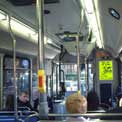
interludes from the cityscape
A collaboration between the networks and telecommunications research group at Trinity College, and the Media Lab Europe - both based in Dublin - this project uses the city as a place to perform narratives with your mobile phone. Viewers can MMS to upload images from around them into a live database, or, by SMSing keywords, download snaps from the archive at any time. more info
(Posted by Nathaniel Stern)Posted by at 10:44 AM | Comments (0)
August 03, 2004
Lag and Flux as Starting Point
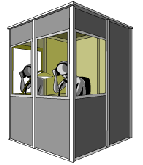
Simultaneous Translation
John Roach is working on a multilocation networked audio performance called Simultaneous Translation which will involve players from USA, Spain, France, Italy and Germany. The first performance is slated for November 2004 in Madrid Spain. Other manifestations are planned for NYC and Trondheim Norway.
"In my first foray into networked performance entitled Negative Space it was the limitations of the streaming media which made the project difficult and exciting. This lag and flux is the starting point of Simultaneous Translation in which the idea of flux and slippage is put in the forefront and is compared to the slippages and mutations of language as it evolves. Another point of comparison is to the delays that occur on the web as data passes from router hop to router hop. In fact traceroute data will be used to manipulate audio streams from the remote participants, making the delay of the internet itself an active player in the project."
Posted by jo at 05:03 PM | Comments (0)
Painting the Street
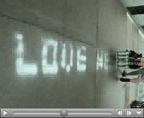
Bikes Against Bush
From "Bike Writer Pedals for Protests" by Leander Kahney, Wired News, August 2, 2004
New Yorker Joshua Kinberg is a bike messenger of a different stripe. Instead of ferrying legal papers between lawyers, he uses a homemade, wireless, bicycle-mounted dot-matrix printer to spray protest messages in the street...[Bikes Against Bush is] "painting on the street, but on the Net, too," said Kinberg, a post-graduate student at Parsons School of Design.
Continue reading at Wired.com
Posted by jo at 10:37 AM | Comments (1)
August 01, 2004
Mixed Reality in Los Angeles
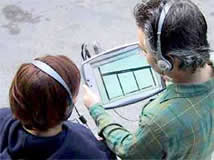
GPS Walkabout
34 North 118 West plays through a Tablet PC with Global Positioning System receiver and headphones. GPS tracks your location to determine how the story unfolds - in real time, in real space, as you traverse the sidewalks of Los Angeles.
Description of Tour: Imagine walking through the city and triggering moments in time. Imagine wandering through a space inhabited with the sonic ghosts of another era. Like ether, the air around you pulses with spirits, voices, and sounds. Streets, buildings, and hidden fragments tell a story. The setting is the Freight Depot in downtown Los Angeles. At the turn of the century Railroads were synonymous with power, speed and modernization. Telegraphs and Railroads were our first cross-country infrastructures, preceding the Internet. From the history and myth of the Railroad to the present day, sounds and voices drift in and out as you walk. Read Narrative Archaeology by Jeremy Hight.
Posted by michelle at 06:07 PM
July 28, 2004
Networked Local Performance

Texterritory v.2.3
Texterritory is a playground performance concept in which the audience has control over physical bodies (dancers and musicians) along with lighting, music and midi system at specific times during the performance. Their influence alters the direction of each performance. Texterritory was performed in May 2003 at the Mumford theatre in Cambridge (UK). Its plot is described as follows:
"Grace, a Legal Secretary arrives home early to prepare herself for her first real date with Jerome. She’s just bought a new pair of shoes to go with one of those outfits. At the moment she drops her keys on the kitchen table, the text arrives from J — he has been delayed but will be there soon. From optimism to despair from knowing to kneeling in prayer, Grace's dilemmas and insecurities unfold as she figures out what to do with this unexpected time on her hands. Together with the influence of the audience she decides exactly what to wear, who she might call if he doesn't show up as well as trying to reassemble a photofit image of what Jerome really looks like."
The multi-media, non-linear narrative "is told through texting/photo-messaging, dance, music, spoken word and animation."
Texterritory makes use of a mobile gateway created by new media company Digit. Computers that tally the results of text messages sent to the audience and derives instructions for the performers from them. It thus gives the audience a certain amount of interactive control over the physical bodies, music and lighting at specific times during the performance.
Posted by newradio at 05:52 PM | Comments (0)
July 26, 2004
A PDA walkabout in Joyce's Dublin
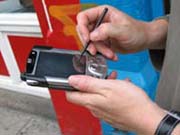
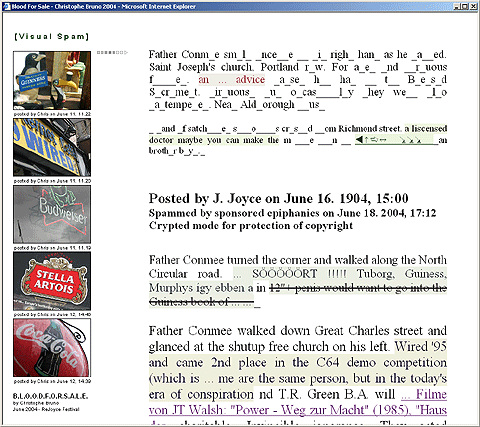
The program allows these "sponsored epiphanies" to disturb and transform the text of Ulysses, "Wandering Rocks", by incorporating themselves into the text. The real-time evolution of the text is displayed and graphically animated, sentence by sentence, projected in different places in Dublin, and online. By the end of the performance, carried out over several days, the original text by Joyce is almost entirely replaced by the "sponsored epiphanies."
Posted by michelle at 06:26 PM | Comments (0)
